Posts Tagged: wildlife


Checking Up on the Loons, et al
Let’s catch up with the Middletons and the Eastons, I’ve been to visit them – and their pondmates – a couple of times.
Tuesday evening I’ll be at the Loch Lyme Lodge in Lyme, NH to show lots of nature photos and present An Uncommon Look at the Common Loon. For details, timing and prices, see LochLymeLodge.com.
And the League of New Hampshire Craftsmen’s Fair opens August 3 and runs through August 11. I’m in booth 718. I’ve got lots of new images and favorites from years past. Come on by to have a look. If you’ve never been to the Fair, you’re missing a real show. Besides having some of New England’s best looking photographers, there is amazing work by all sorts of craftsmen, the skill is simply amazing. All the details about the Fair on the League’s site: NHCrafts.org.
The Eastons were receiving visitors when I showed up on July 14. Mom was tending the nest and dad was enjoying a peaceful morning. For a time.





Dad checked in on Mom and everything was peaceful when I left.
July 17 was the first day their eggs might have hatched. I went up to see how they were getting on. (They lost their first clutch, likely due to flooding.)










I went back on July 19 to see if the chicks had hatched.


On the 20th, I checked in on the Middletons. There was a thick fog when I put in and finding the family was a challenge. Until they swam out of the fog right in front of me.
The last time I visited, I was a bit concerned about the smaller chick. The larger chick had been pecking at him? constantly when he was with the family. The smaller chick had been separating from the family far further than normal at this age. This time, both chicks were traveling with the parents and the sibling rivalry seemed under control.












This morning, I headed back to check on the Eastons. There were several deer and a nice bull moose out and about. When I arrived it was a very pleasant 56° with a dead calm wind leaving the water with almost perfect mirror reflections. There were just a few whisps of clouds above and it promised to be a great sunrise on the pond.




A wren has claimed one of the boxes on our deck. She’s spending her morning alerting the world that this is her corner and she isn’t to be disturbed. For sheer volume of song per ounce of bird, there can’t be any noisier bird than a wren.
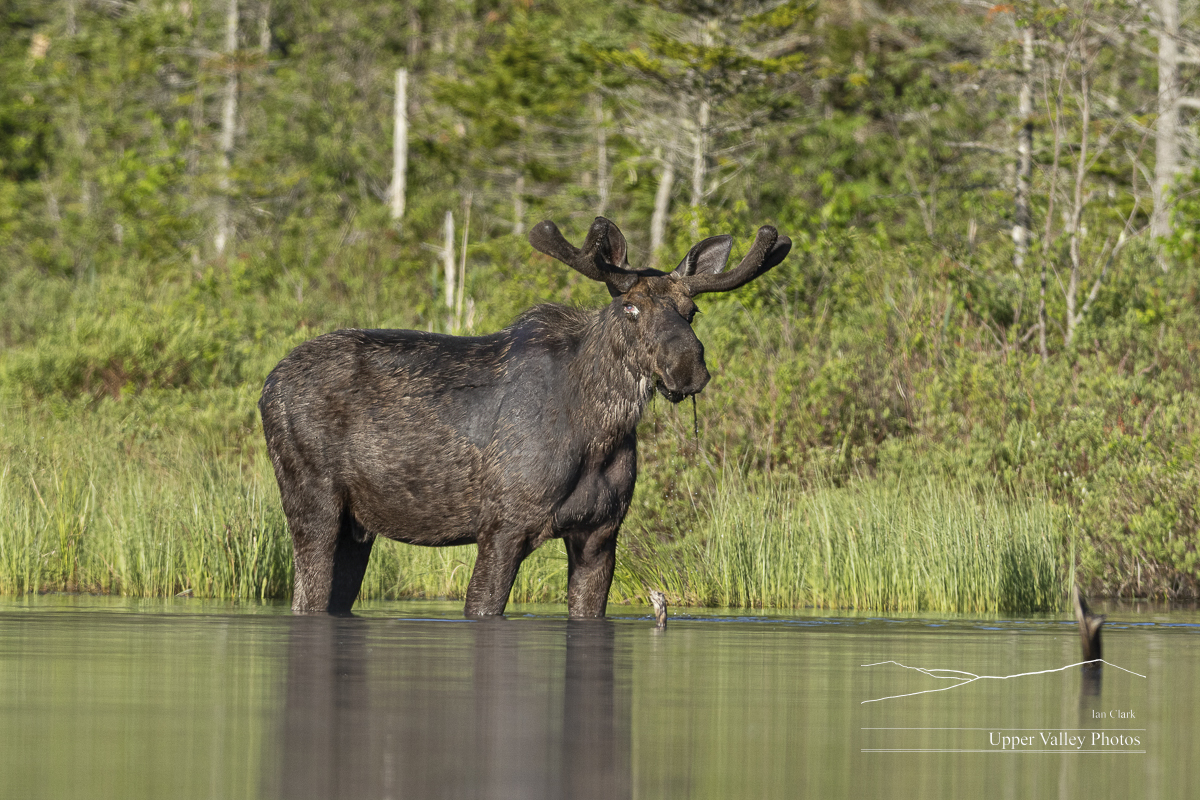
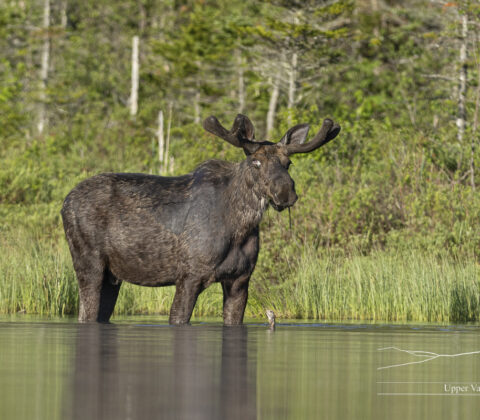
An Update on the Loons’ Ponds
The weather has kept me from getting out the last few days. The Westons should have chicks by now, the Middletons are due momentarily and the Eastons will be on their nest another couple weeks. Let’s see what else has been happening.
The Tenney Memorial Library will host me for my slideshow, An Uncommon Look at the Common Loon on Sunday, June 23, at 2:00 p.m. Free and open to the public.
Before we get to the ponds, take a look at what my game camera caught. This camera was set up in my blind watching one one of the fox dens. Guess I’m glad I took that morning off.
There’s less activity around the ponds. Most songbirds are on their nests or feeding chicks and not out and about to be photographed.
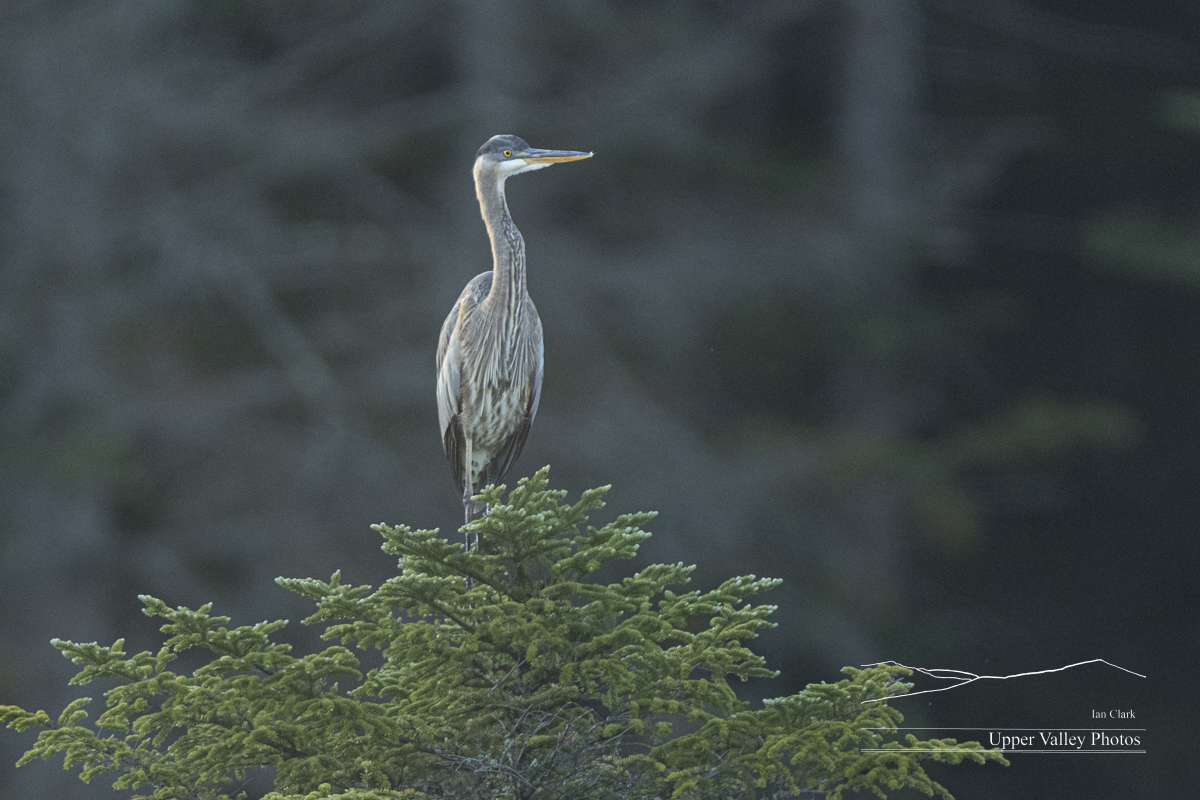


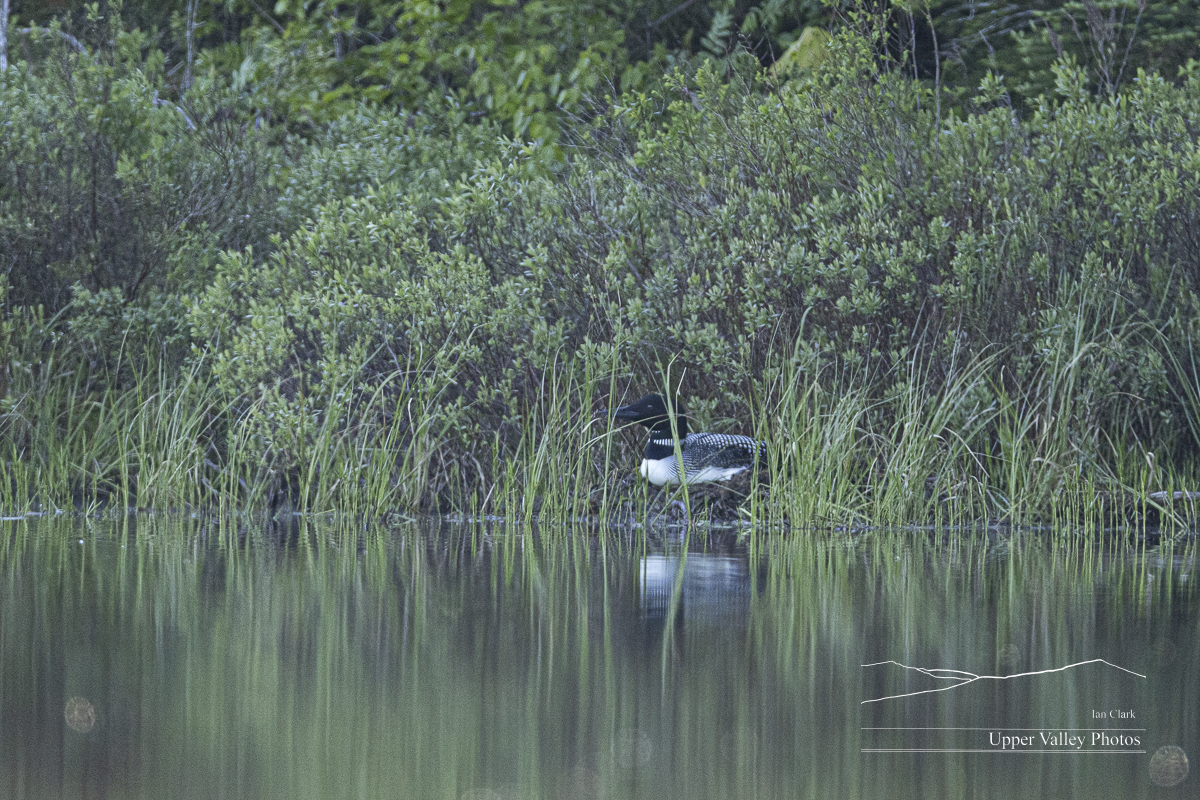
The resident osprey was interested in fishing in the relatively shallow water near the loons’ nest. The off-duty loon seemed to be moving out of the way for the osprey to dive. Professional courtesy or just not wanting to be nearby when the osprey dove? The osprey finally caught breakfast well down the pond.
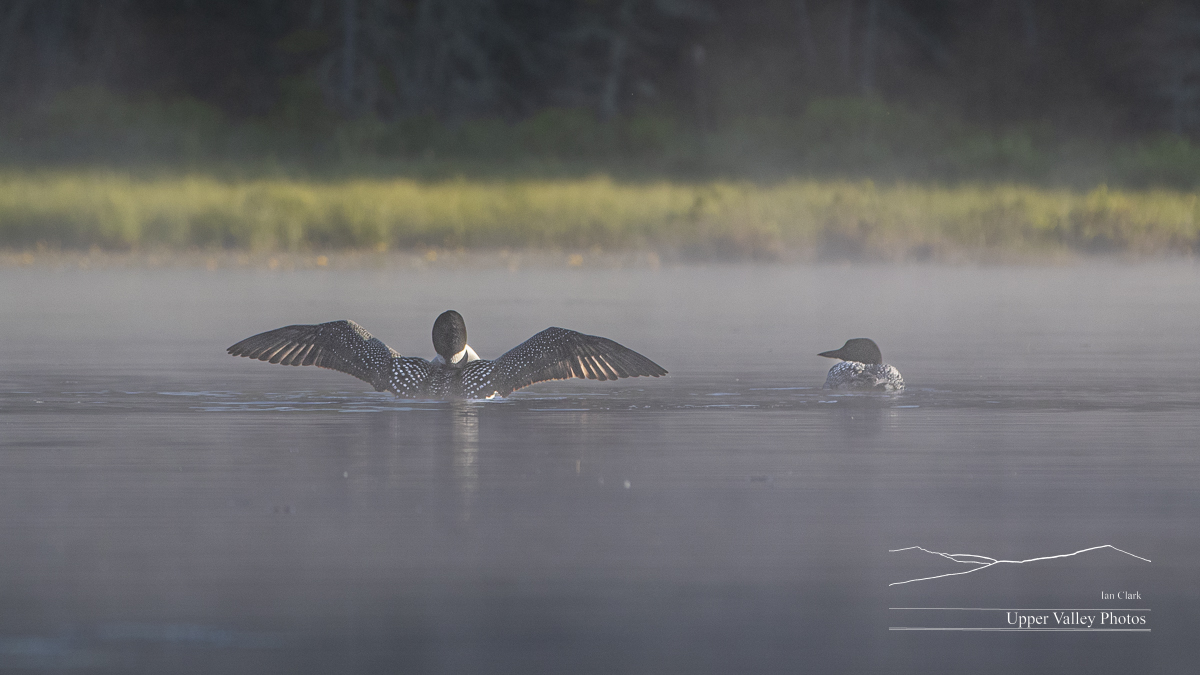
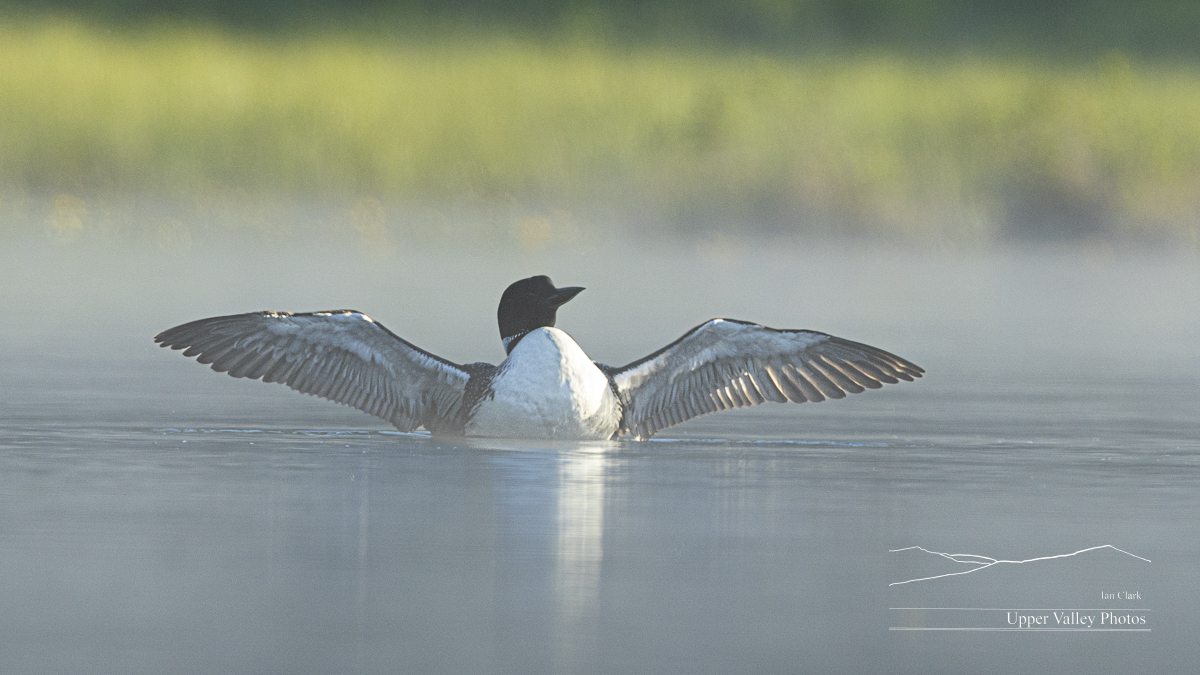
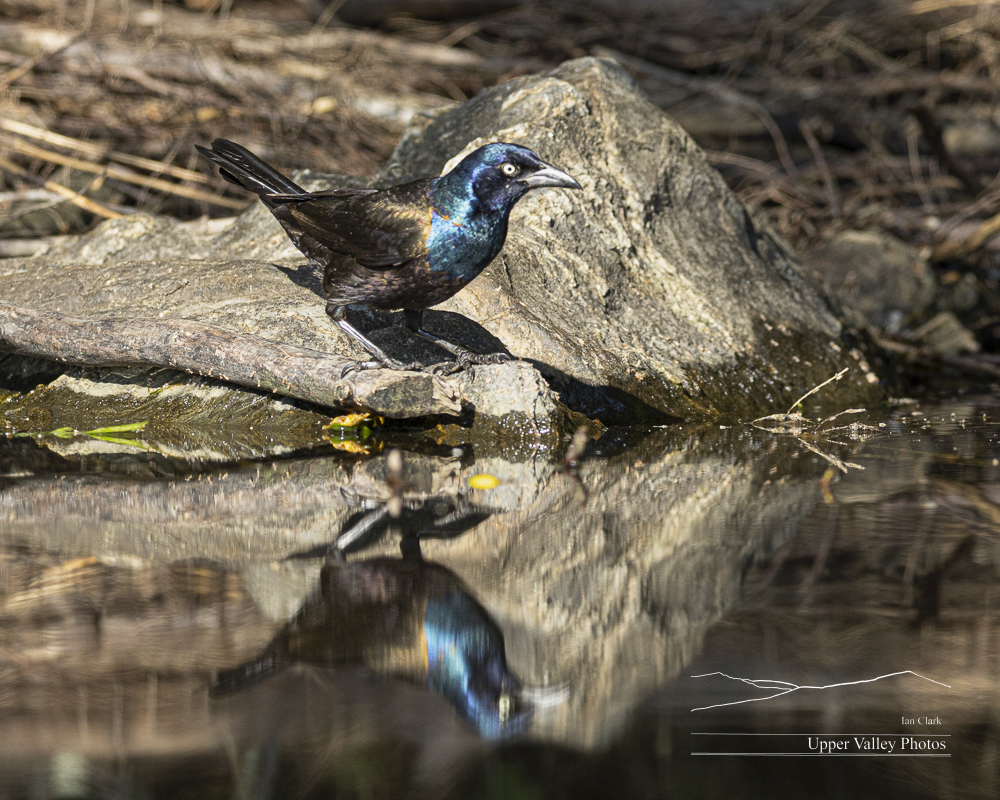
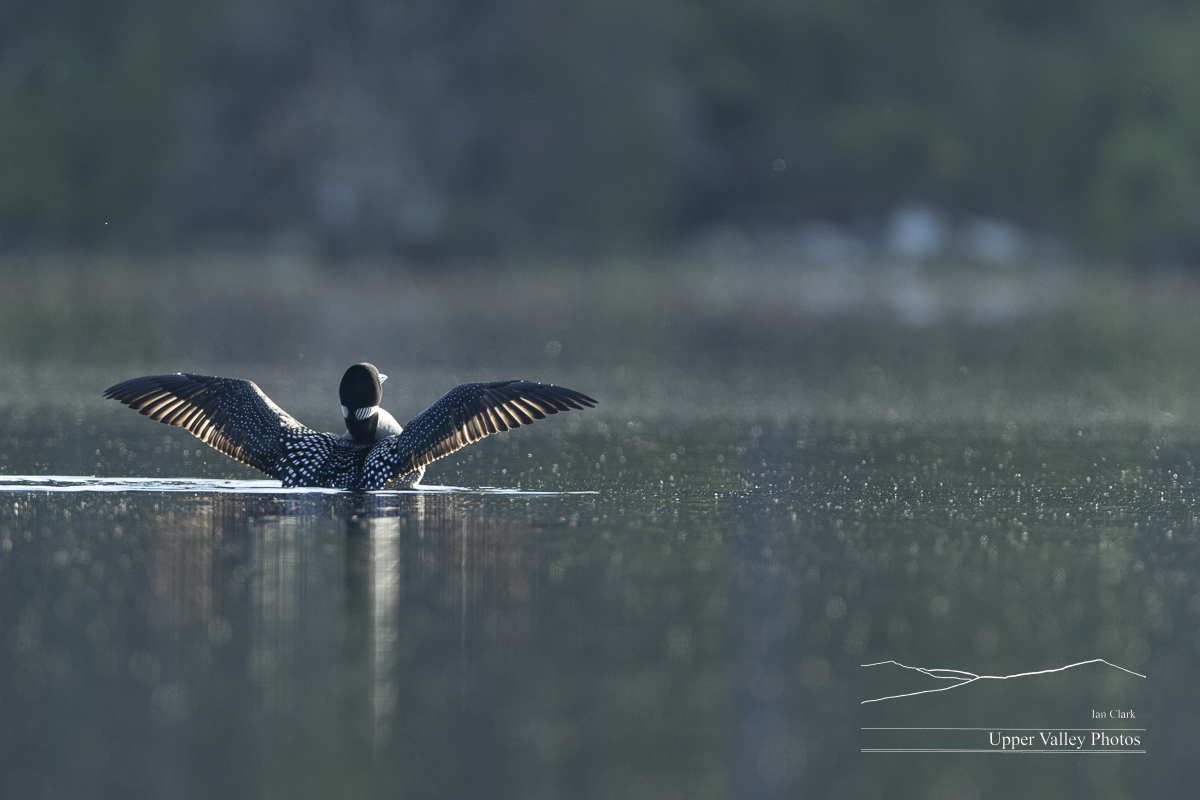
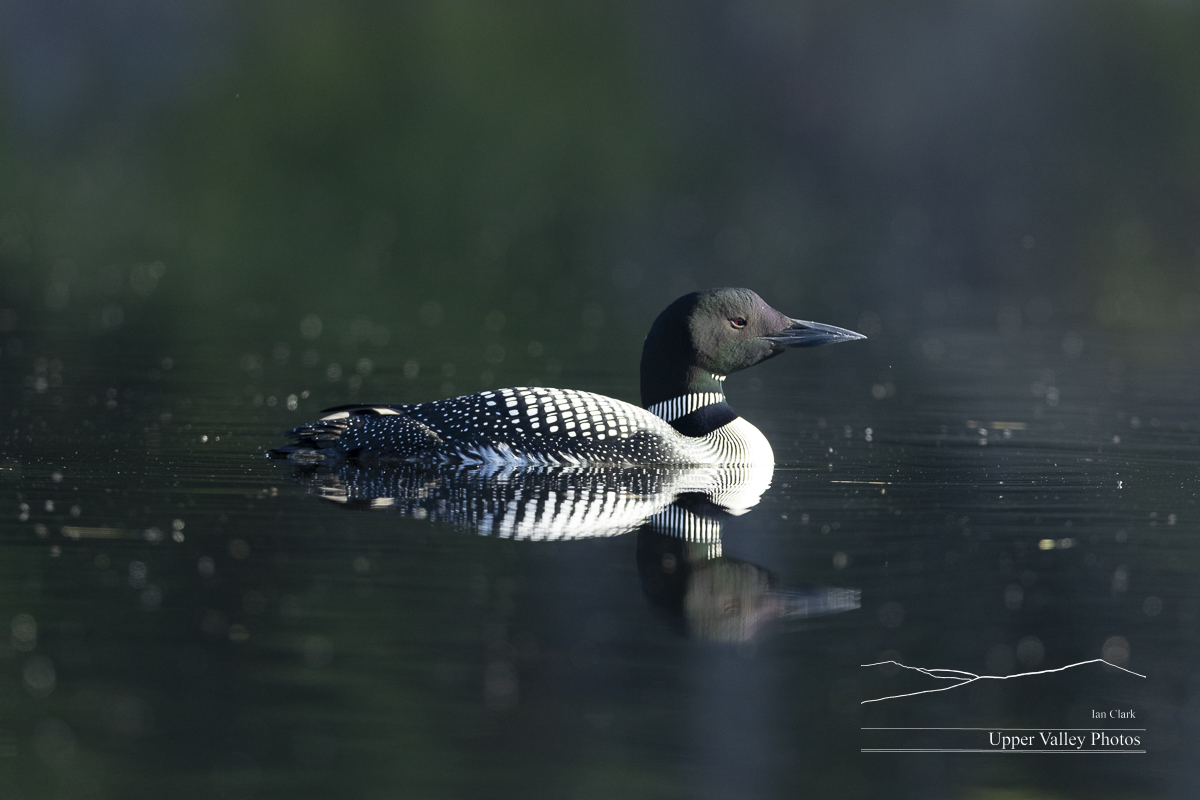
I’ll be out to check on the chicks as soon as the weather breaks. Check back soon to see how they’re doing.


Peregrine Falcons Have Returned
Peregrine falcons have returned to Vermont and are getting ready to nest. I was able to visit a pair in Caledonia County this morning. They spent some time seemingly discussing their nest site, with one promoting last year’s site, the other agitating for a ledge a couple dozen yards to the north. They interrupted the discussion to head out for a flying courtship display. Unfortunately, the display was out of camera range.
Peregrines were extirpated (locally extinct) in Vermont after the introduction of DDT. The state started a recovery effort in 1975 and the population is increasing again. The last year I could find figures for was 2022, when there were an estimated 60 pairs nesting in Vermont.
Peregrines are thought to be the fastest animal on earth. They can dive in flight. Estimates online range from 200 to 240 mph, without my finding anyone who claims to have actually clocked a flying falcon. But, seeing one dive is indeed impressive and the estimates are believable.
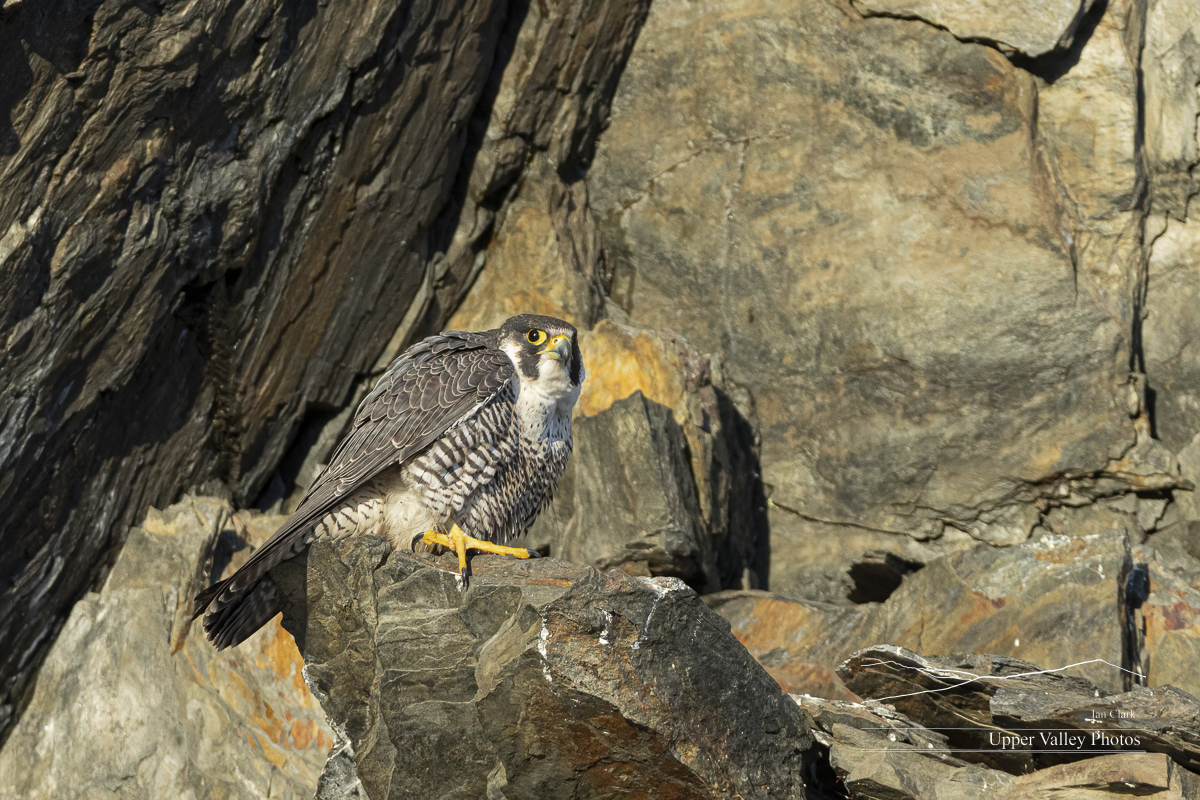

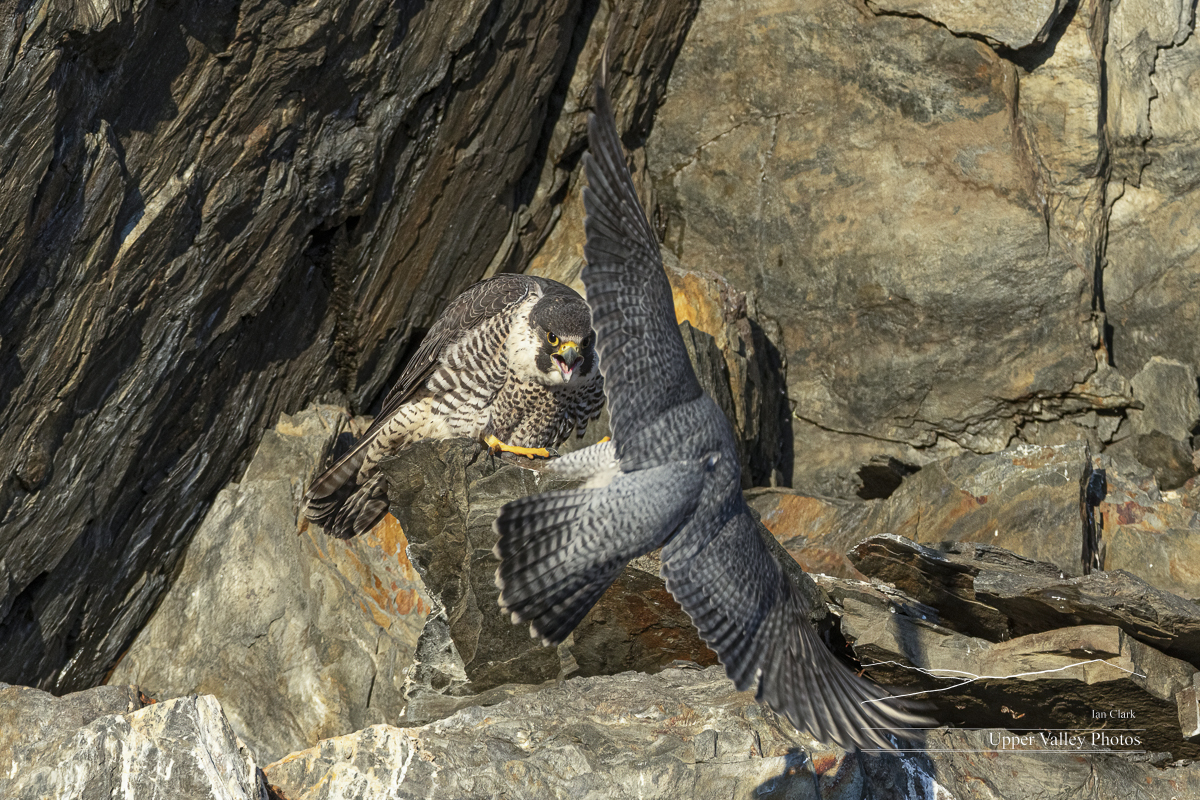
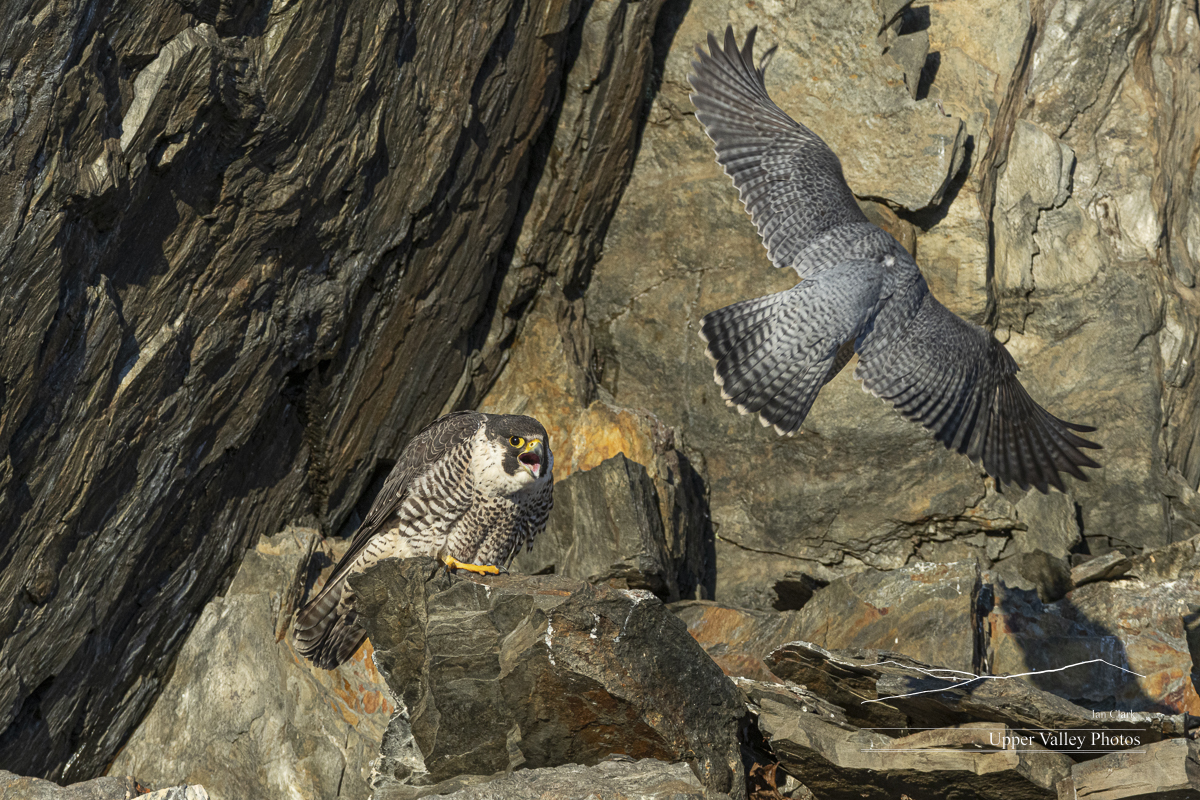

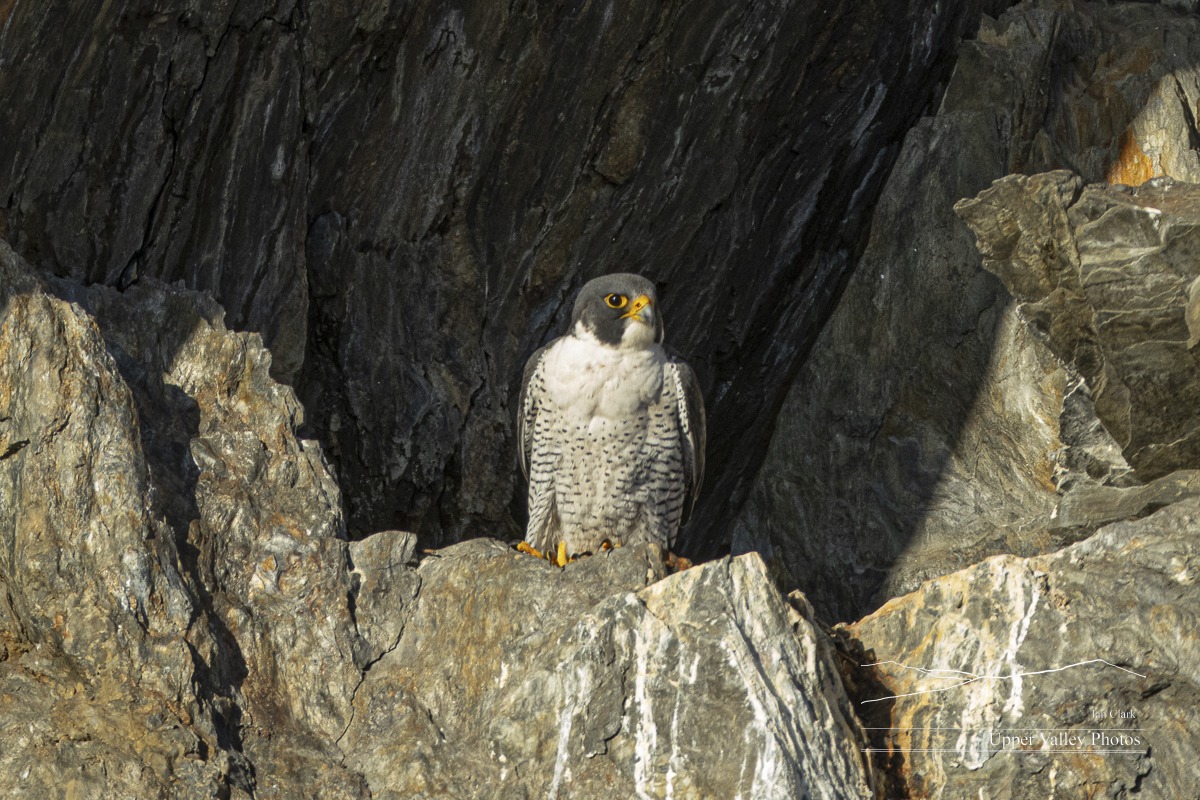

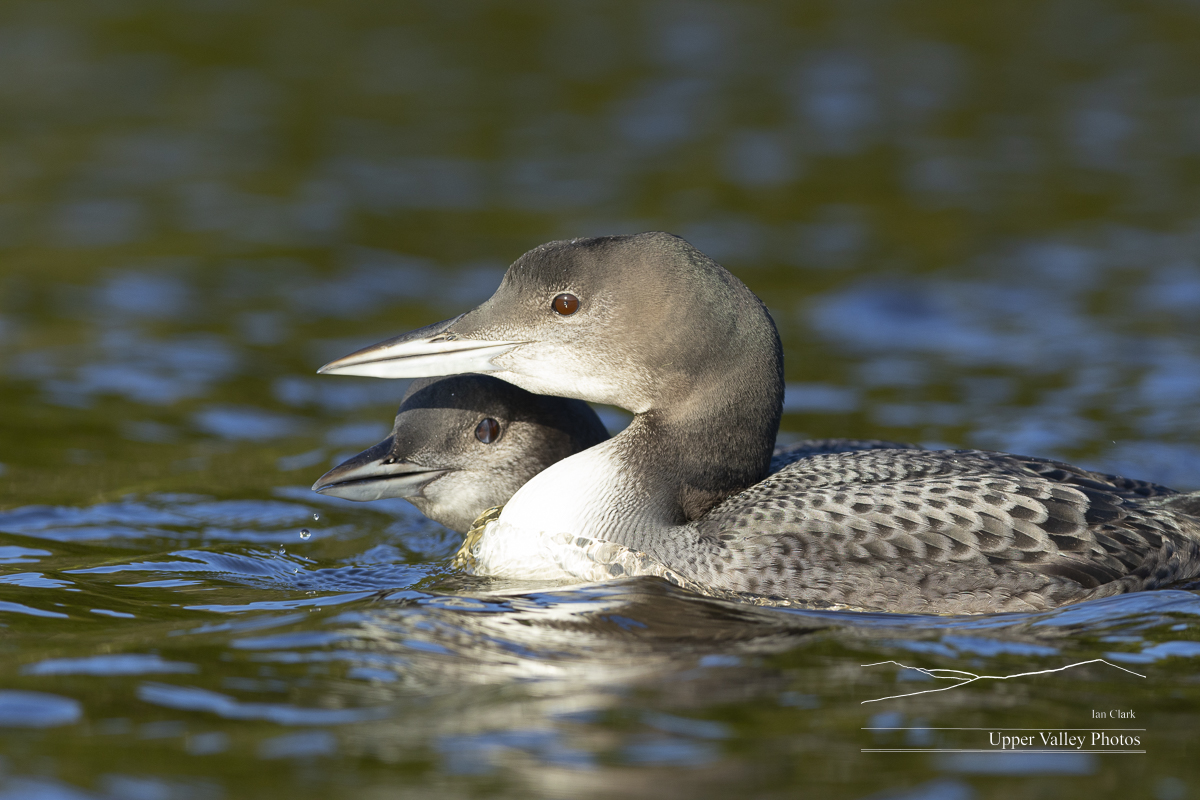

Loon Chicks at 10 Weeks
Monday morning there were stars above and a thick fog over the river in the valley below. I decided to risk a trip to visit the Eastons. Most of the trip to the pond was slow going through the fog. As I started to climb towards the pond, I rose back above the fog to find a beautiful morning.
Dad was foraging by himself near the boat launch, he paddled in close to hoot softly to me before returning to feasting on crayfish. Mom called a couple times while I was getting the boat in the water. This is the pond where Dad is banded, letting me tell who is who if I can see a leg.

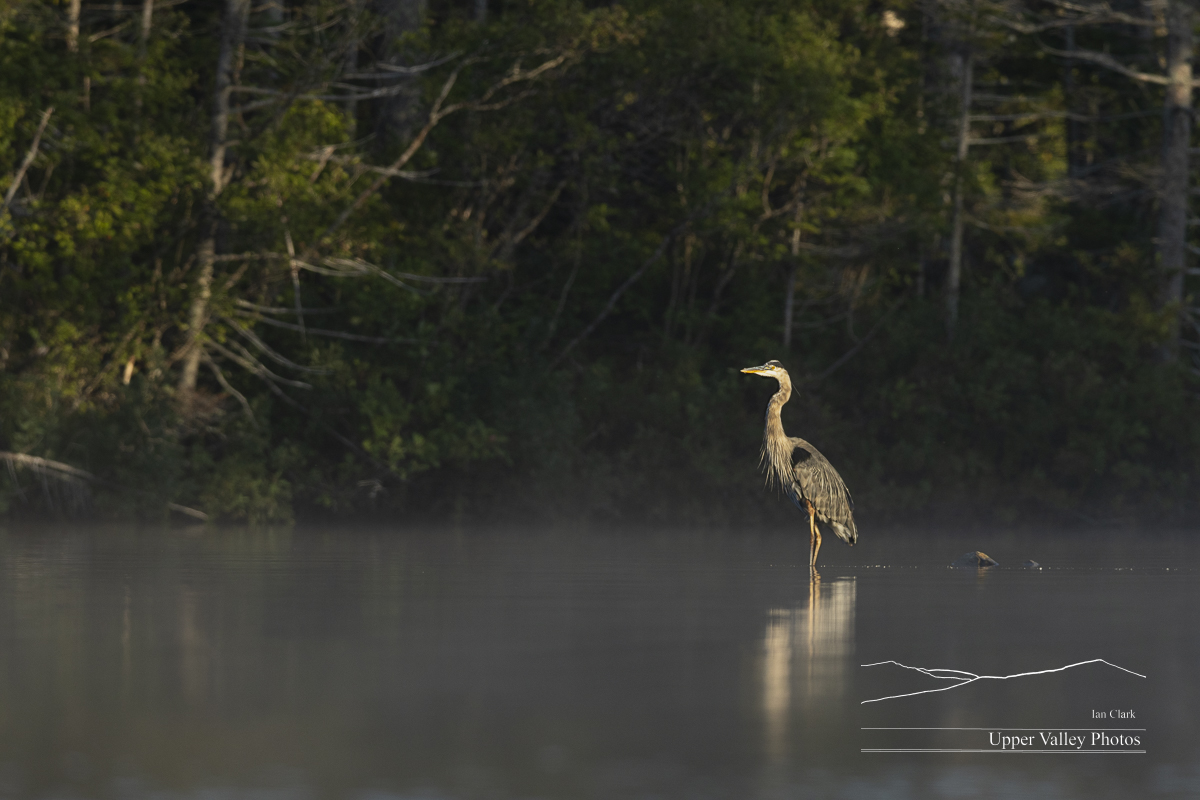
The chicks were keeping mom busy. They’re very demanding, poking and pulling feathers whenever she got near. She didn’t spend much time on the surface, she’d dive quickly when a chick got near. I’m convinced this is why the parents leave the pond before the chicks – they just want some peace.
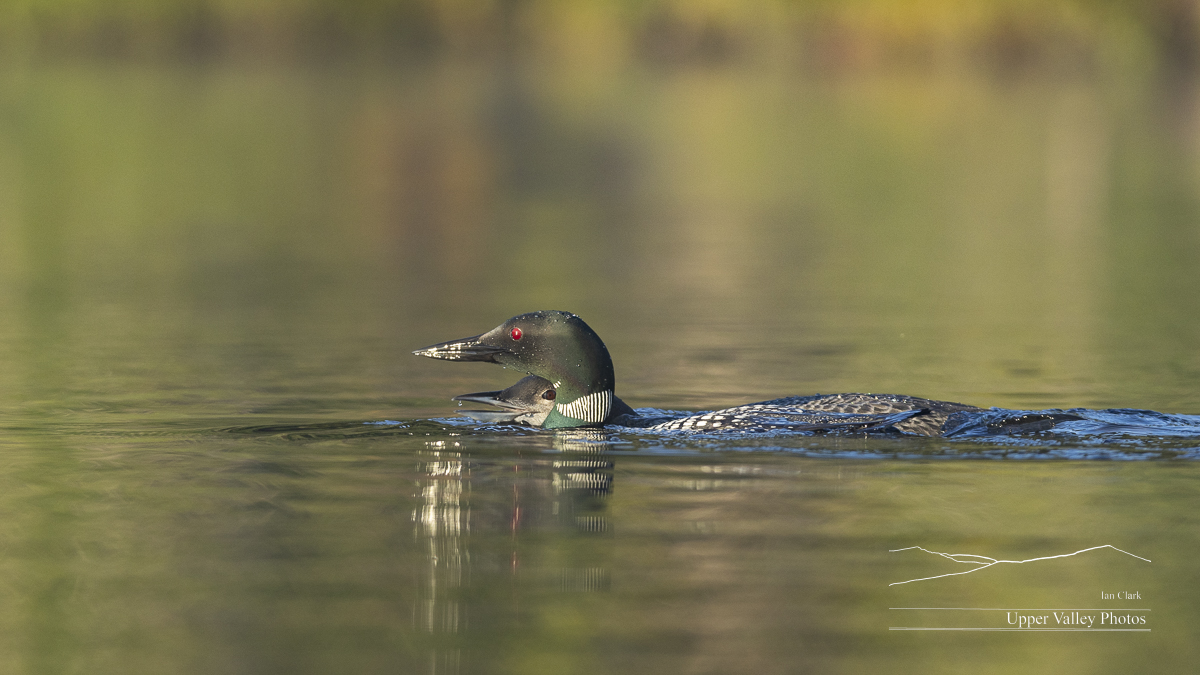
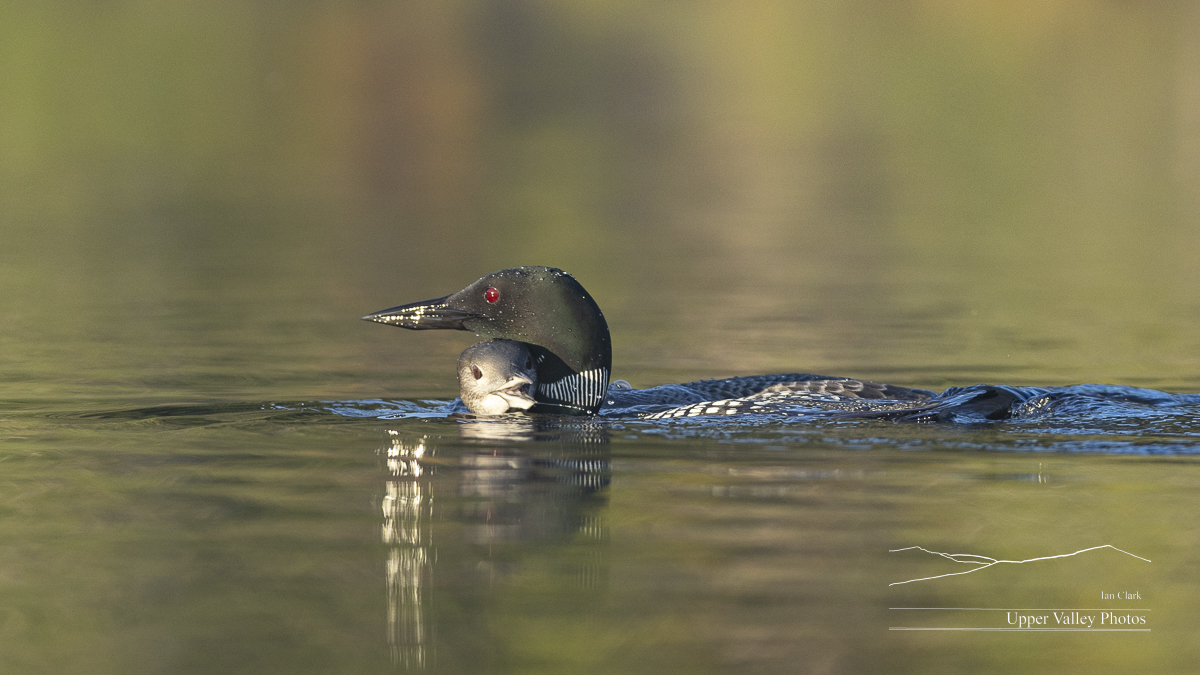

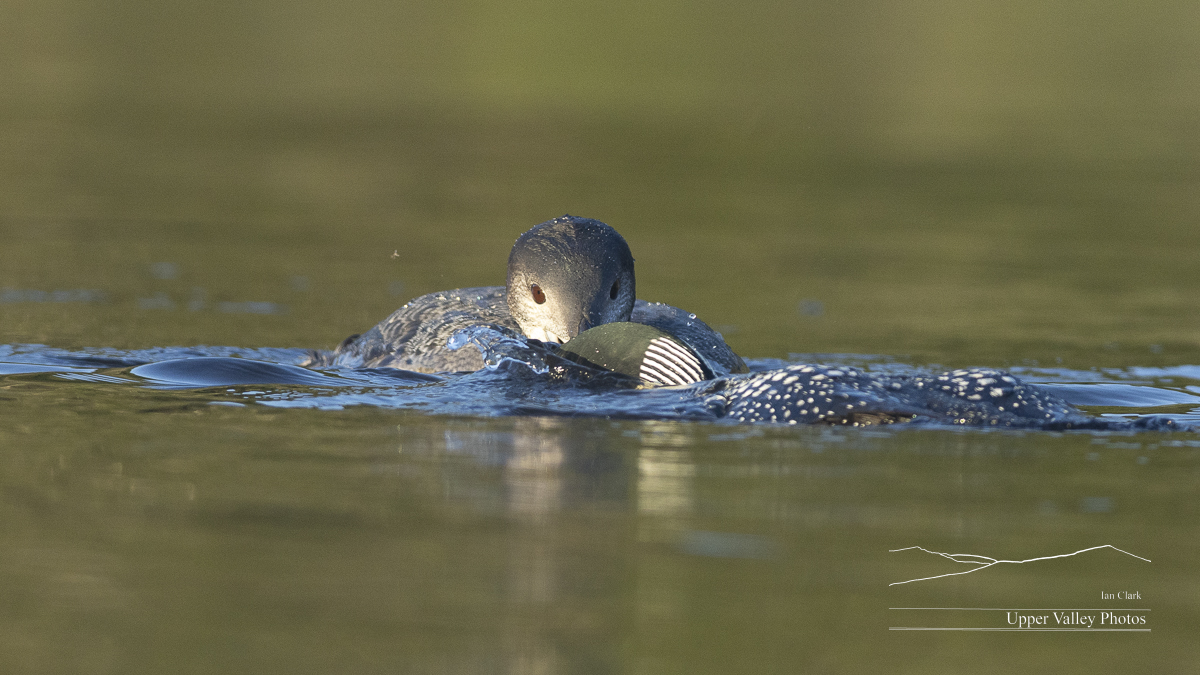

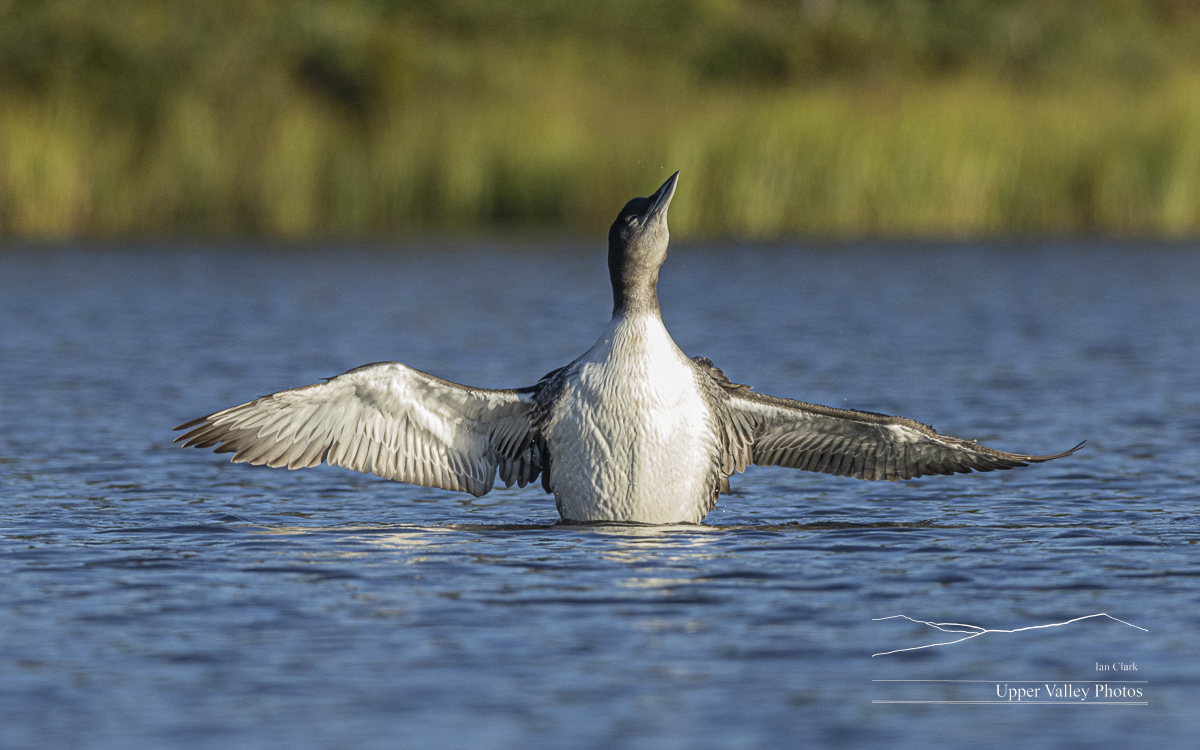
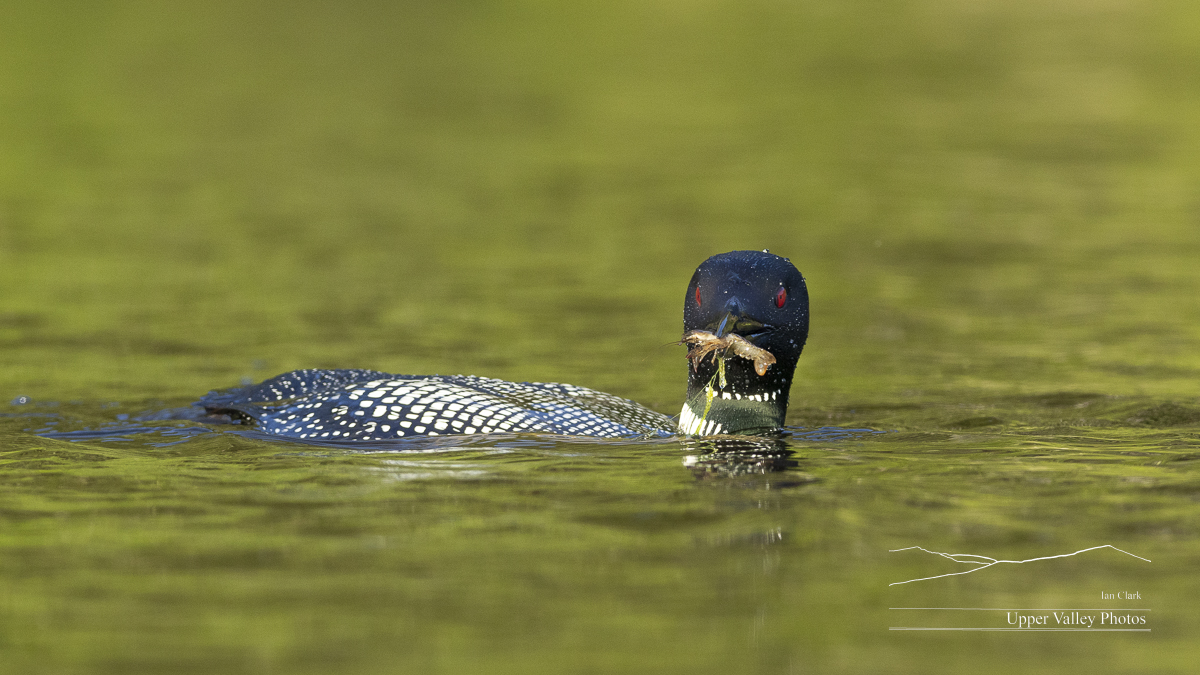


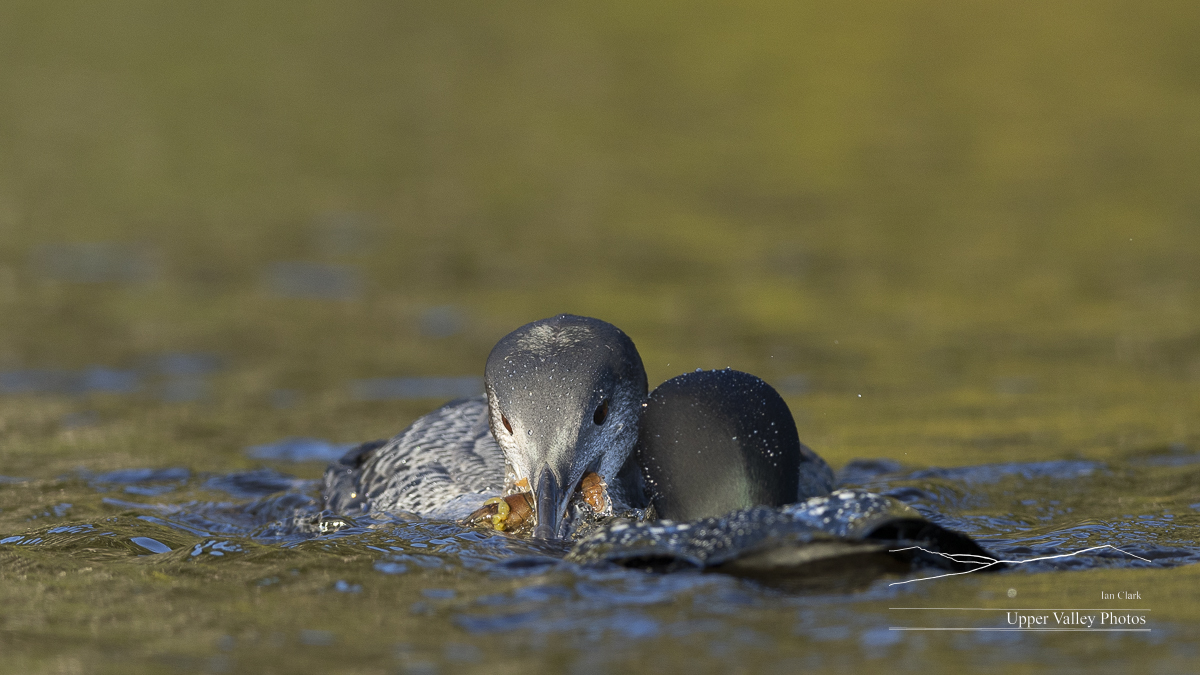
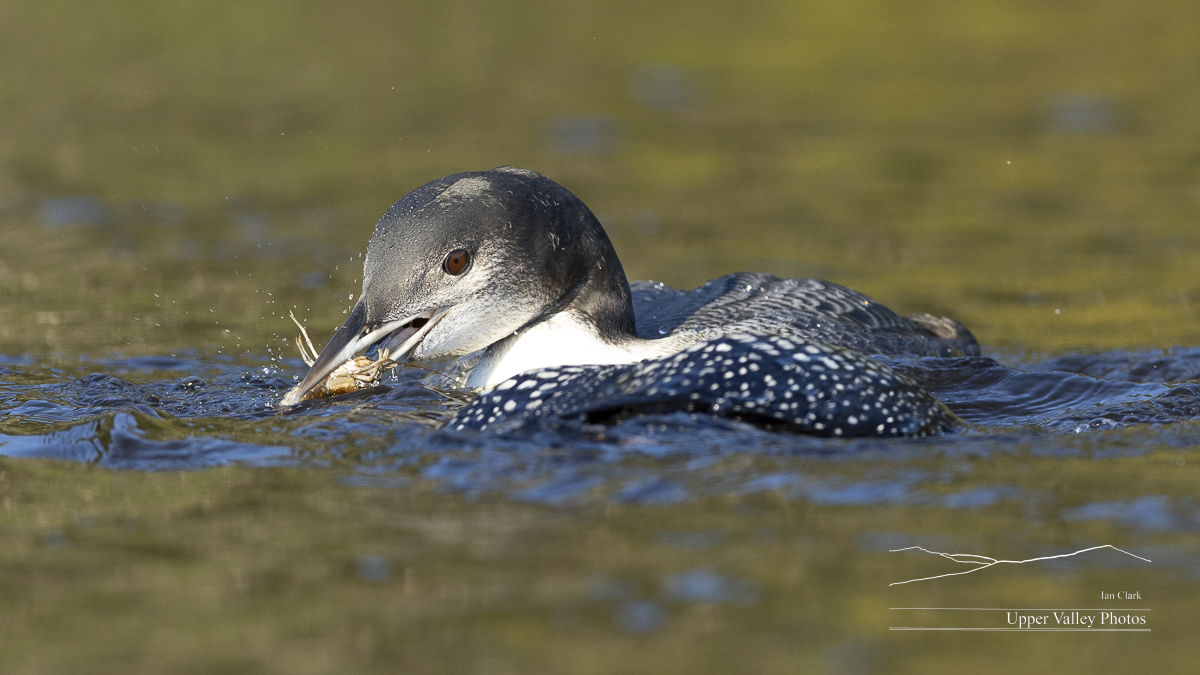

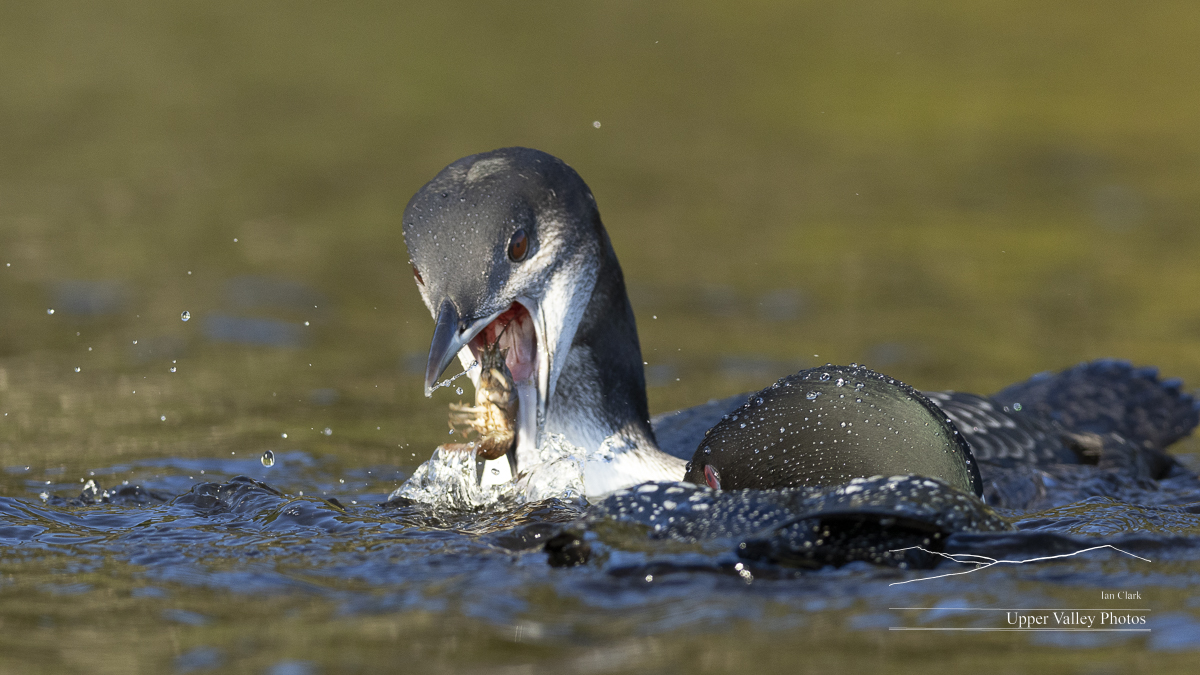

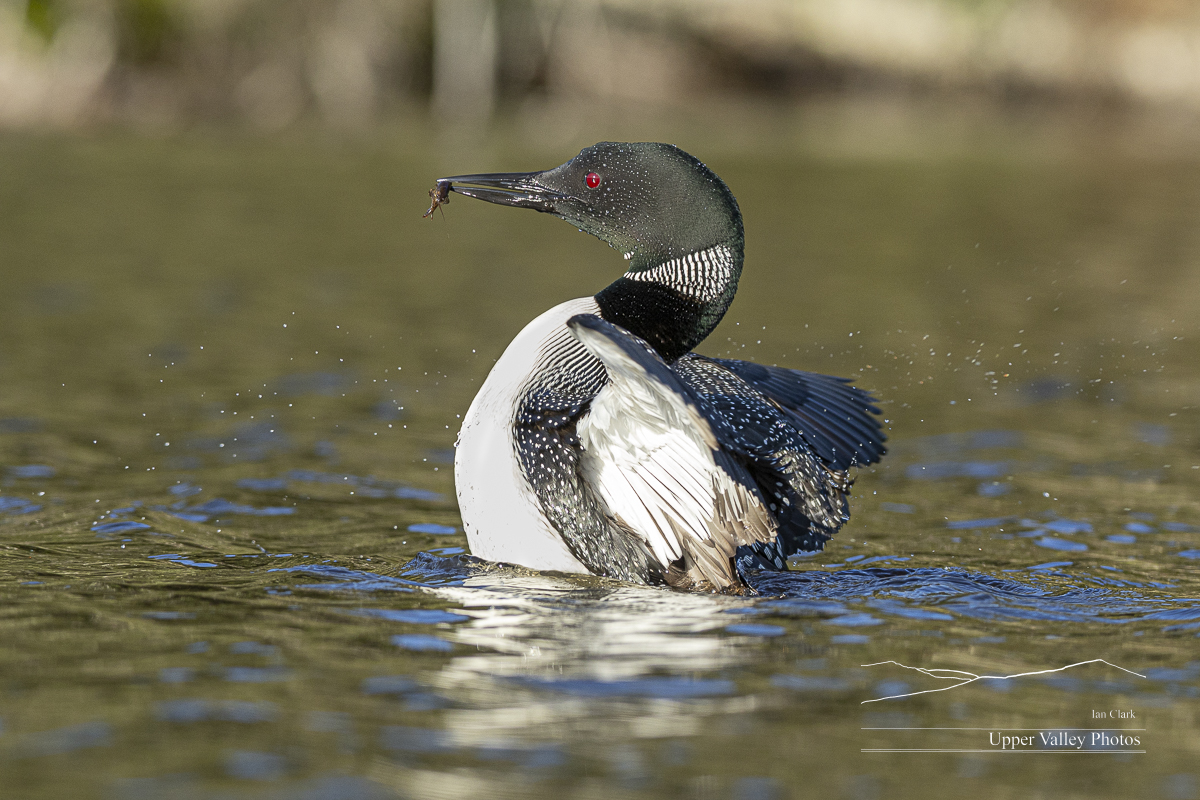


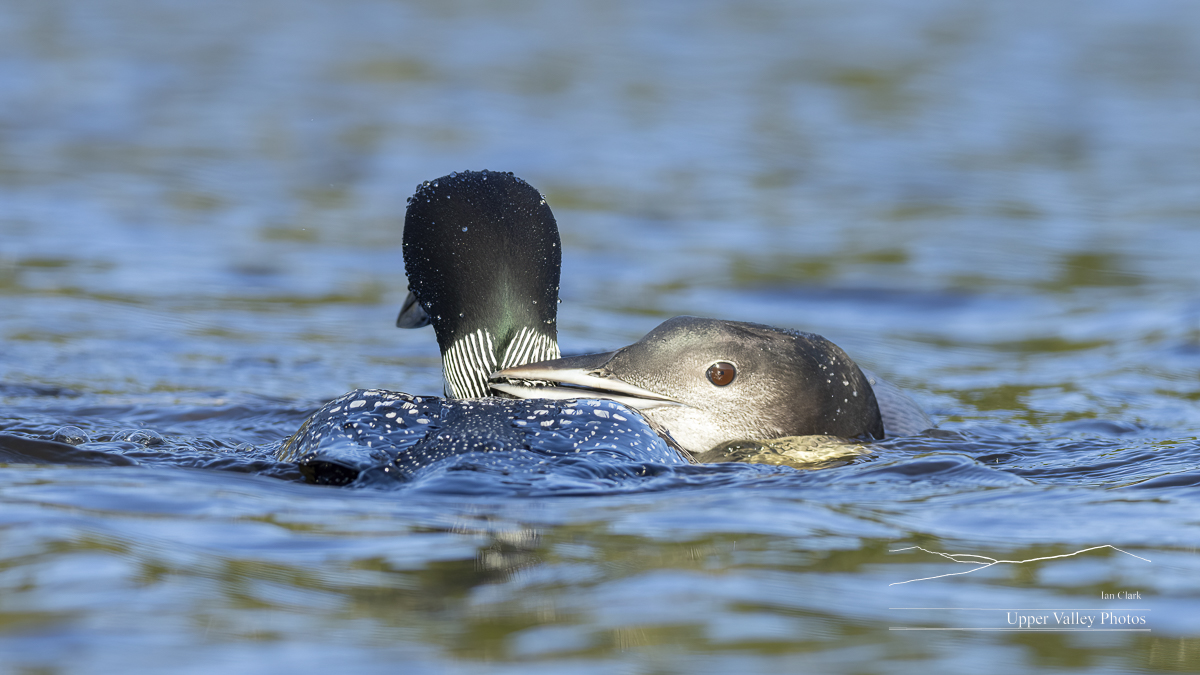
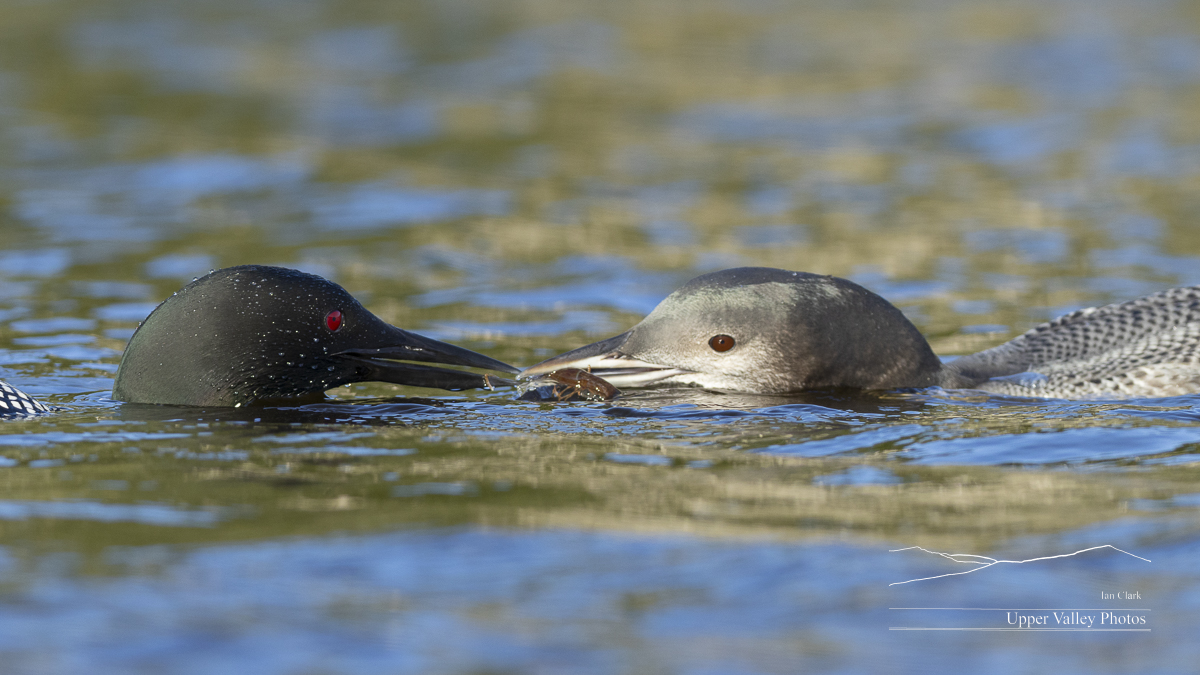
Heading back to the boat launch, I pass dad who is lazily paddling along, seemingly enjoying the peace and quiet on this end of the pond.
I was surprised the fog hadn’t shown up on the pond, there’s usually a period where the pond gets foggy as the fog lifts from the valley. Driving back towards home, I discovered why – the fog was still sitting heavy on the river.
Back at the house, the goldfinches have discovered the thistle I left for them.
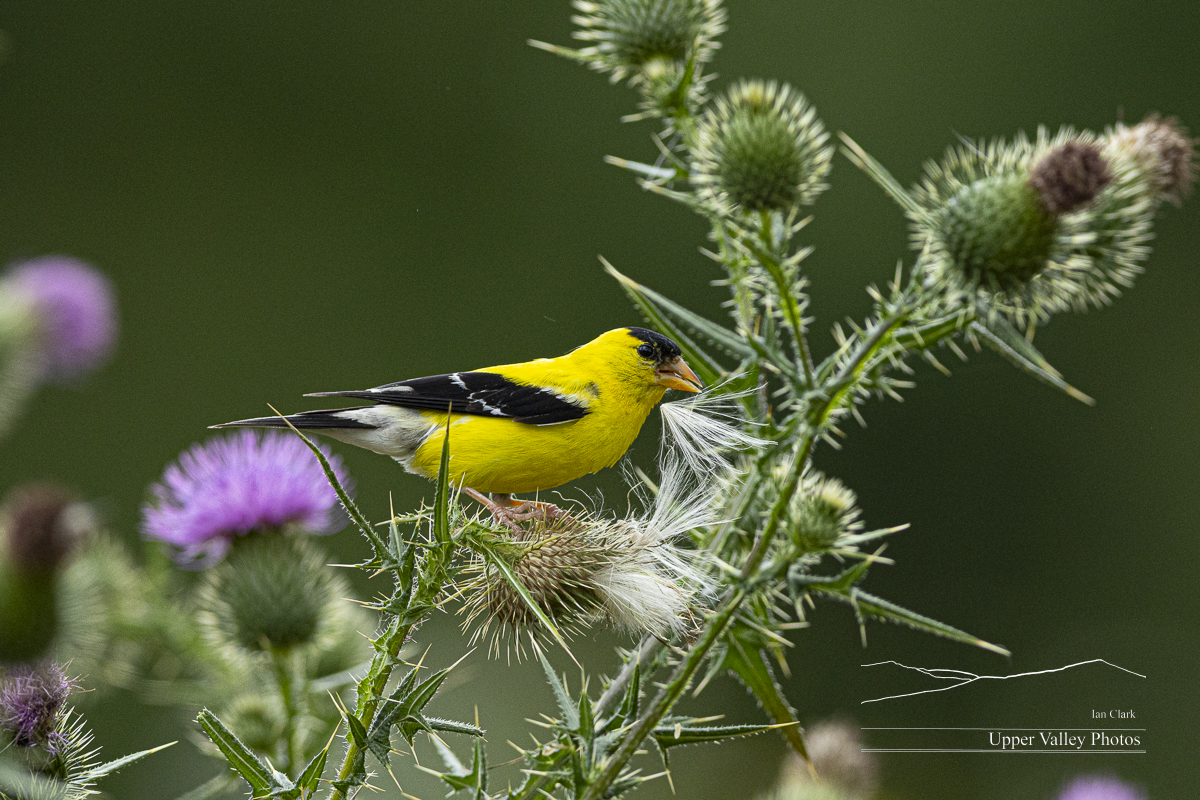


Checking in with the Loon Families
With the beautiful weather we had last week, I was out morning and evening every day checking in on all three loon families along with their neighbors. The Forest Service road to the Easton’s pond is now passible so I finally got up to check on them.
A raft of new subscribers joined us this last week. If you found me from the Paradise City show, thanks for stopping by. For the new visitors, to protect the loon families, I don’t publish their location on the web. Not everyone on the web has wildlife’s best interests at heart. The three families I follow are the ‘Eastons,’ on the easternmost pond I frequent, the ‘Westons’ are on the westernmost and the ‘Middletons’ are in the middle.
The first visit to the Eastons was last Tuesday evening. There was a strong wind kicking up the occasional whitecap. On my first lap around the pond, I didn’t spot any loons and last year’s nesting site was untouched. After time, one adult loon appeared, foraging lazily. The chop was too much for photos and the black flies had decided I was the buffet, so I called an early quit and headed home.
Wednesday morning, I headed out to see the Westons.
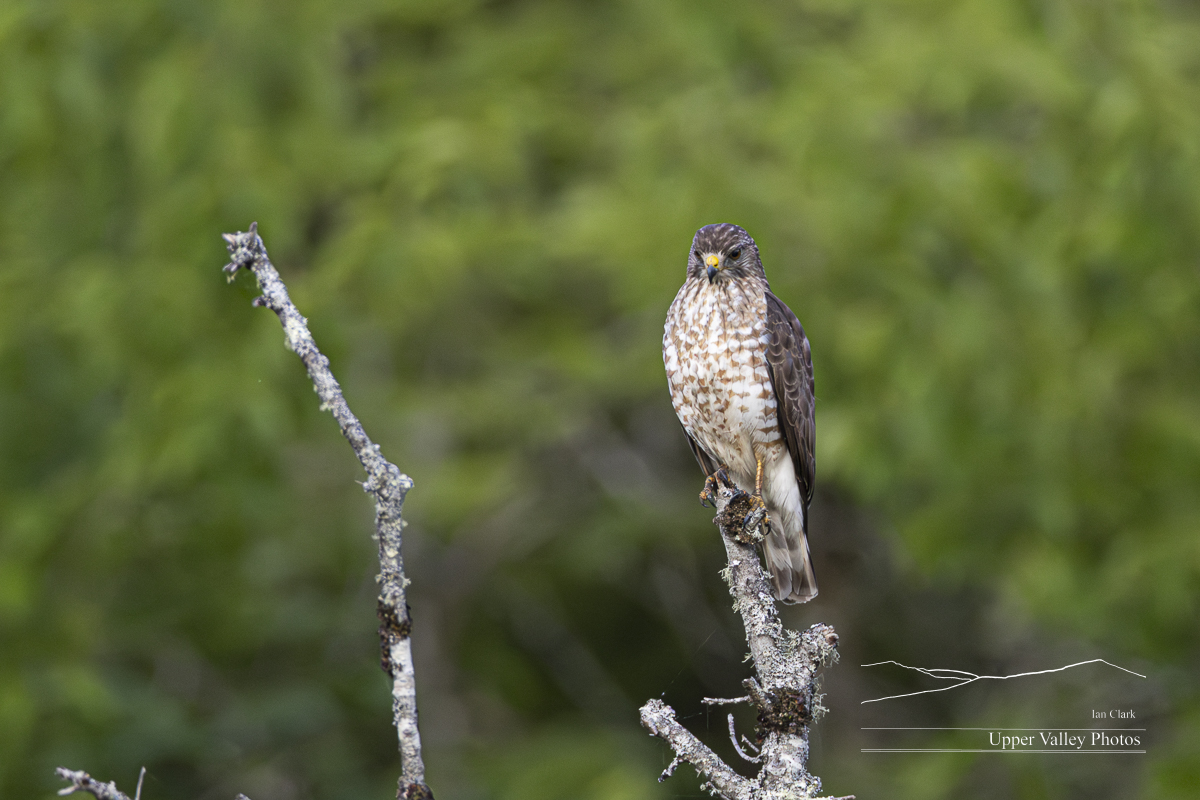
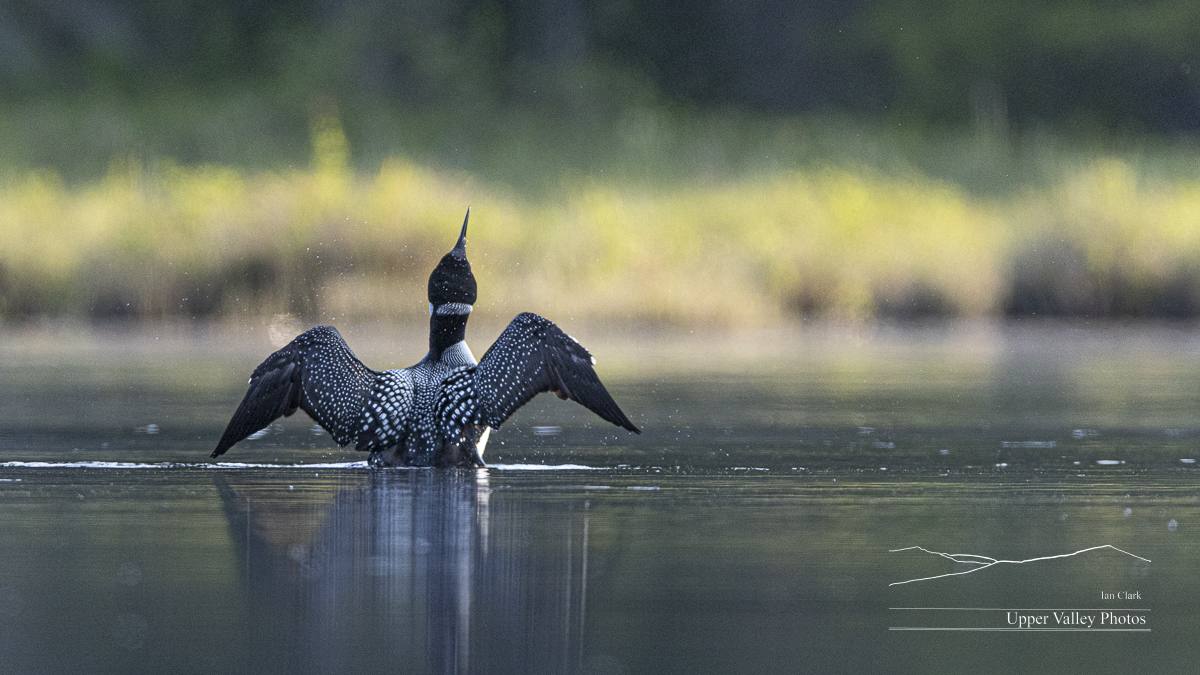
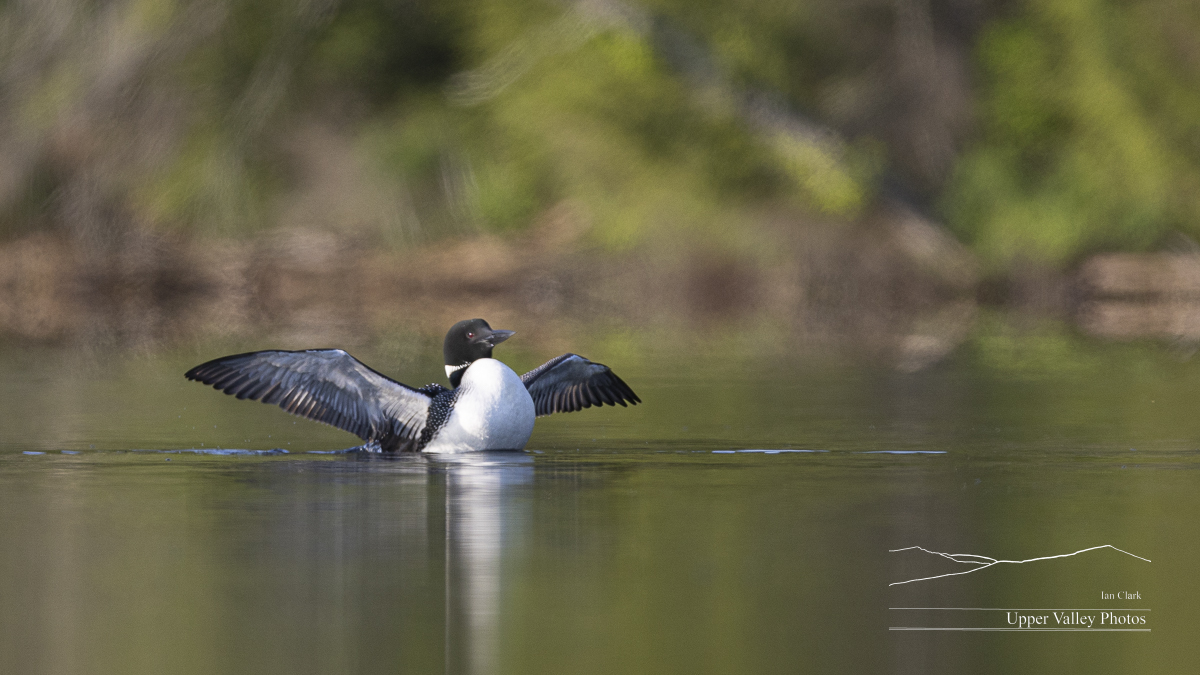
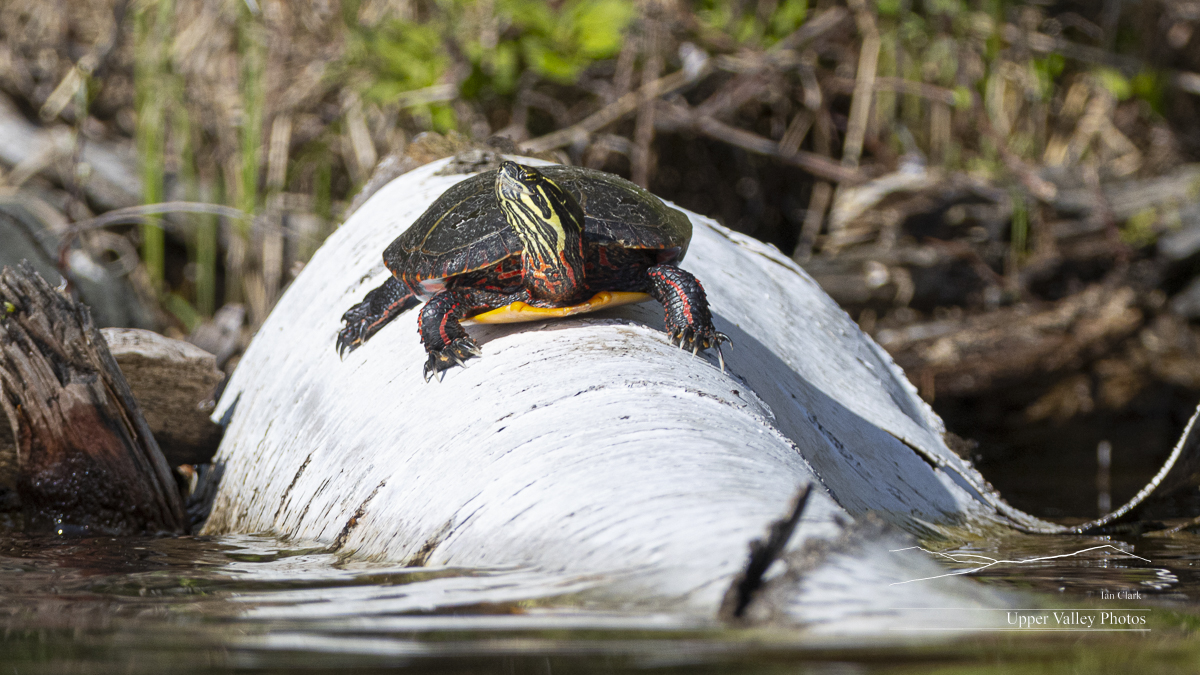
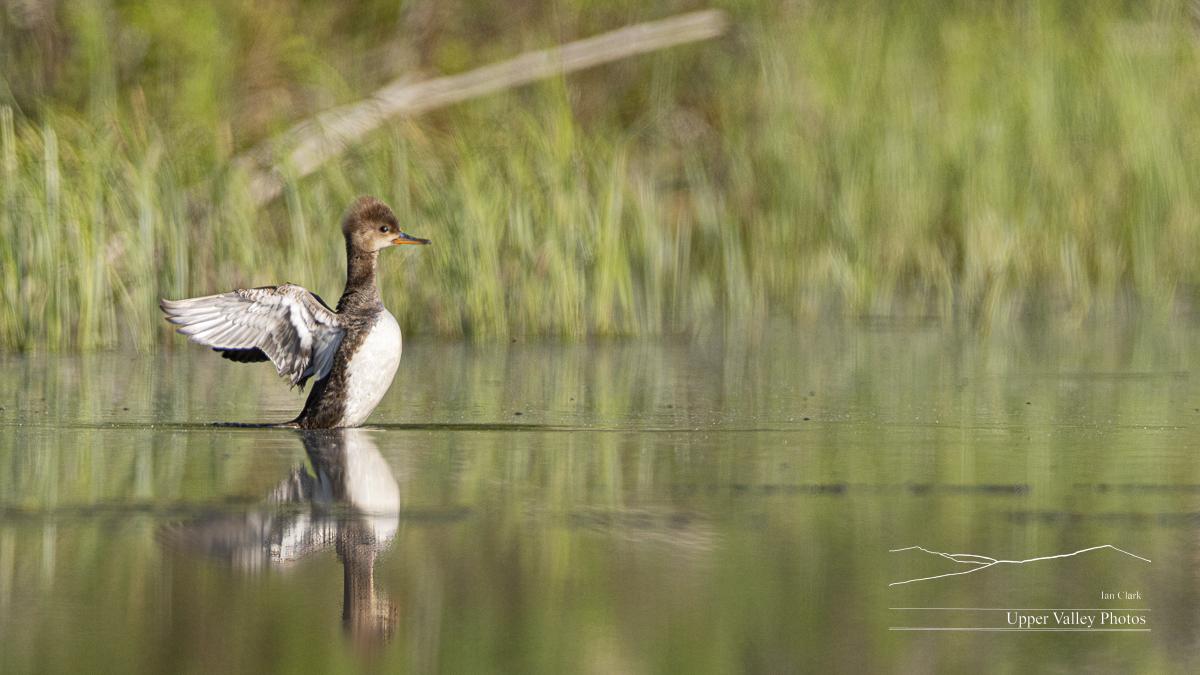
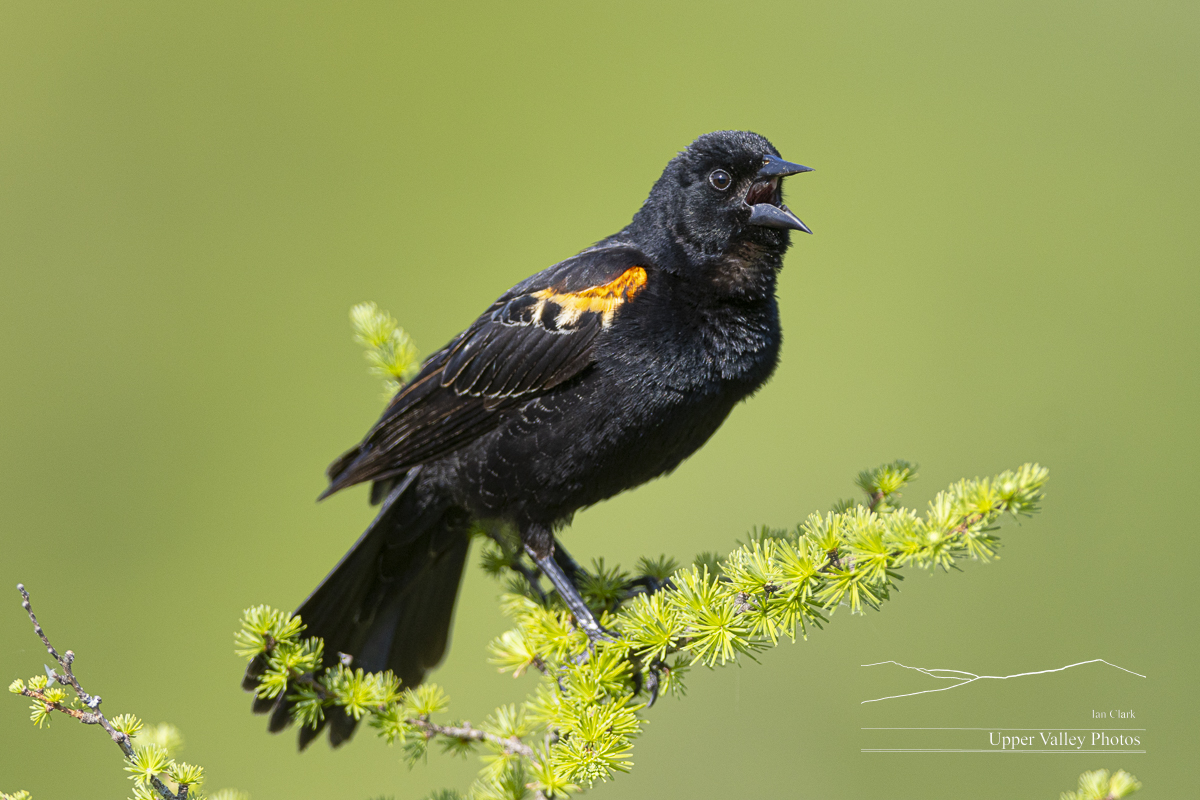
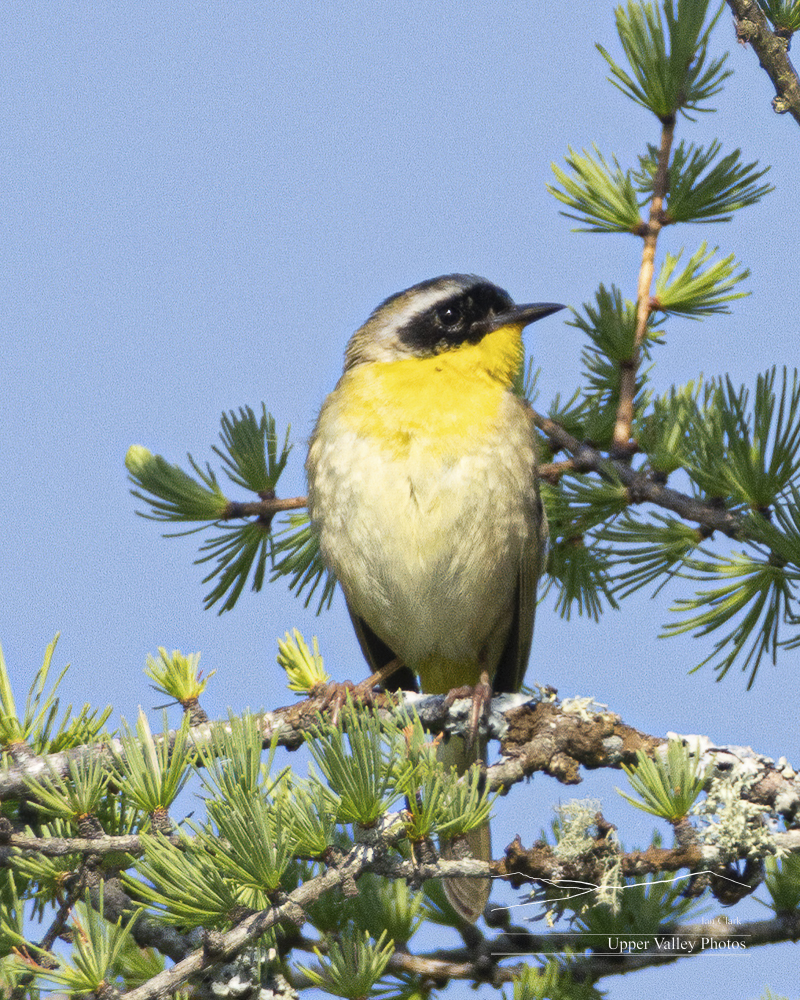
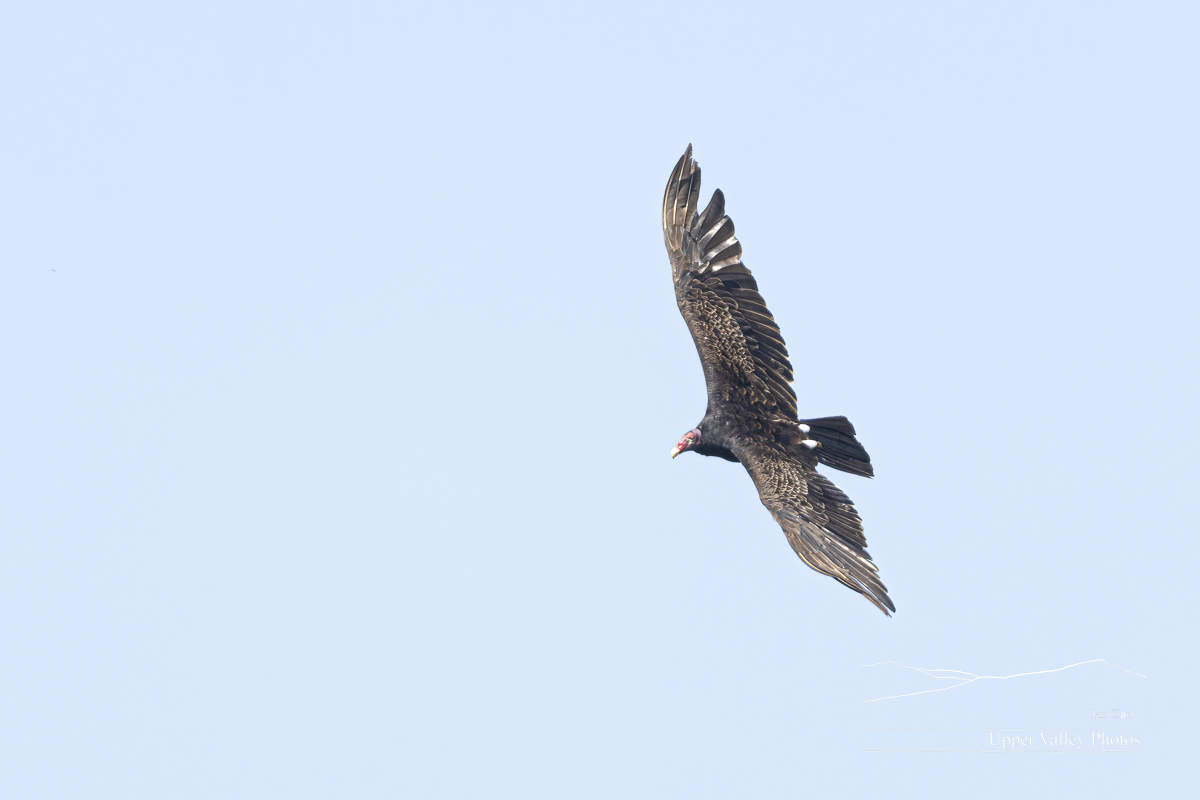
Wednesday evening, I dropped in on the Middletons. It was well into the 90s. In previous years, the nest was fairly exposed to the afternoon sun and the loon with afternoon nest duty often sat in full sun for a couple hours. I headed over to check on the nest. On my way, the resident osprey took a fish from just a few yards in front of me. Of course, I didn’t see him until he was just a few feet above the water, I had to watch instead of taking photos.
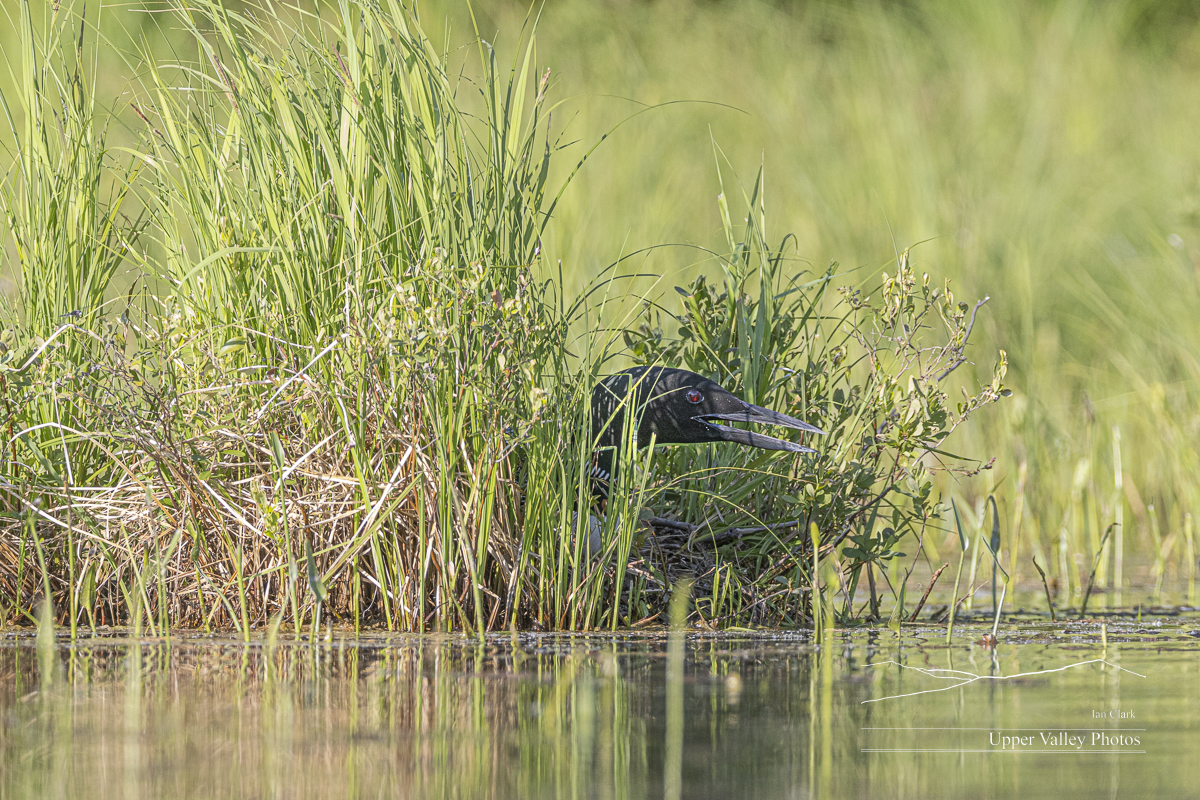
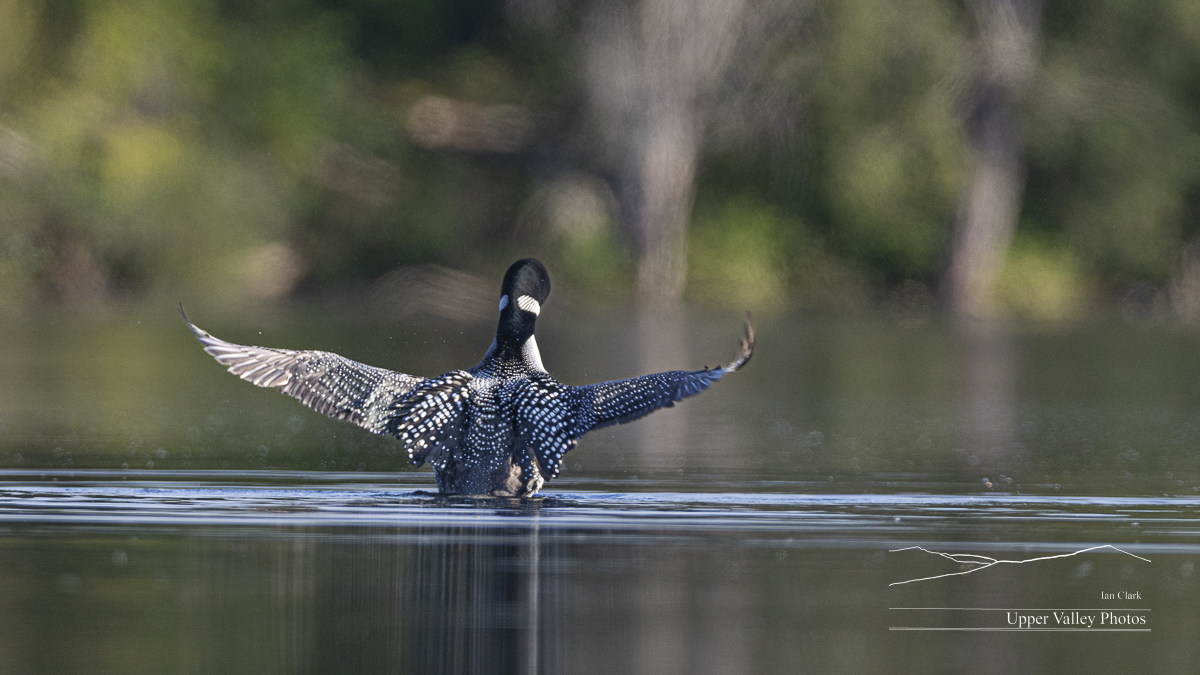
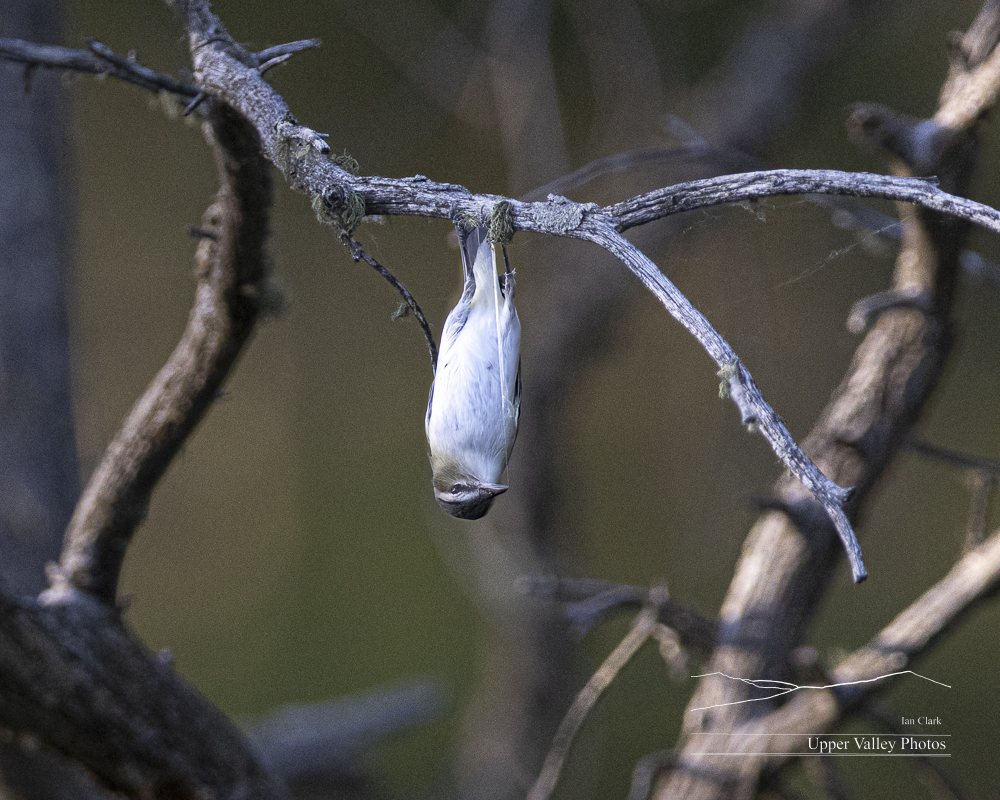
Thursday morning I headed back to visit the Eastons, hoping both had returned. There was no wind, it was a perfect morning just to be out on the water, even better for photos. As I headed down the pond, I quickly spotted a loon sitting on the bank a couple hundred feet from the previous nesting site. Studies of banded loons suggest that if they are successful in hatching chicks in a nesting site, they’ll reuse the site. The literature says the male picks the site, I hoped our male had returned (I want all my critters to live long happy lives before retiring to Boca Raton.) The male on the pond the last few years was banded, I wanted to get a look at their legs.

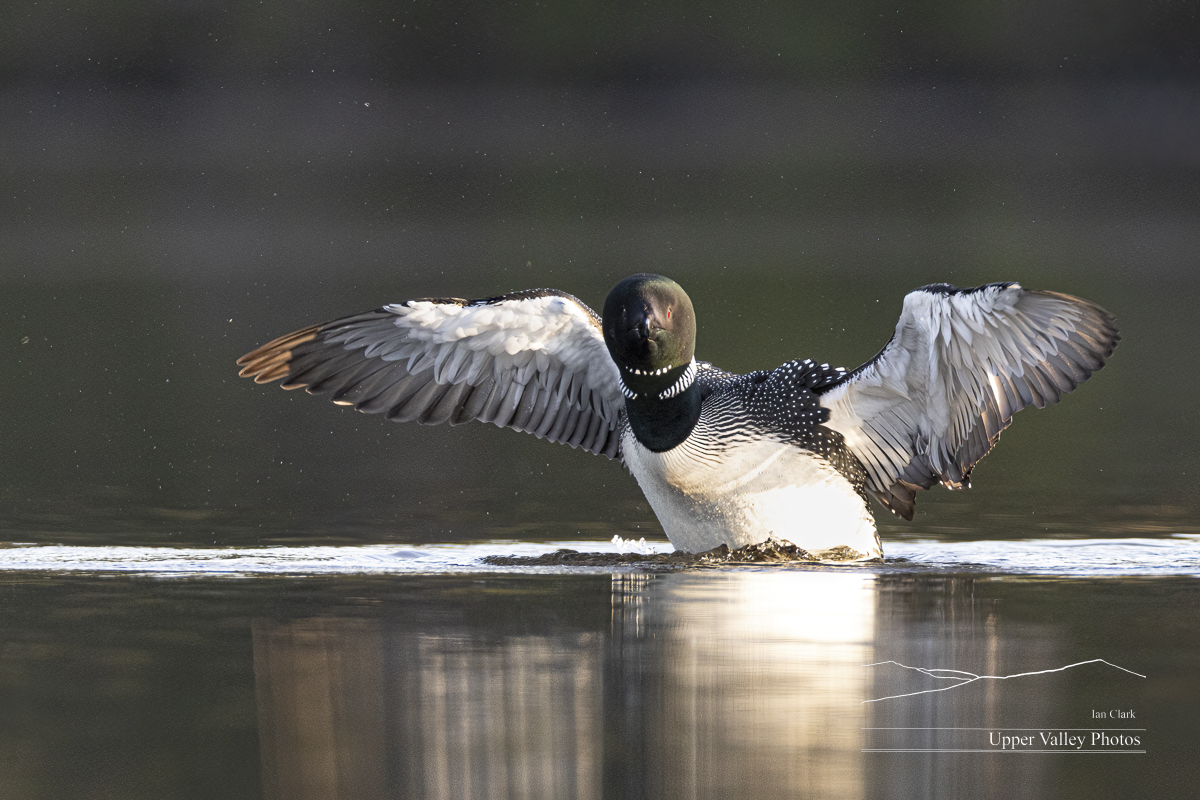
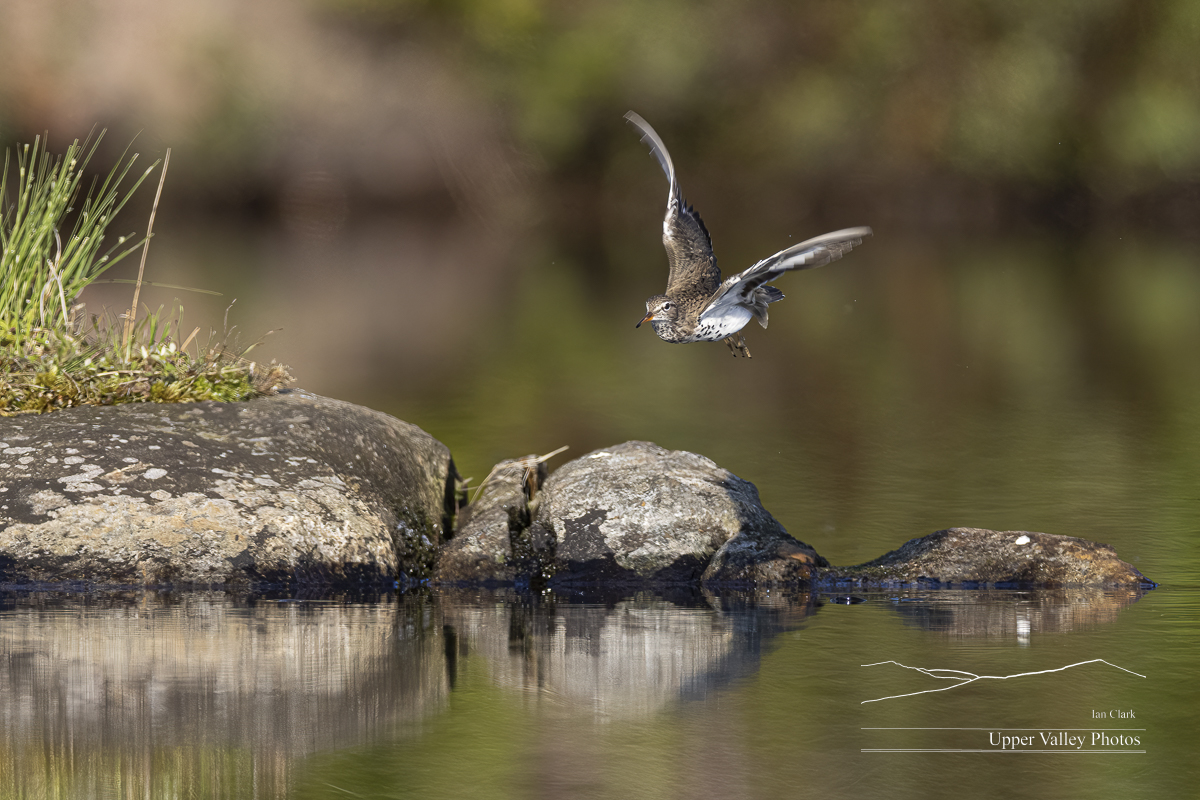
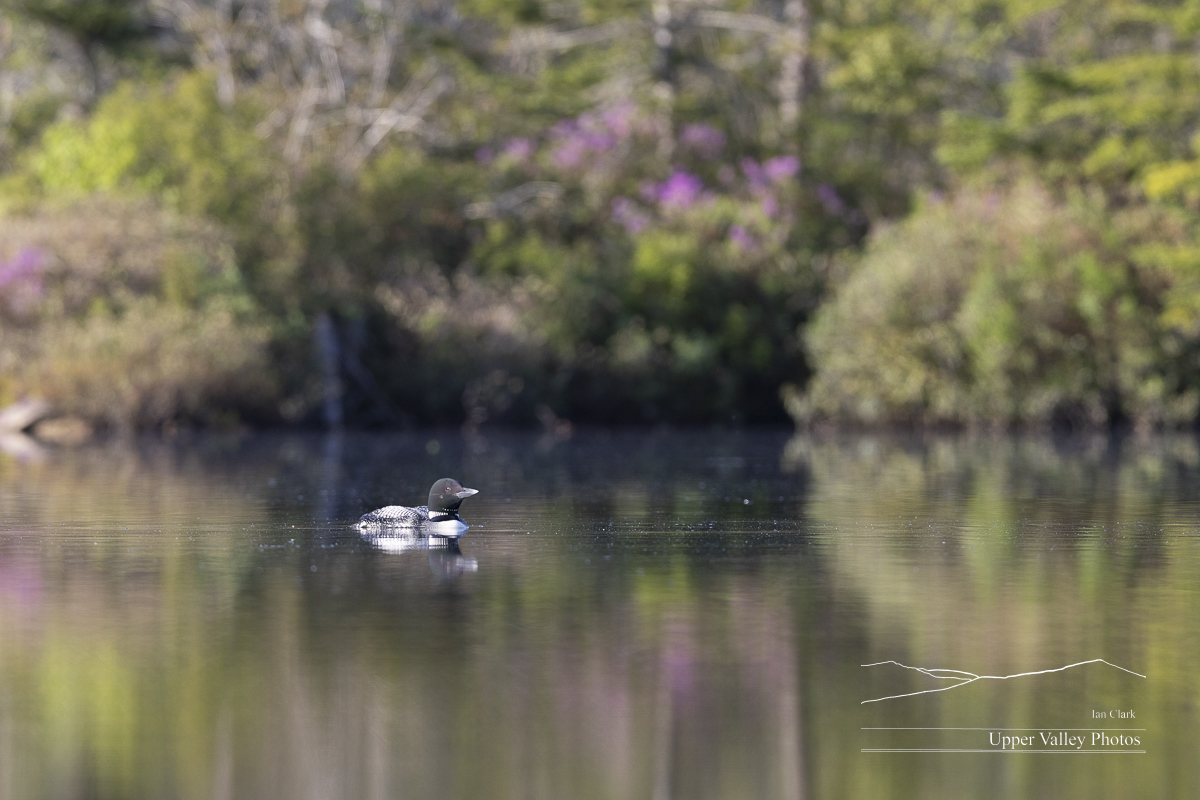

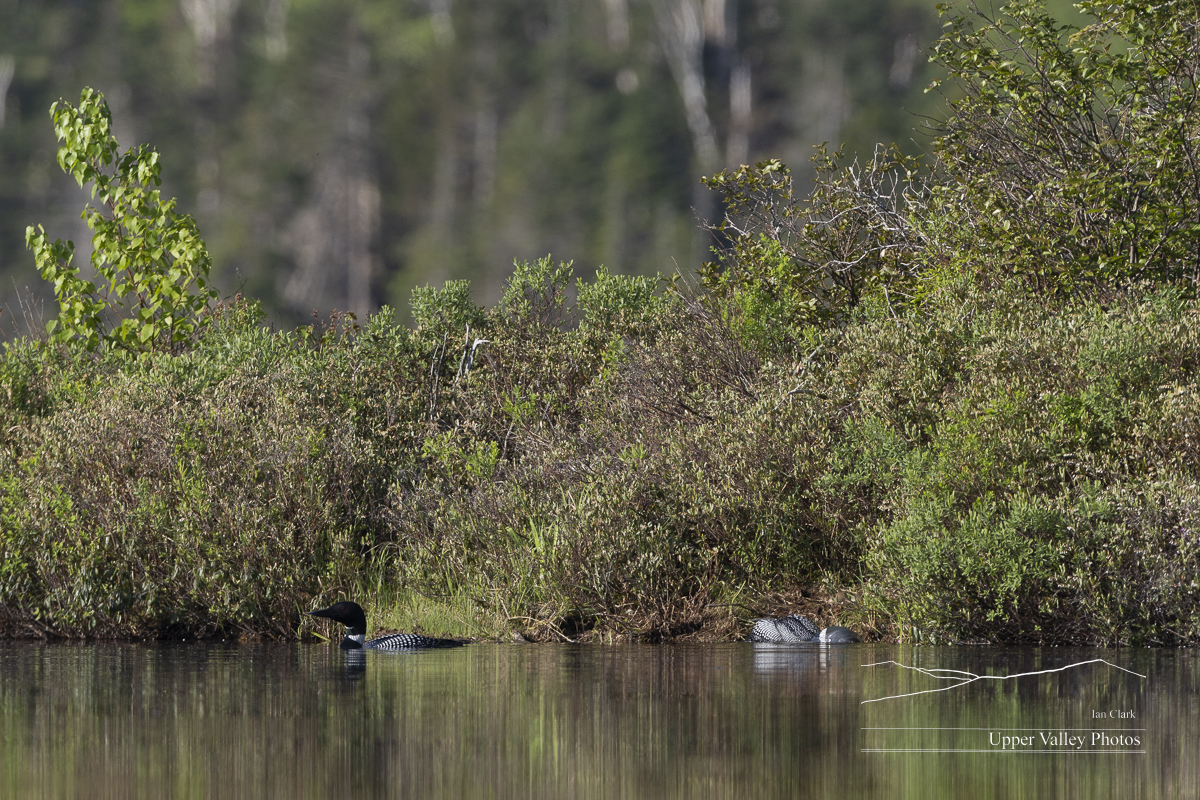
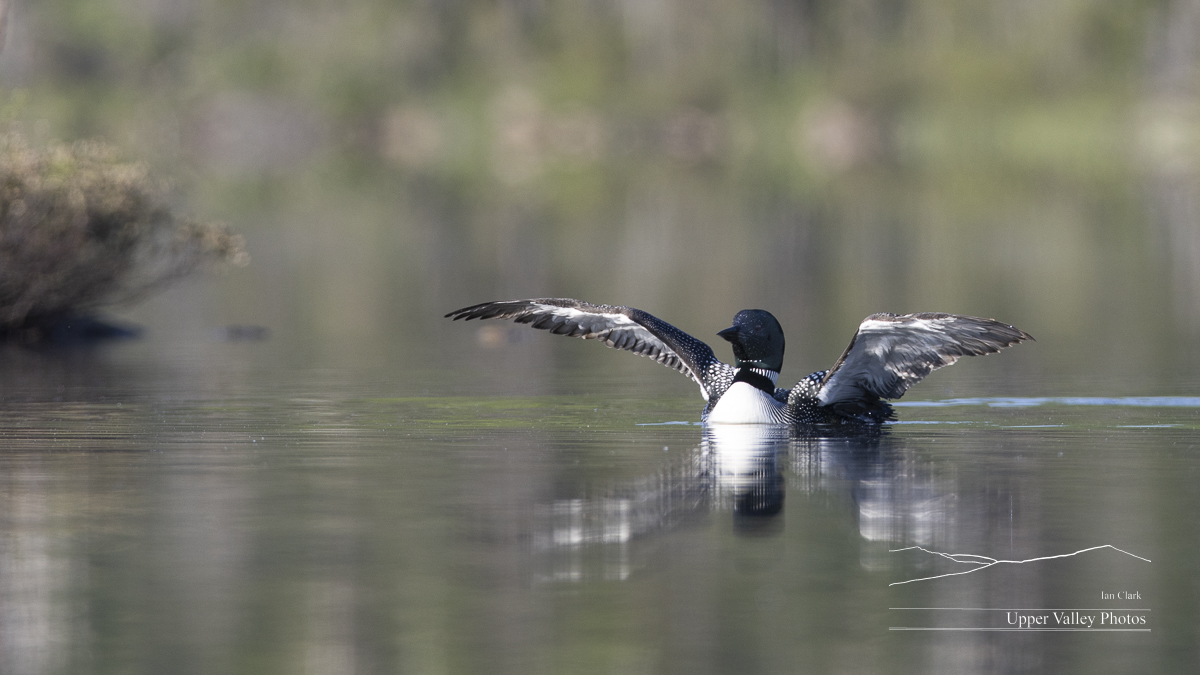

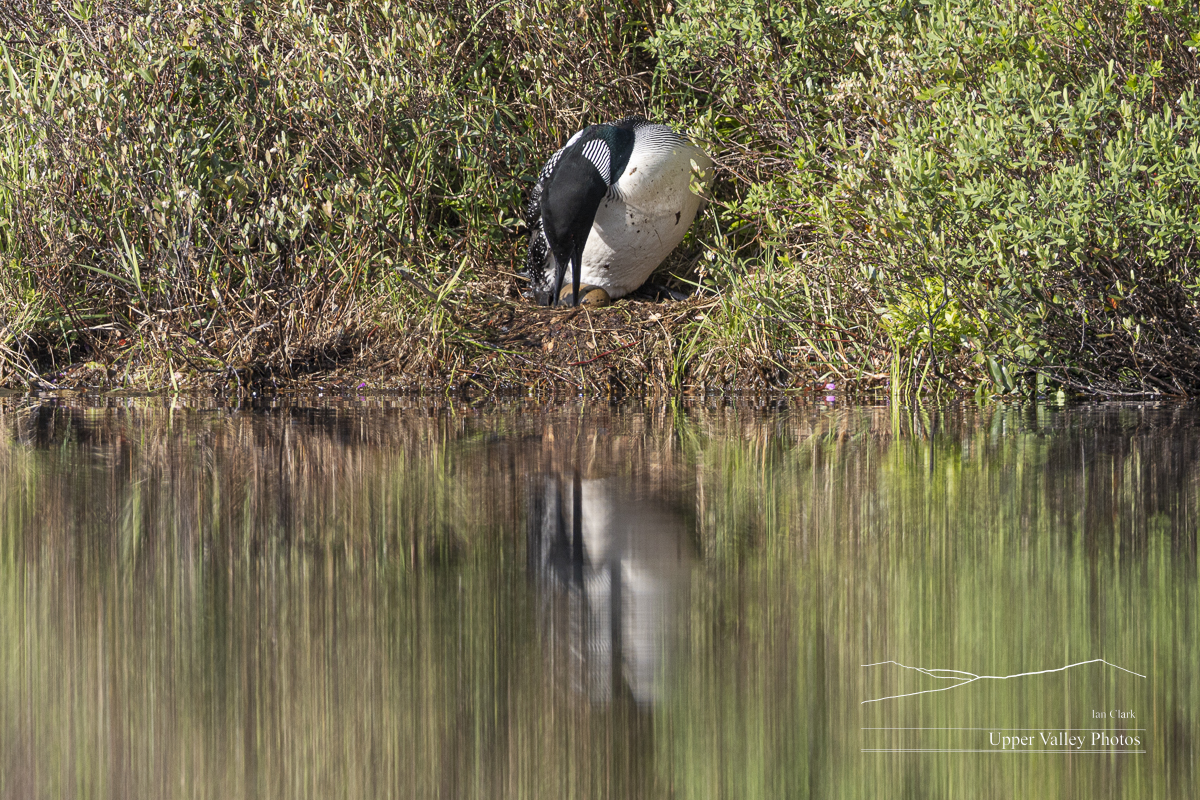
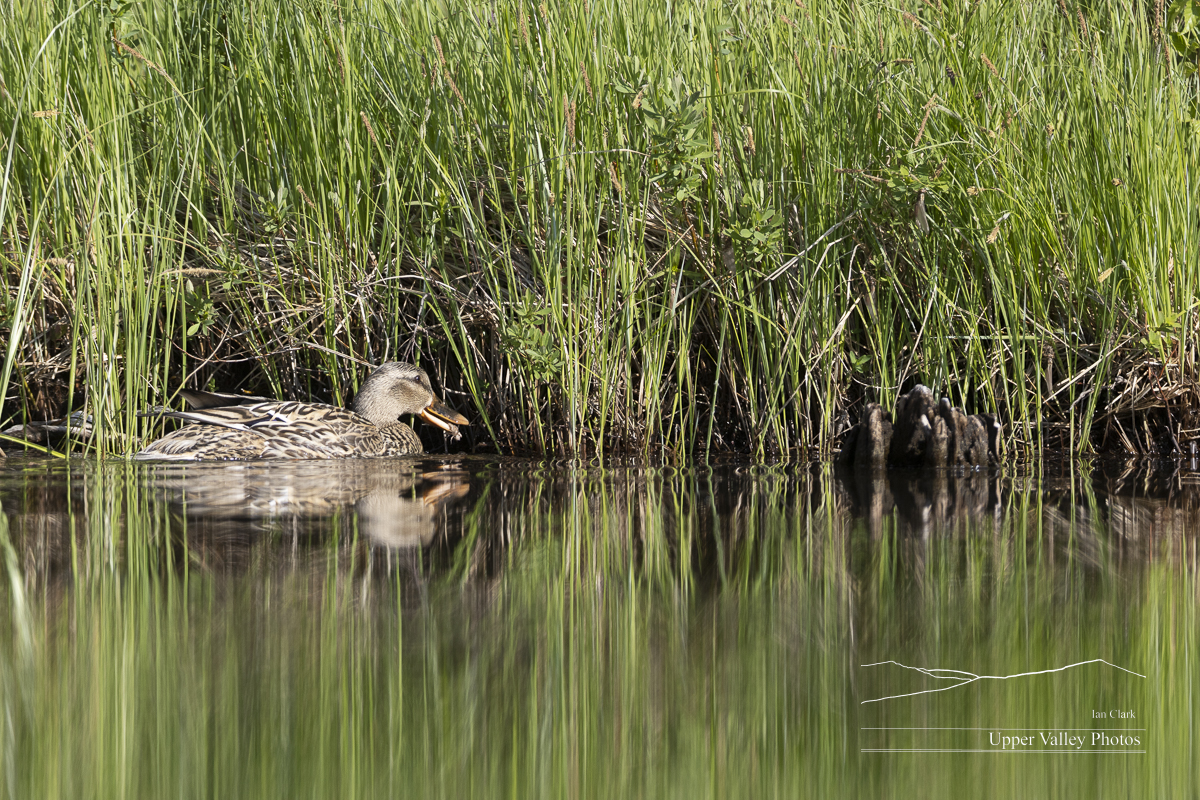
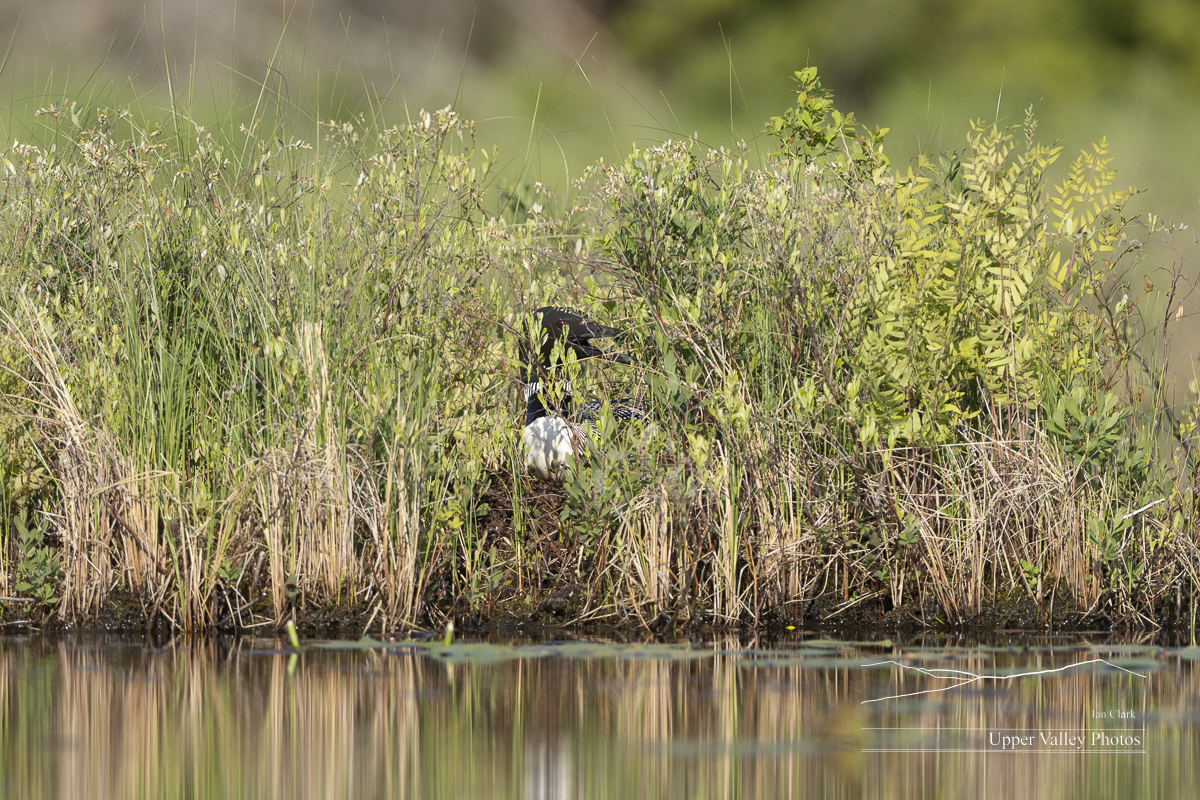
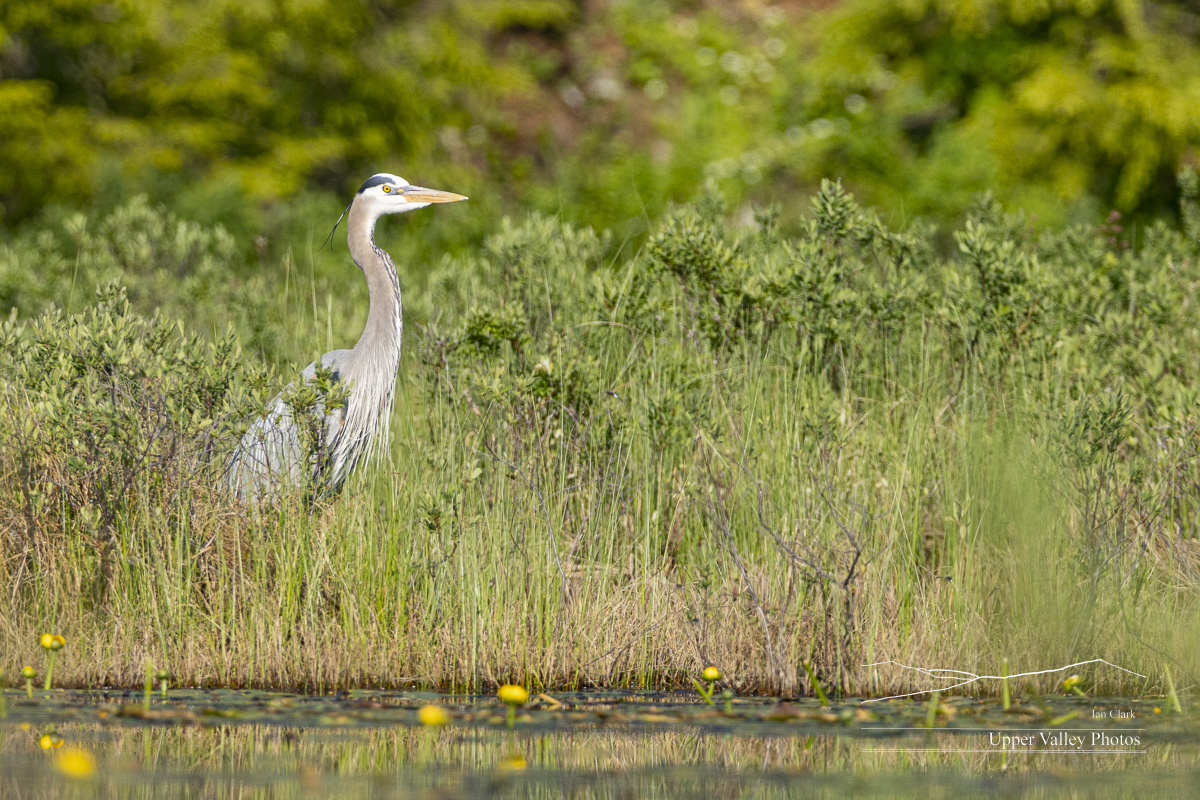
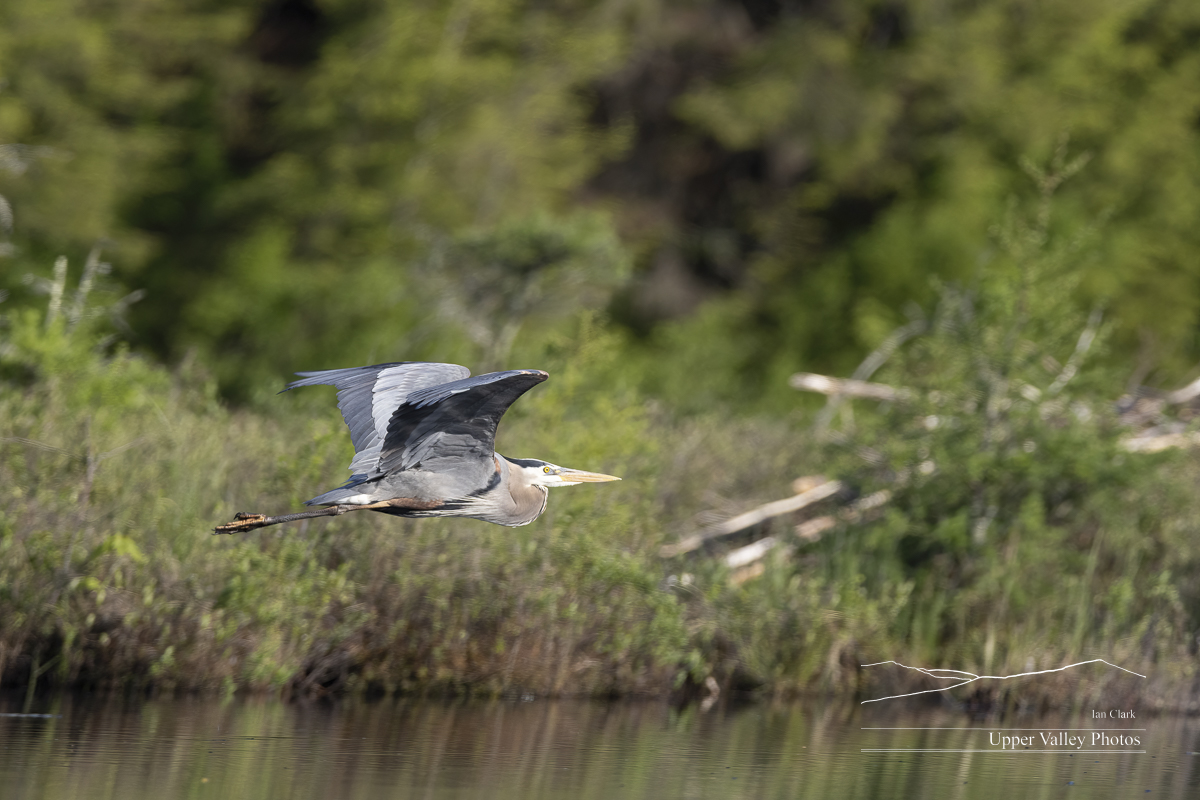
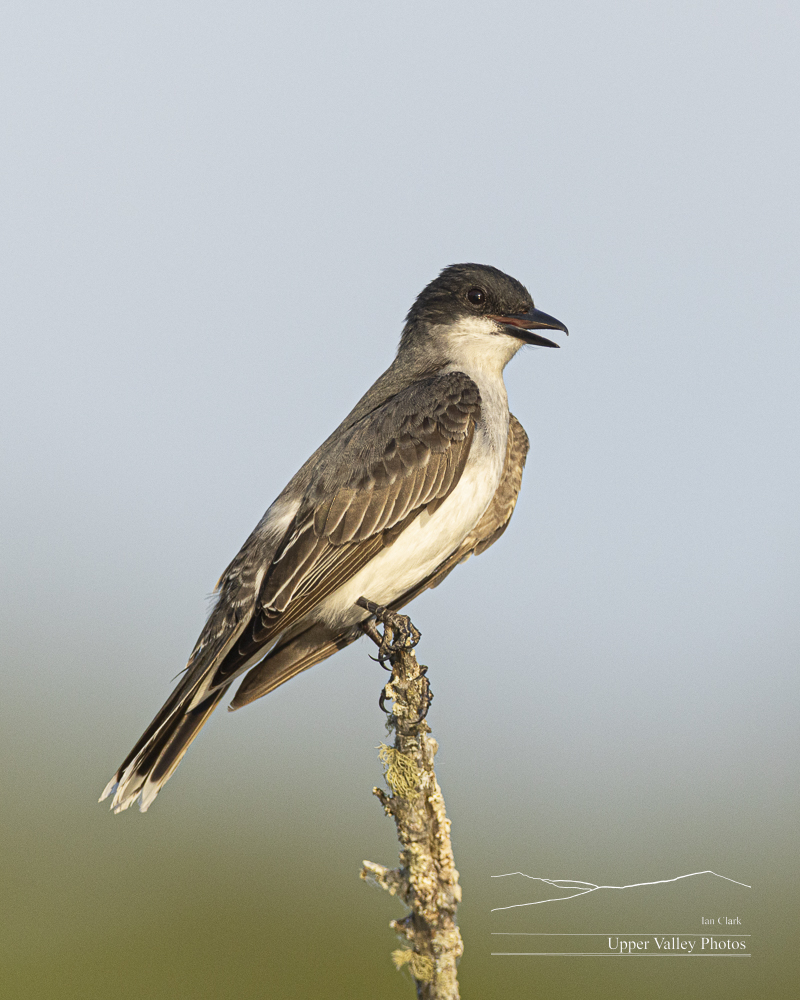
Friday morning, I packed up the Loon Preservation Committee’s nesting sign and headed back to the Eastons.
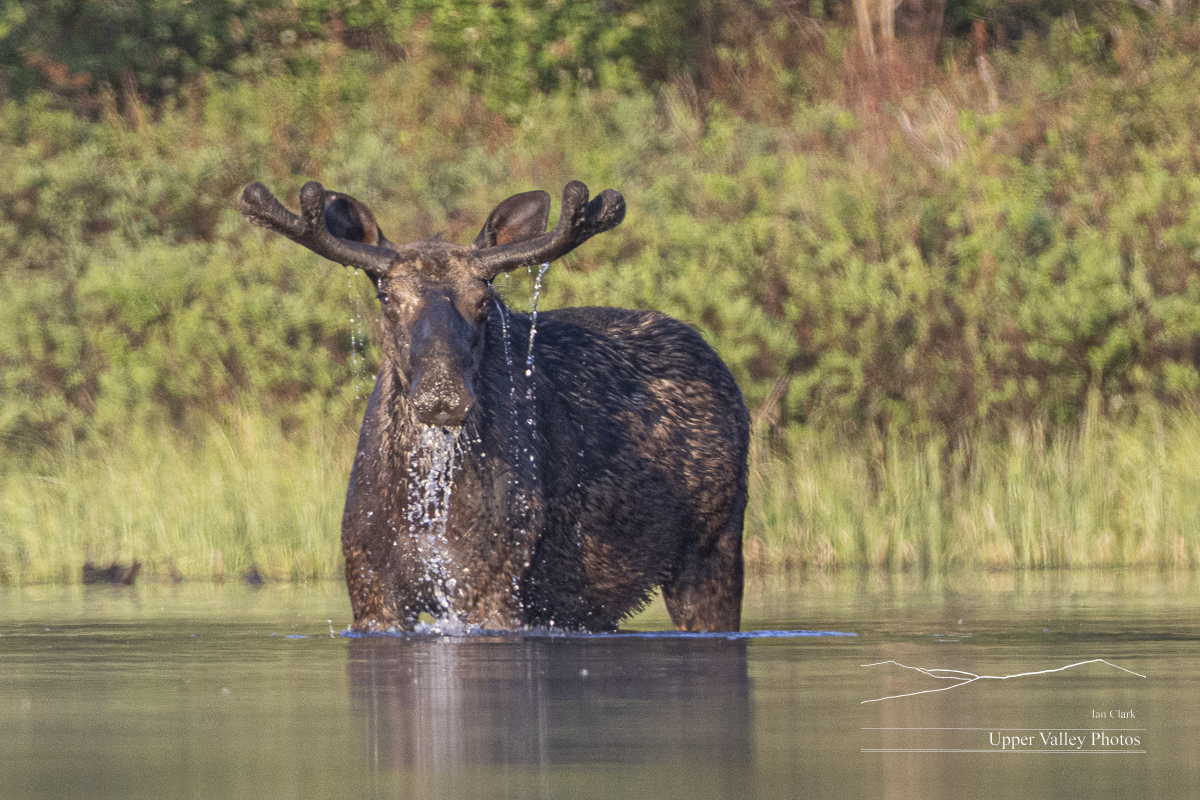
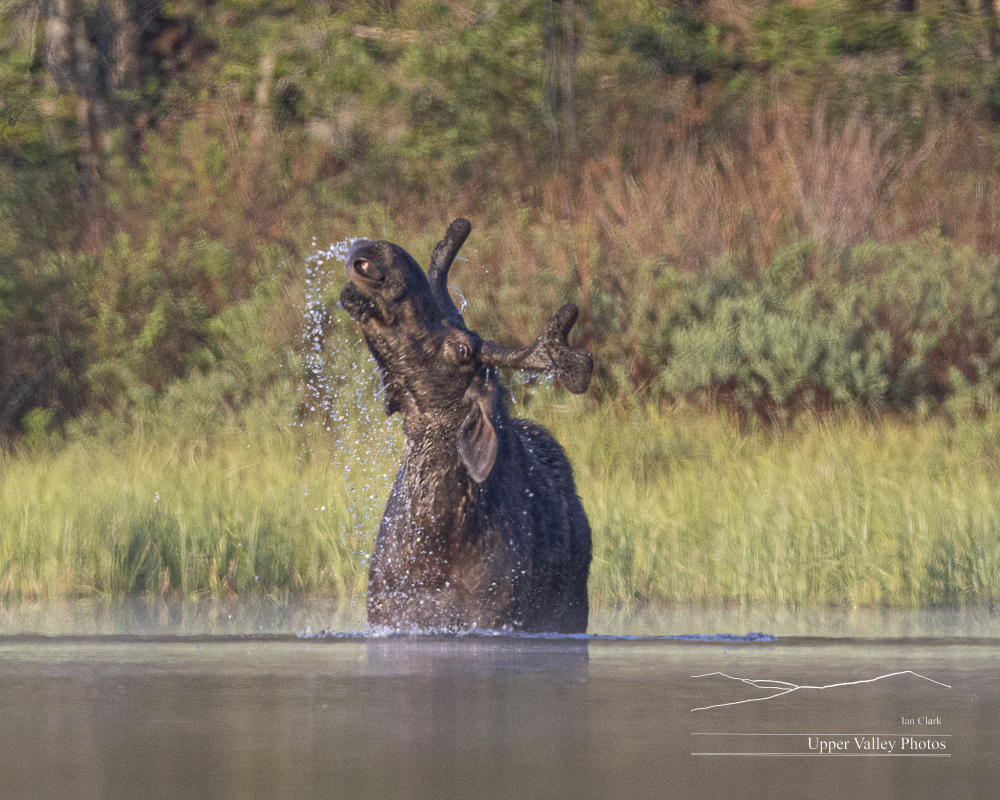
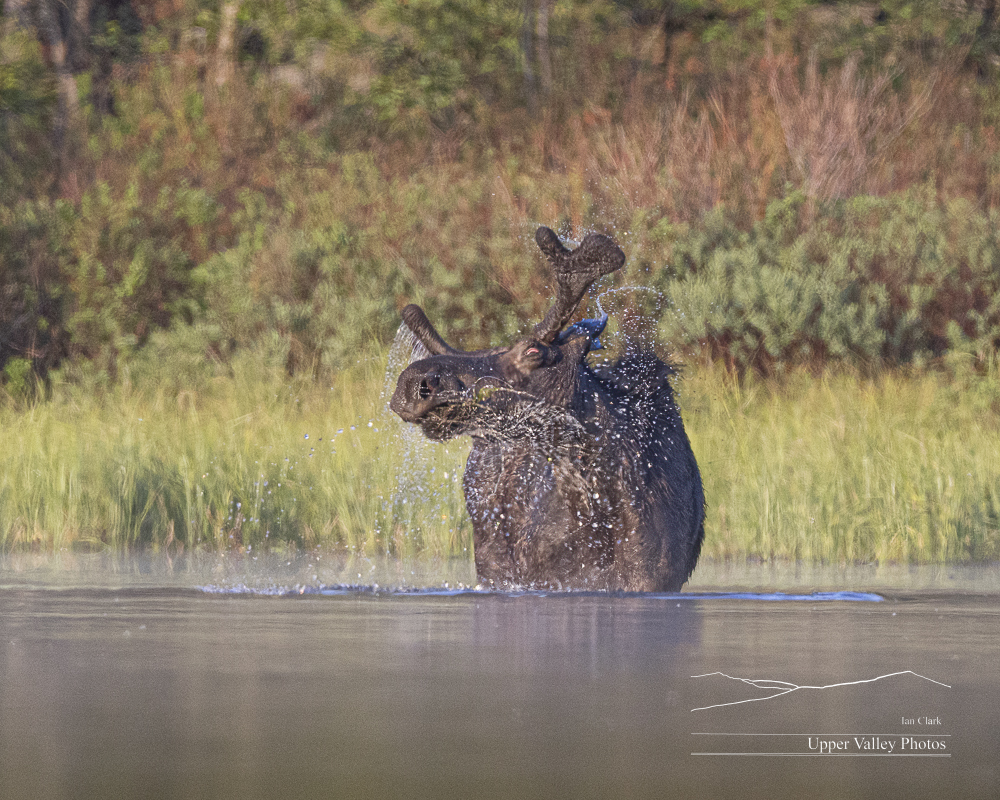
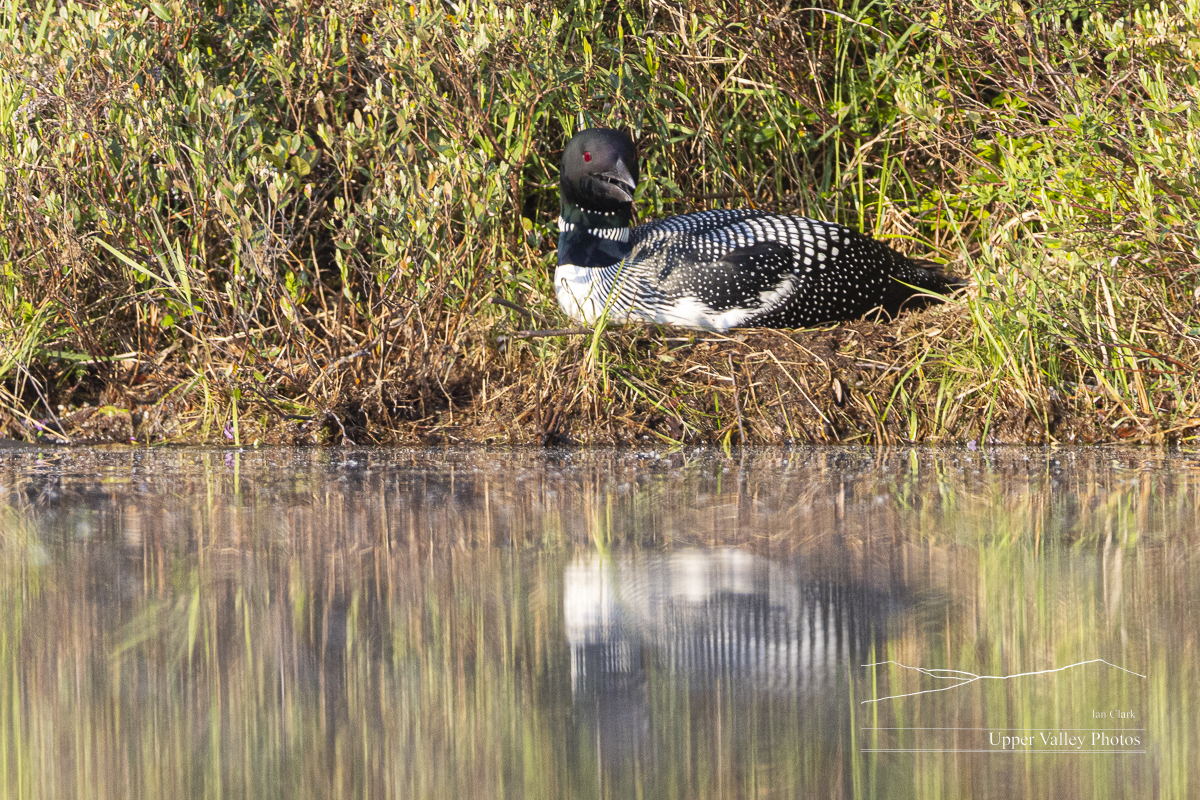
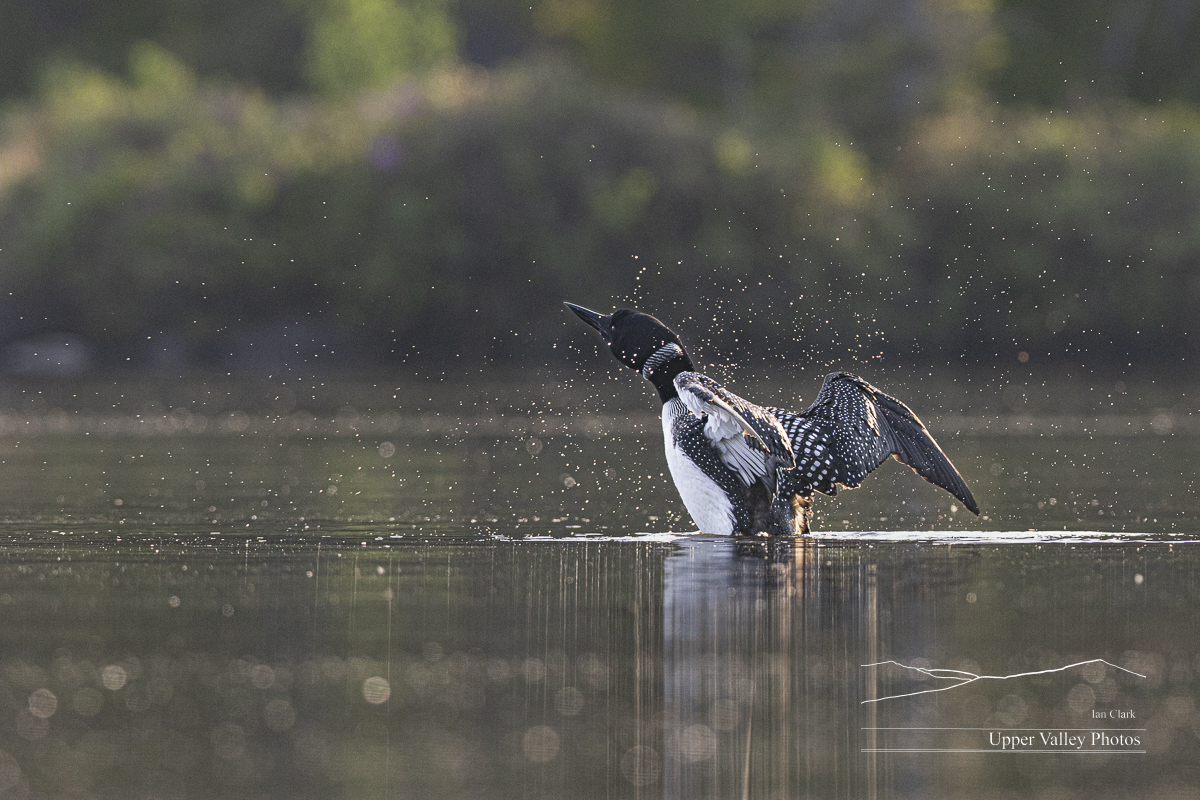

We’re Expecting!
The weather kept me from visiting the loons for several days. I was out to see the Middletons last Thursday, May 18. I didn’t get back until last evening. And I had a chance to visit the Westons this morning. Let’s see how they’re doing.
I’ll be at the Paradise City Art Show in Northampton, MA this coming weekend. Stop by and say hello. I’ll have lots of prints, from small to large, and note cards with lots of critters. All the show details here.
Last Thursday was another chilly morning, with a little bit of fog on the water.

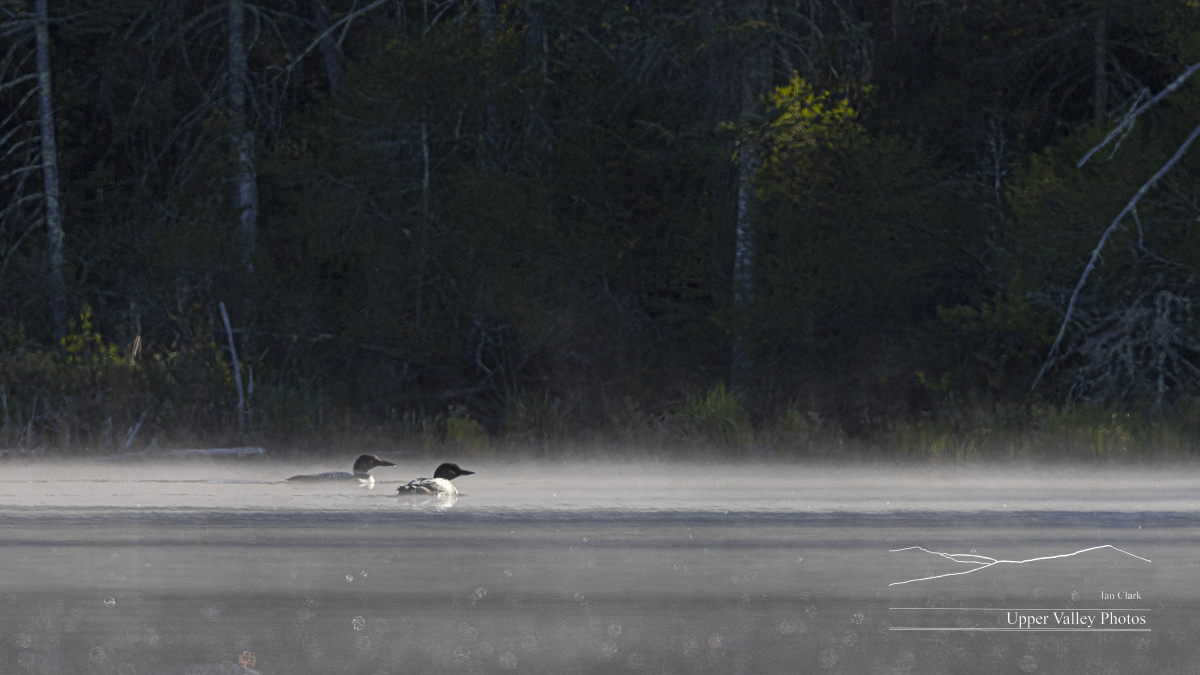
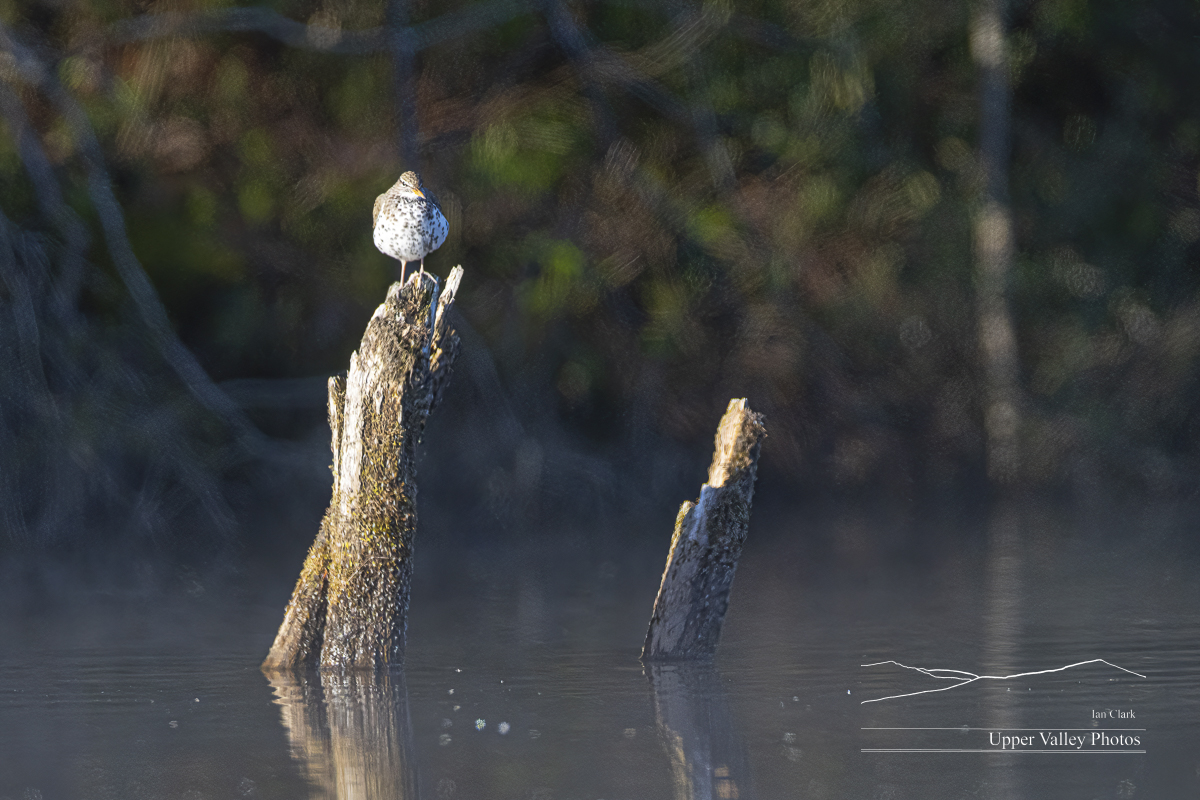

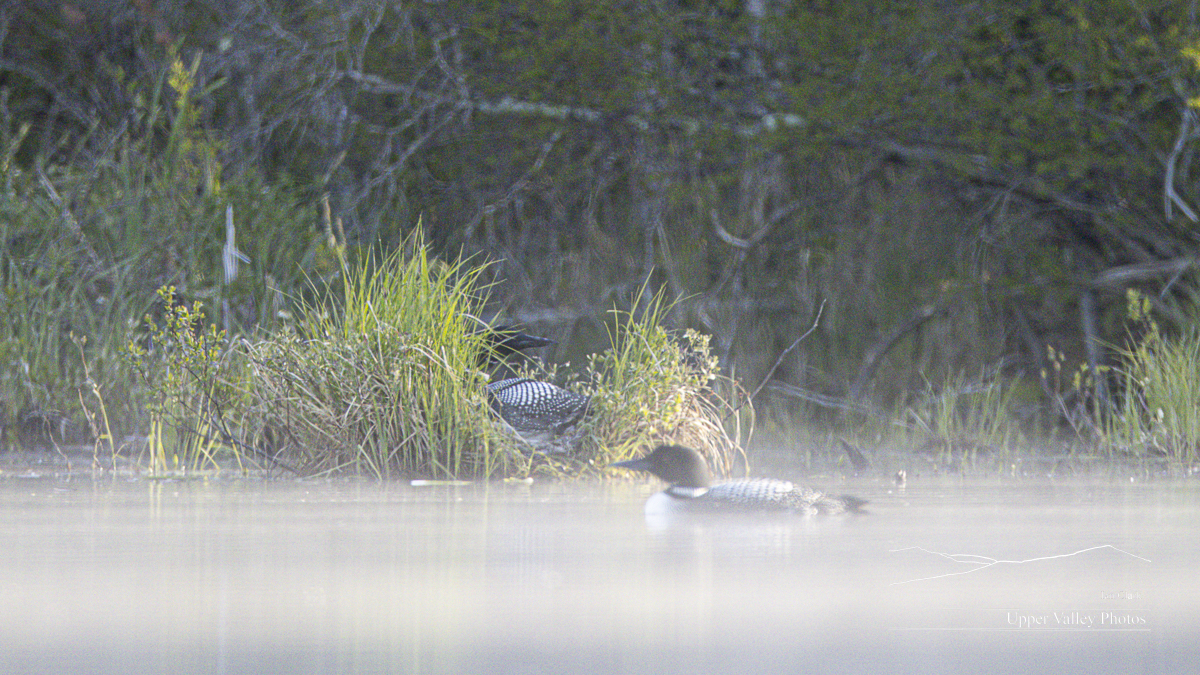
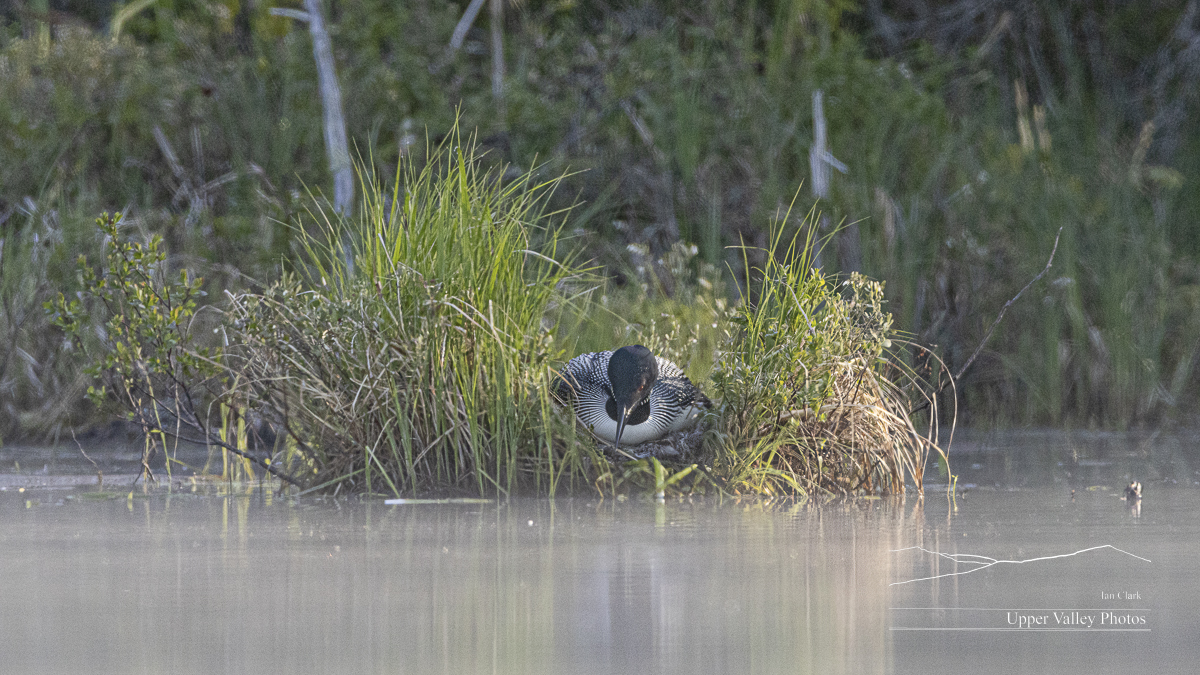


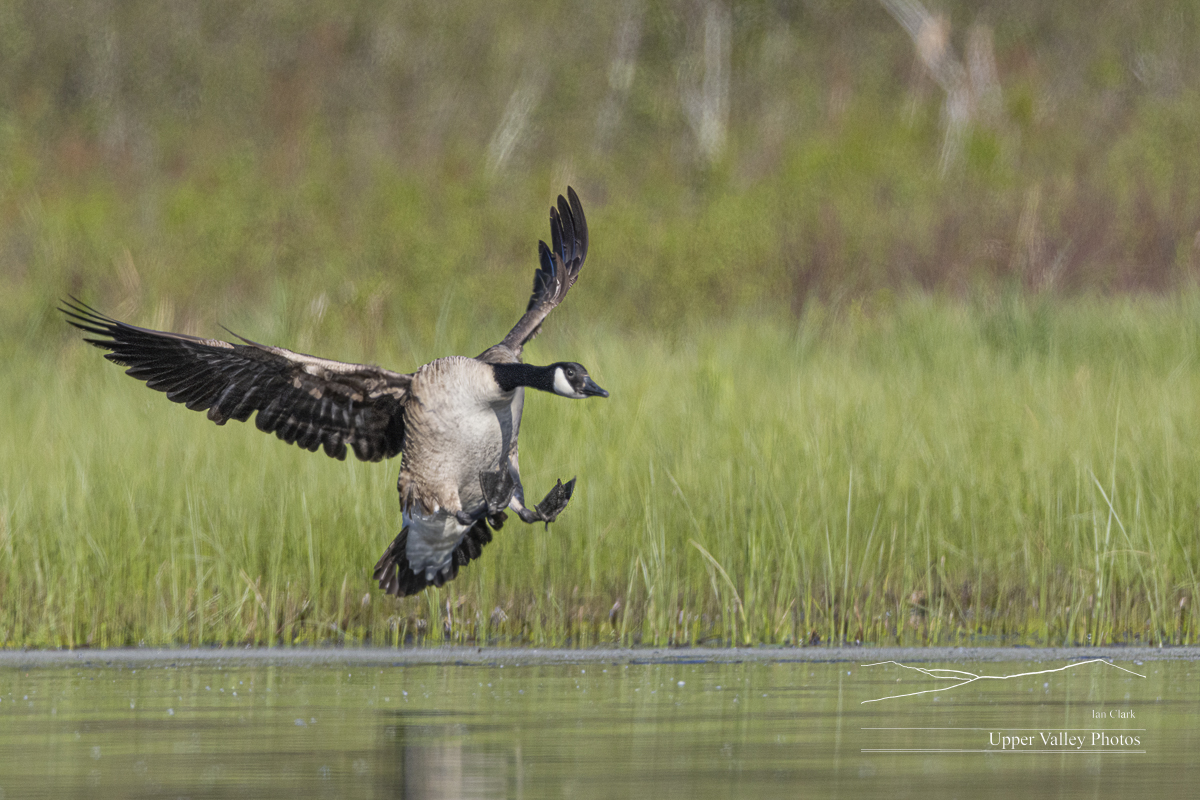
I returned yesterday evening, much to the delight of the black flies.
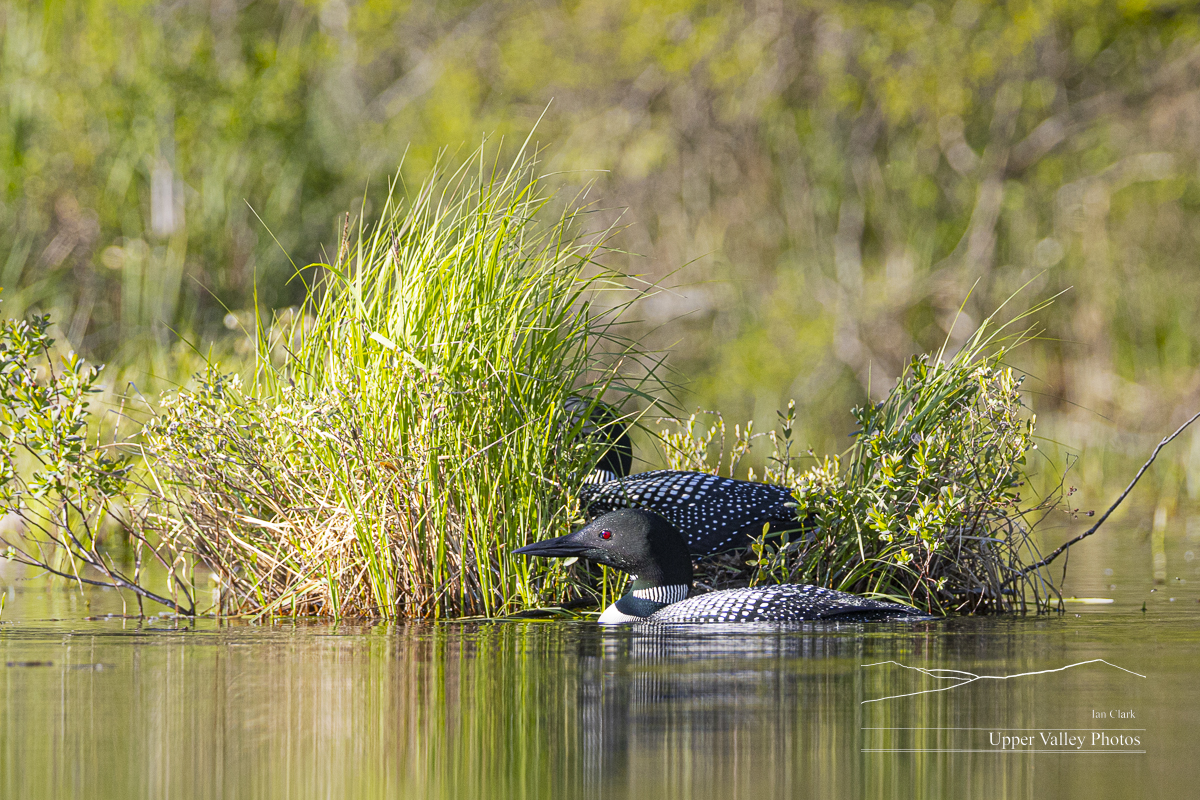
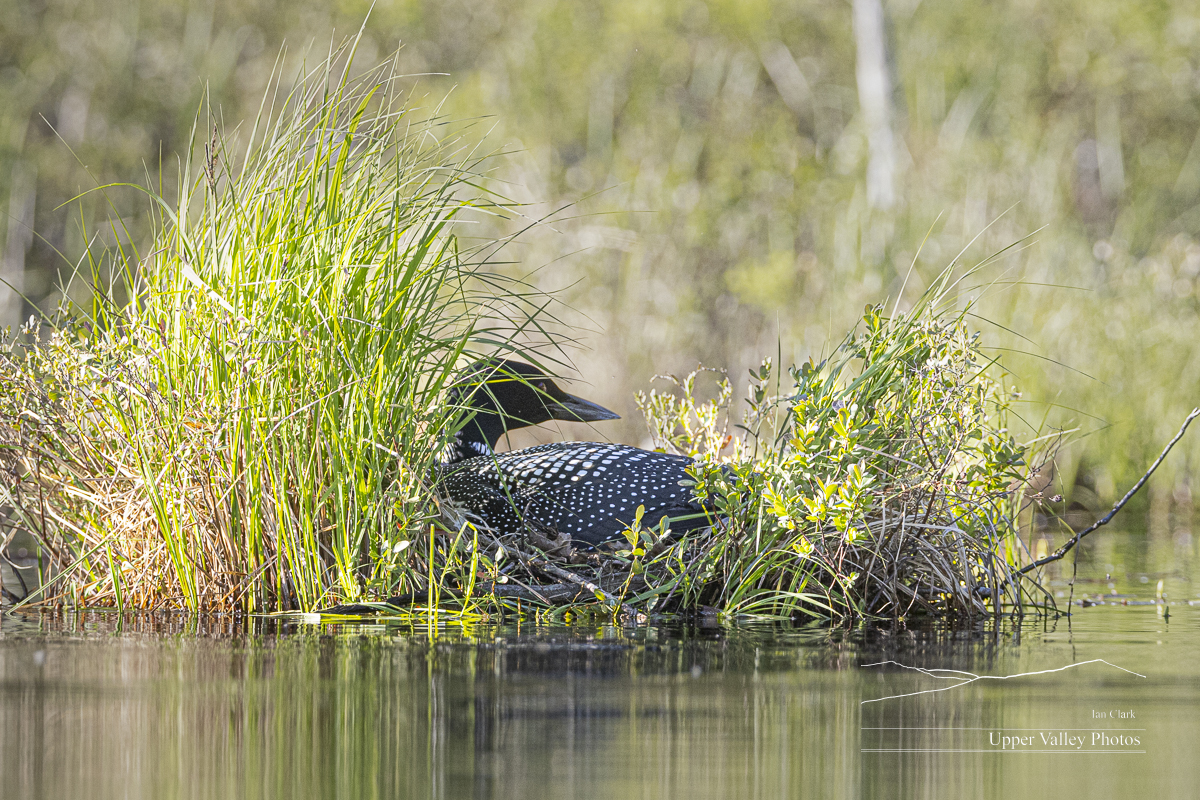
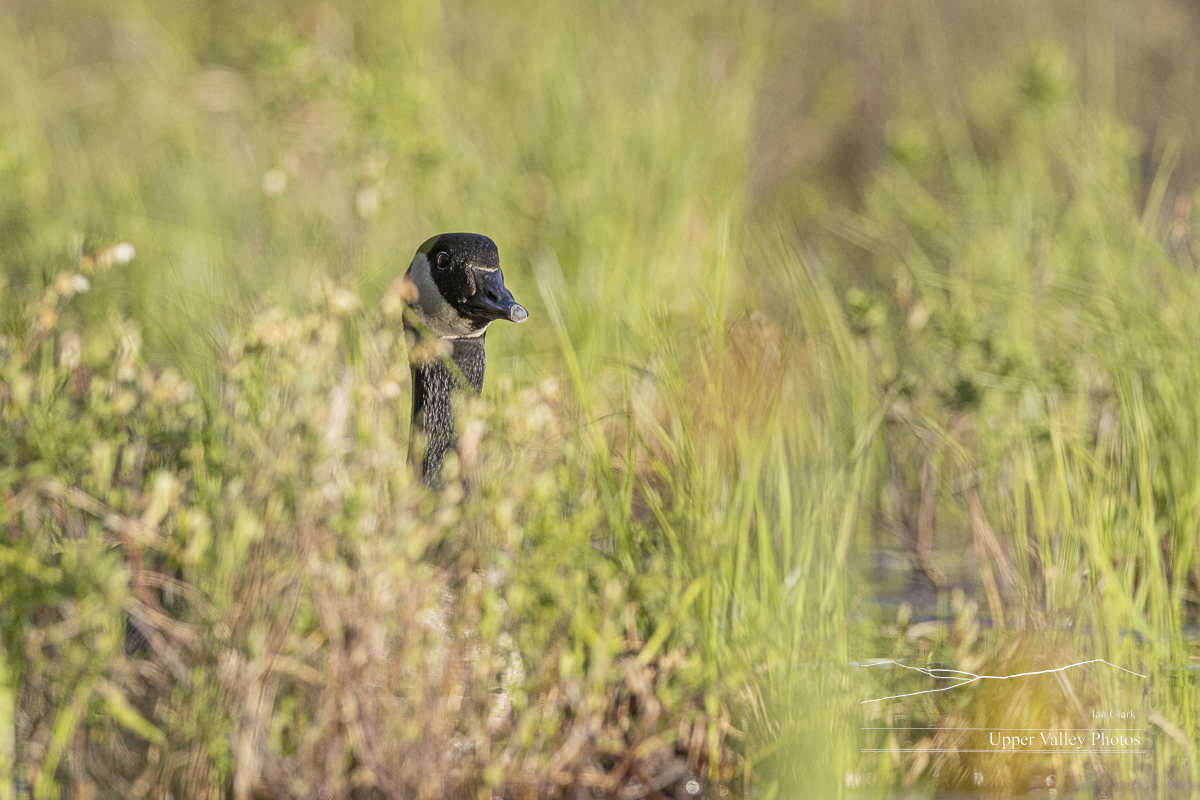
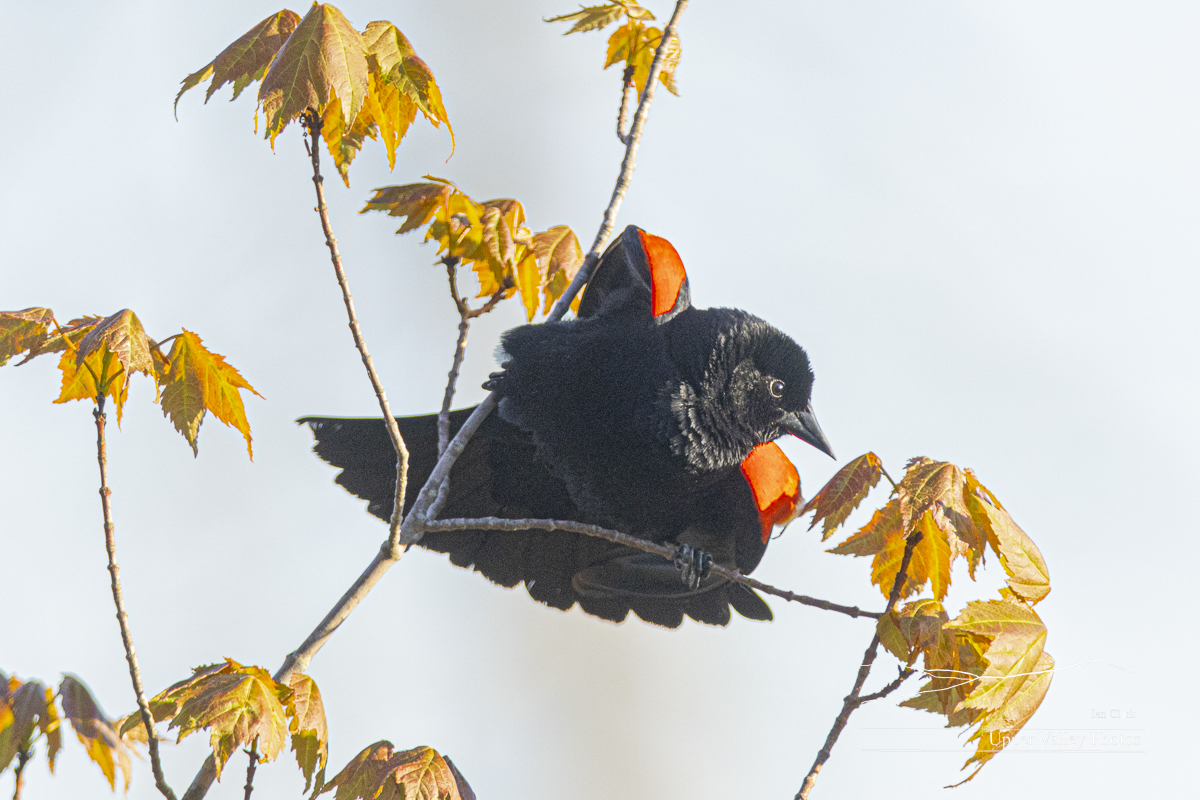

This morning I headed off to check in on the Westons. It became a beautiful morning after a chilly 38° start, with lots of nice fog on the water. The last few years, the Westons have been about a week behind the Middletons in mating and nesting. They must have a new calendar this year.
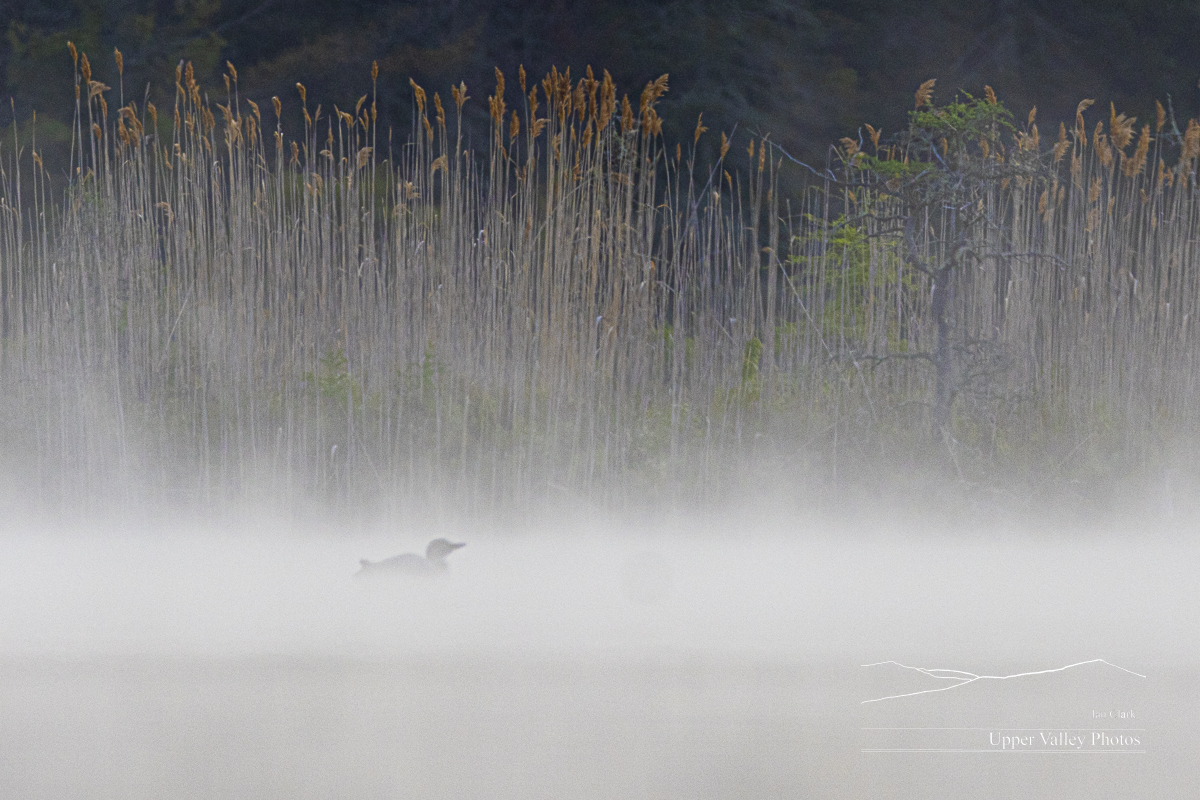


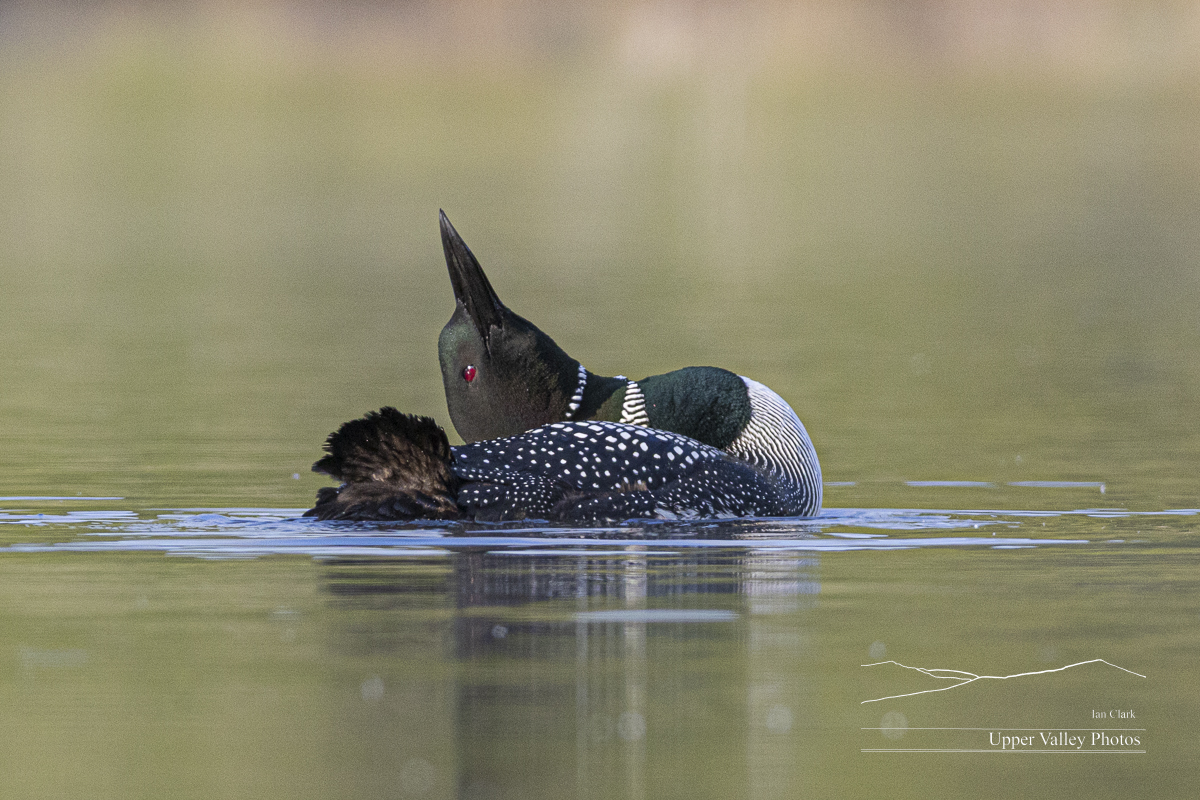
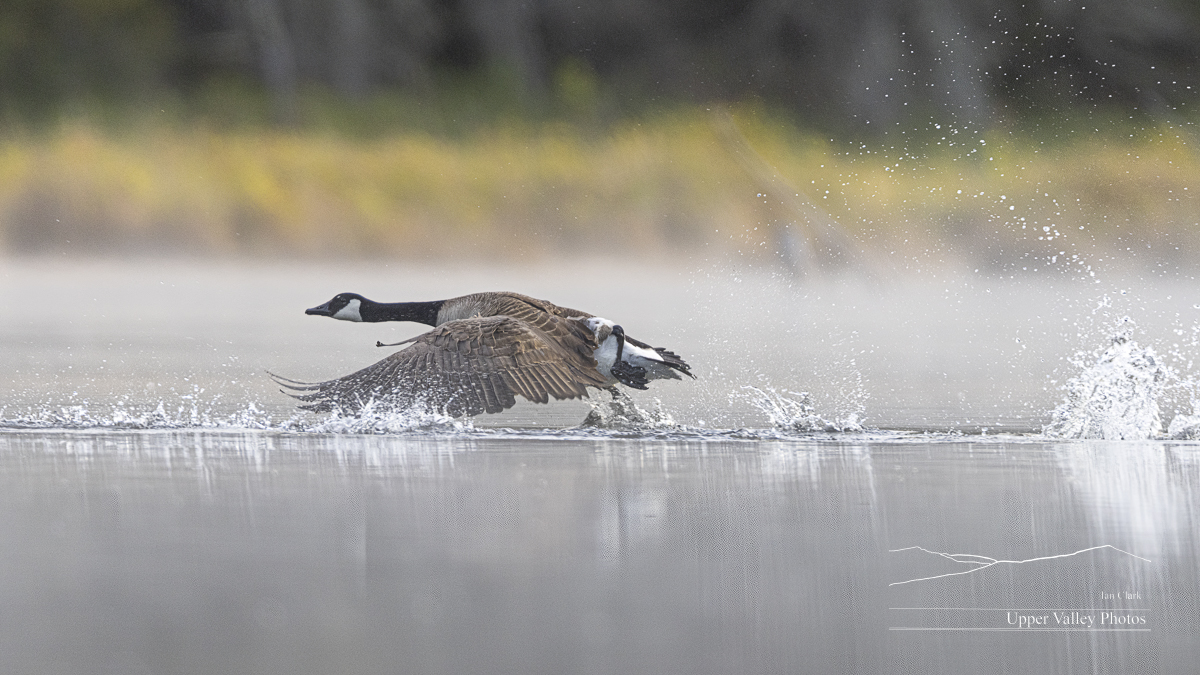

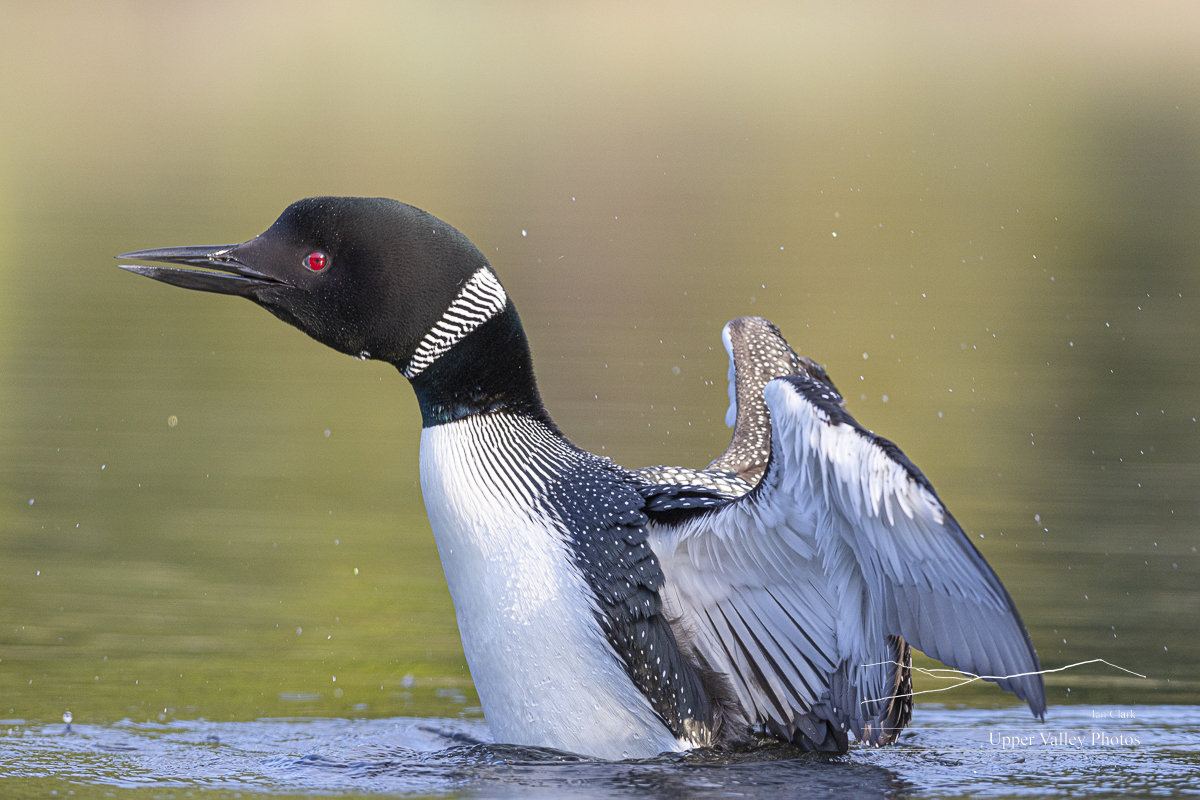

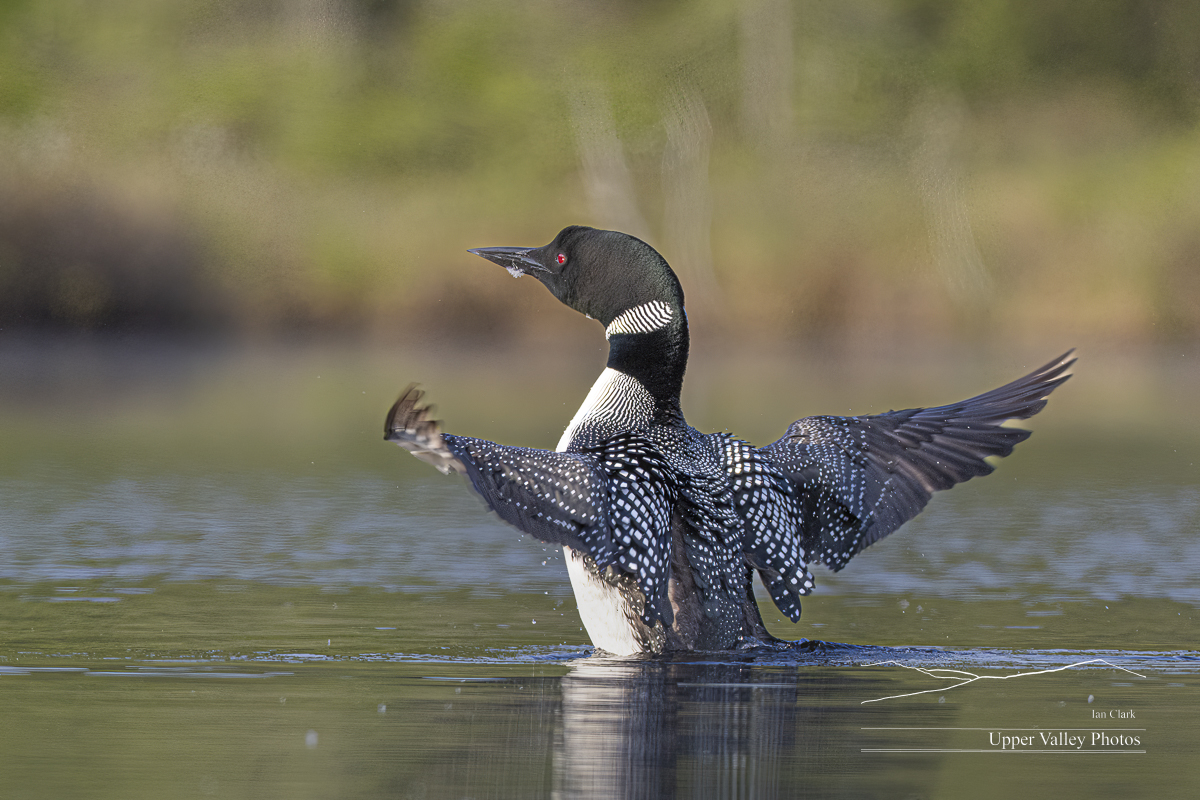
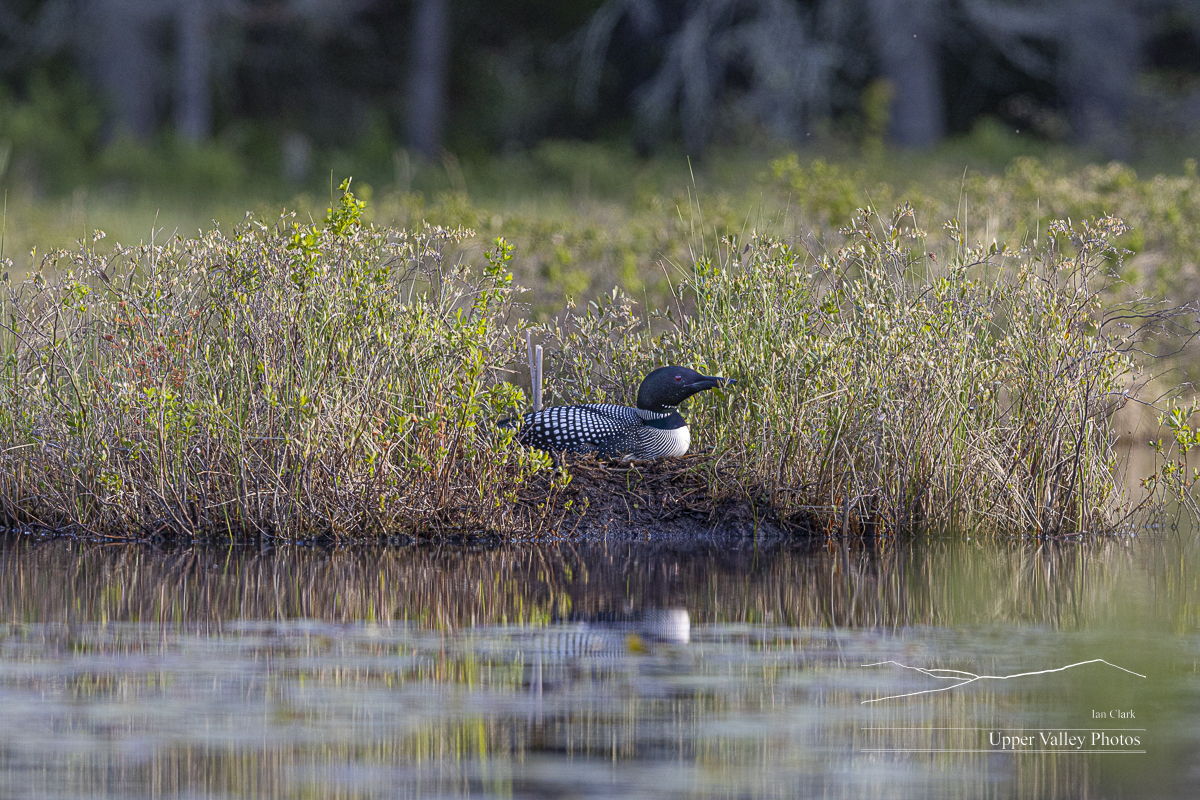
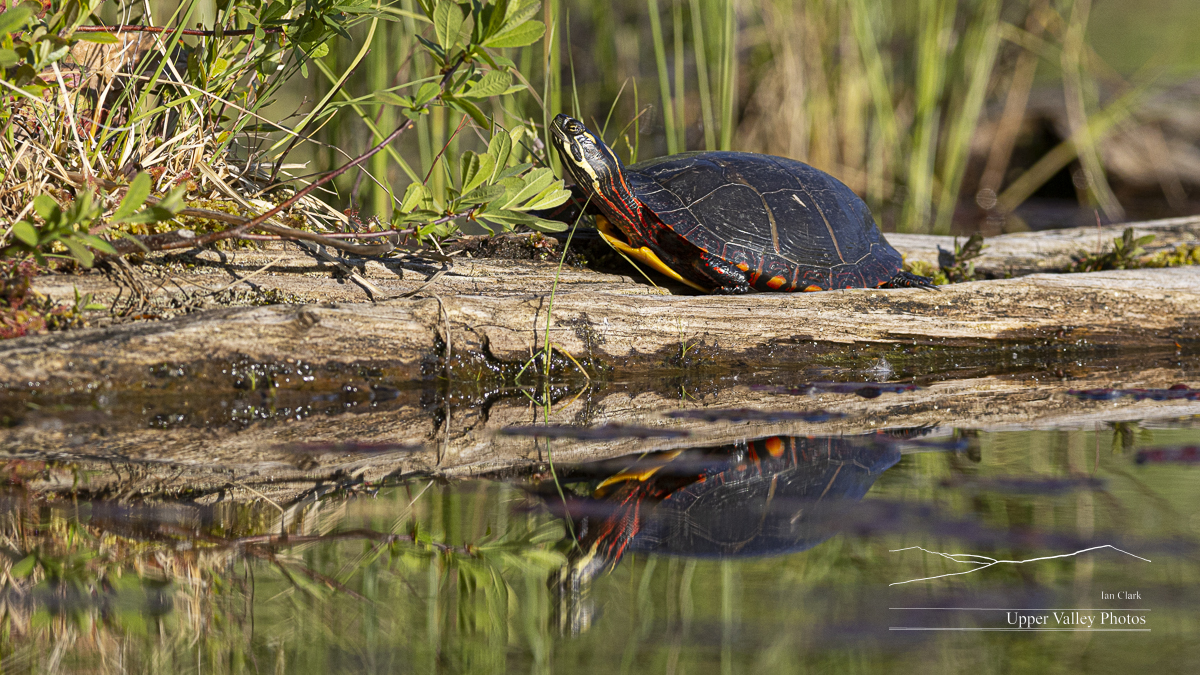
This handsome fellow was out celebrating World Turtle Day today. As good a reason to go wild as any!
It will be next week before I get a chance to get back to check on them. I’ll let you know what I find. Enjoy the holiday weekend and please remember the U.S. military personnel who gave their lives to protect us
Unexpected Action on the Middleton’s Pond
The forecast for this morning called for rain. I happily planned to sleep in. Owing two huskies often thwarts such plans. When I let them out, there were stars to be seen. There was a thick fog over the Connecticut River, but clear skies above. The Middleton’s – the loons that live on the pond between the other two ponds – pond is a few hundred feet above the Connecticut. Hoping for some mood shots, I packed up and headed out.
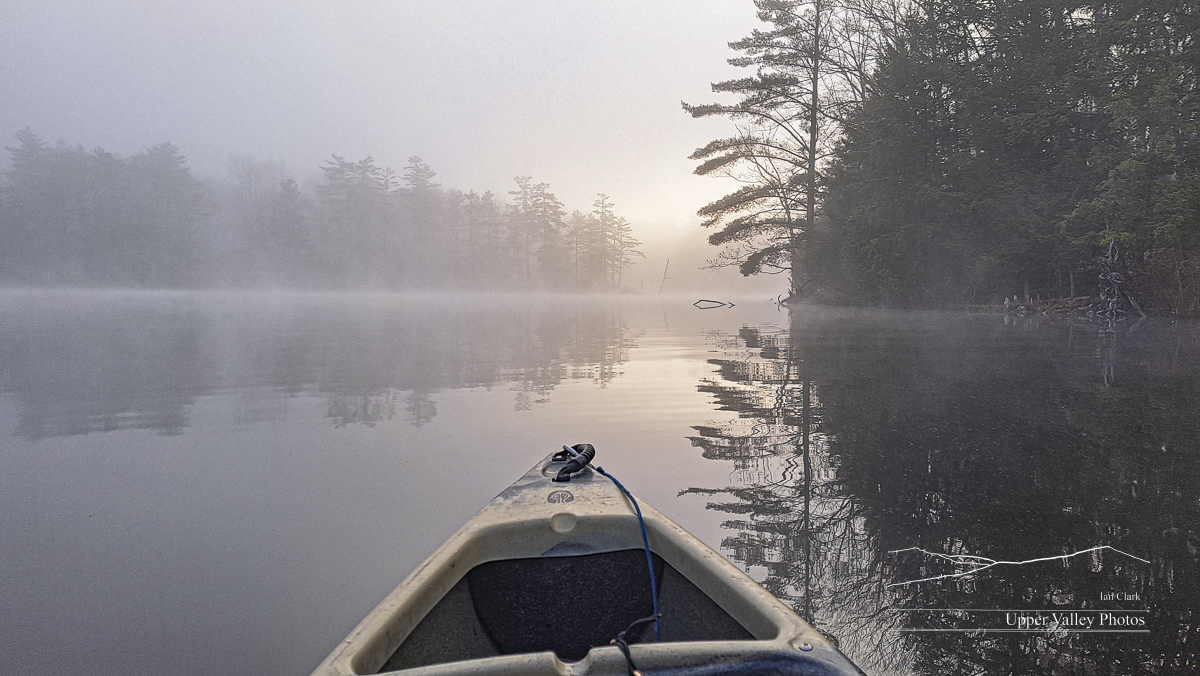
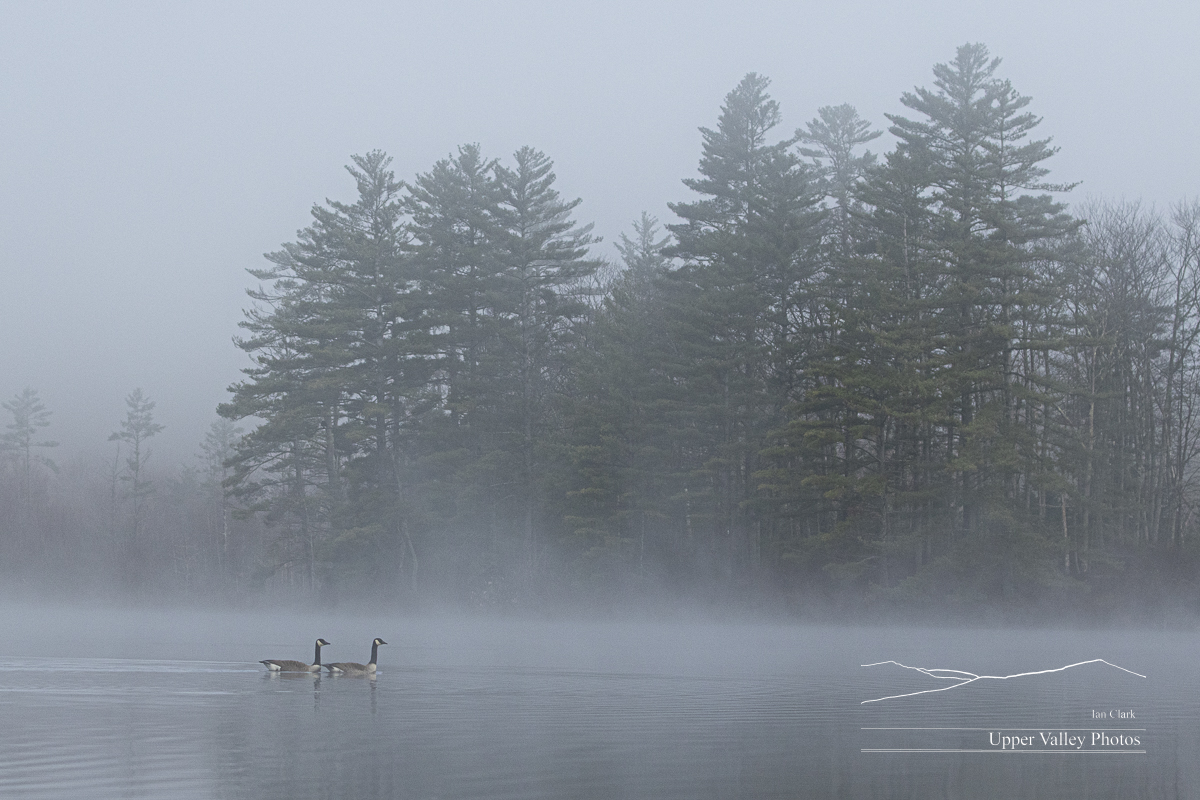
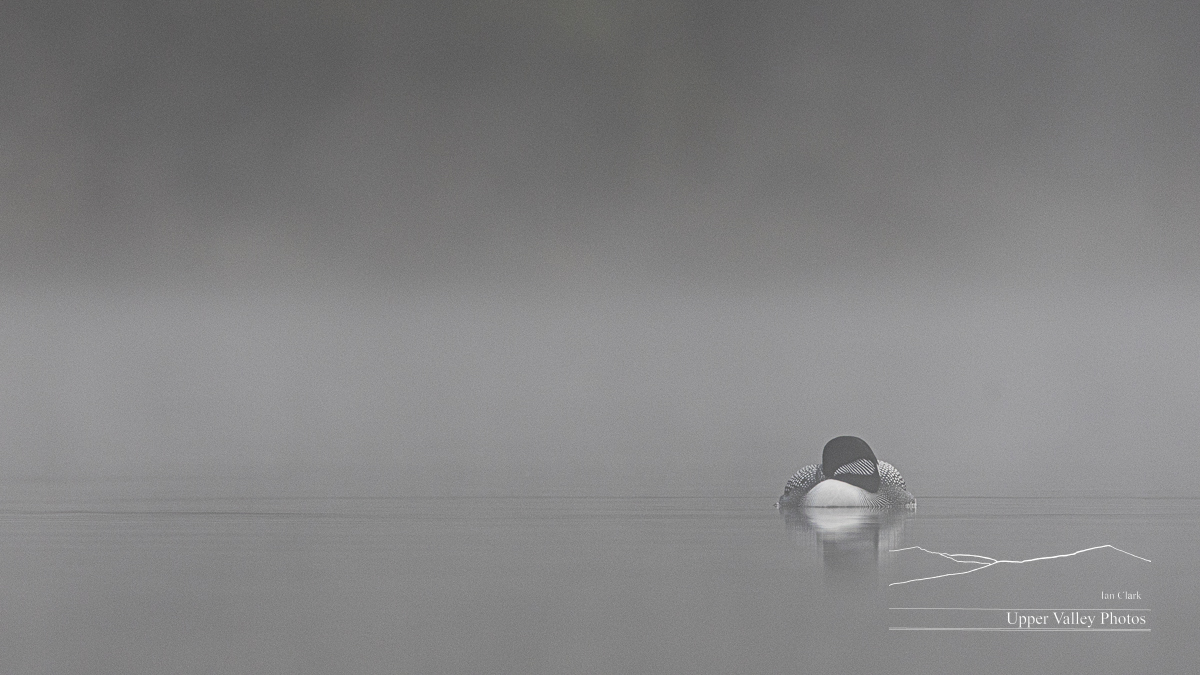
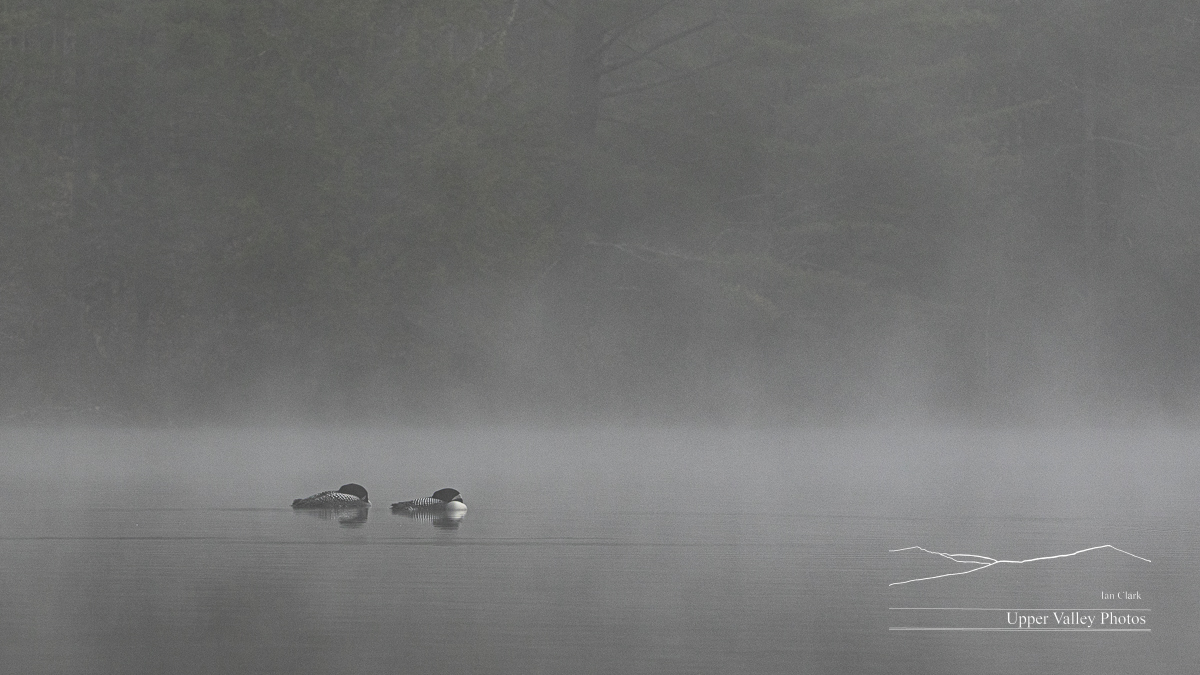
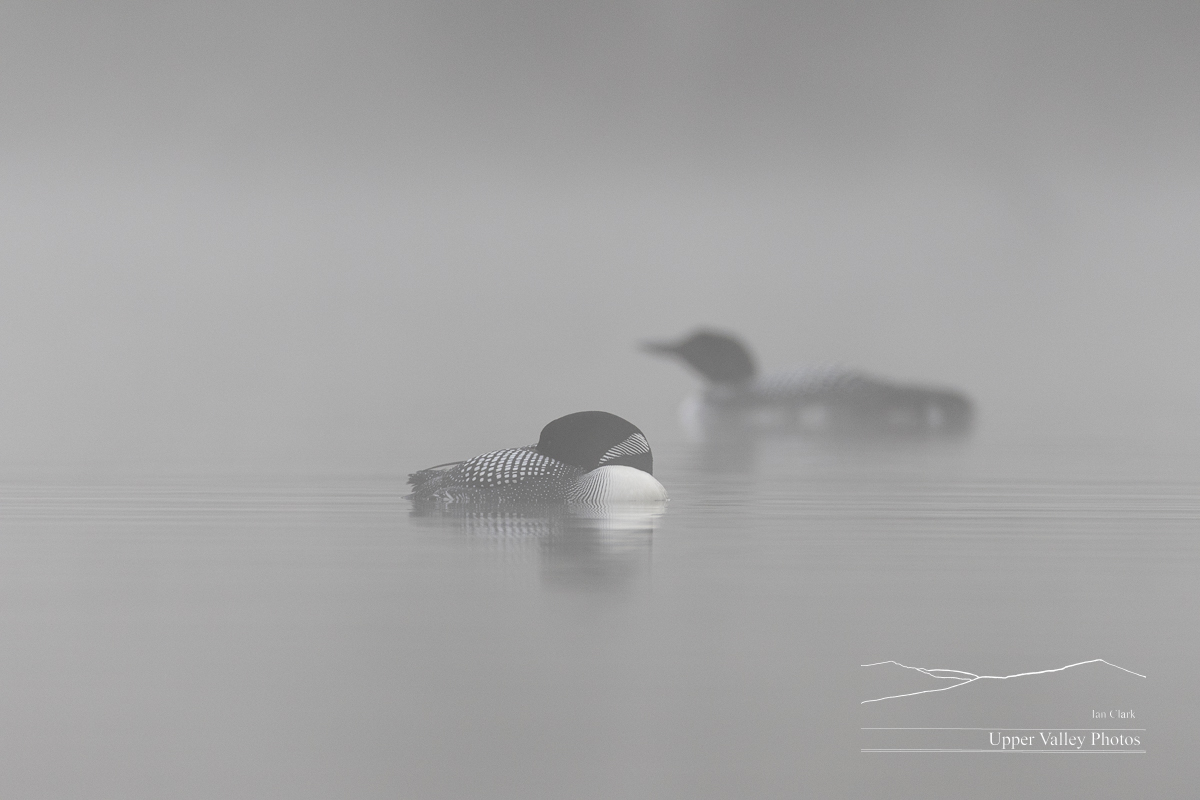
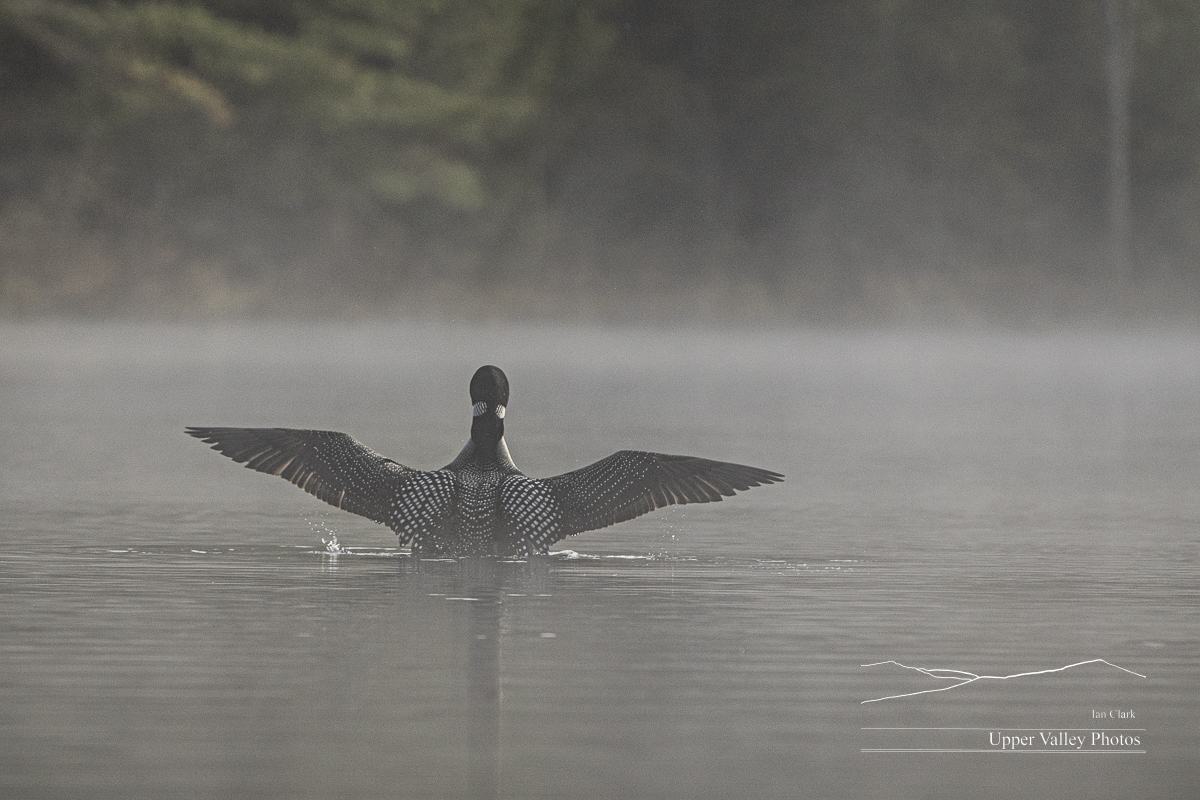
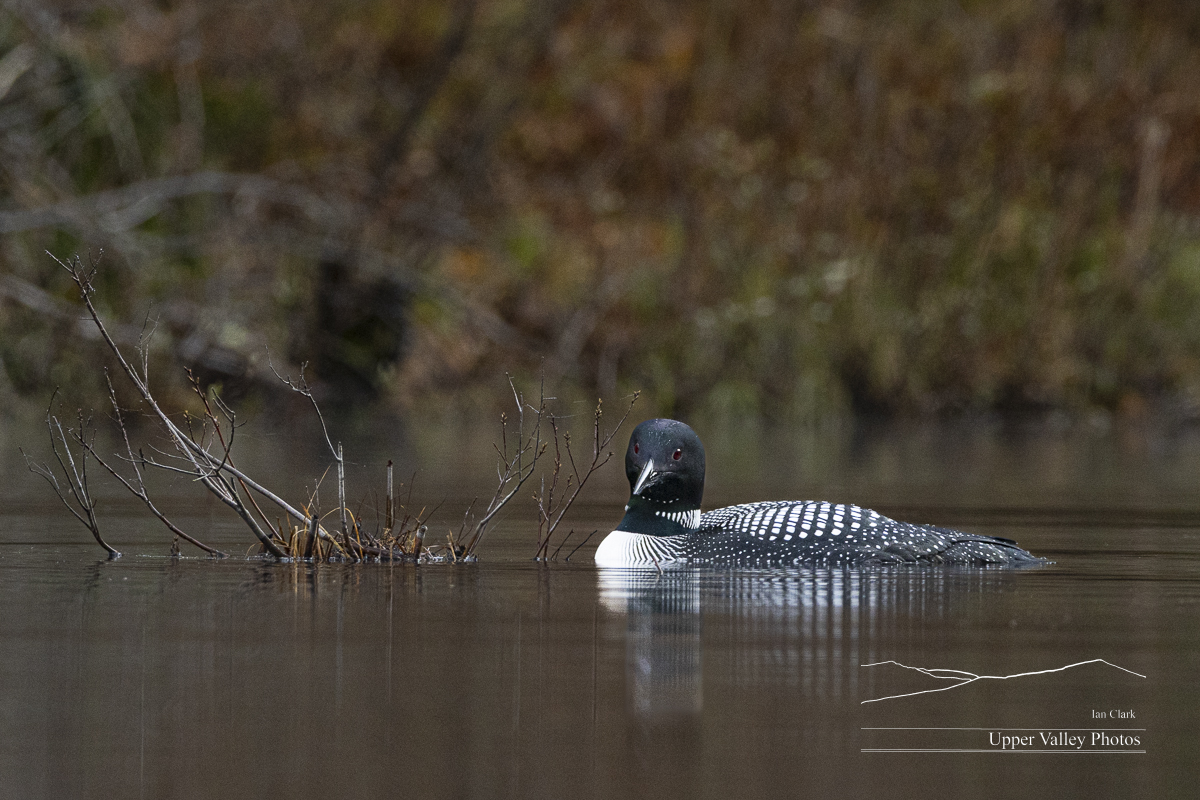
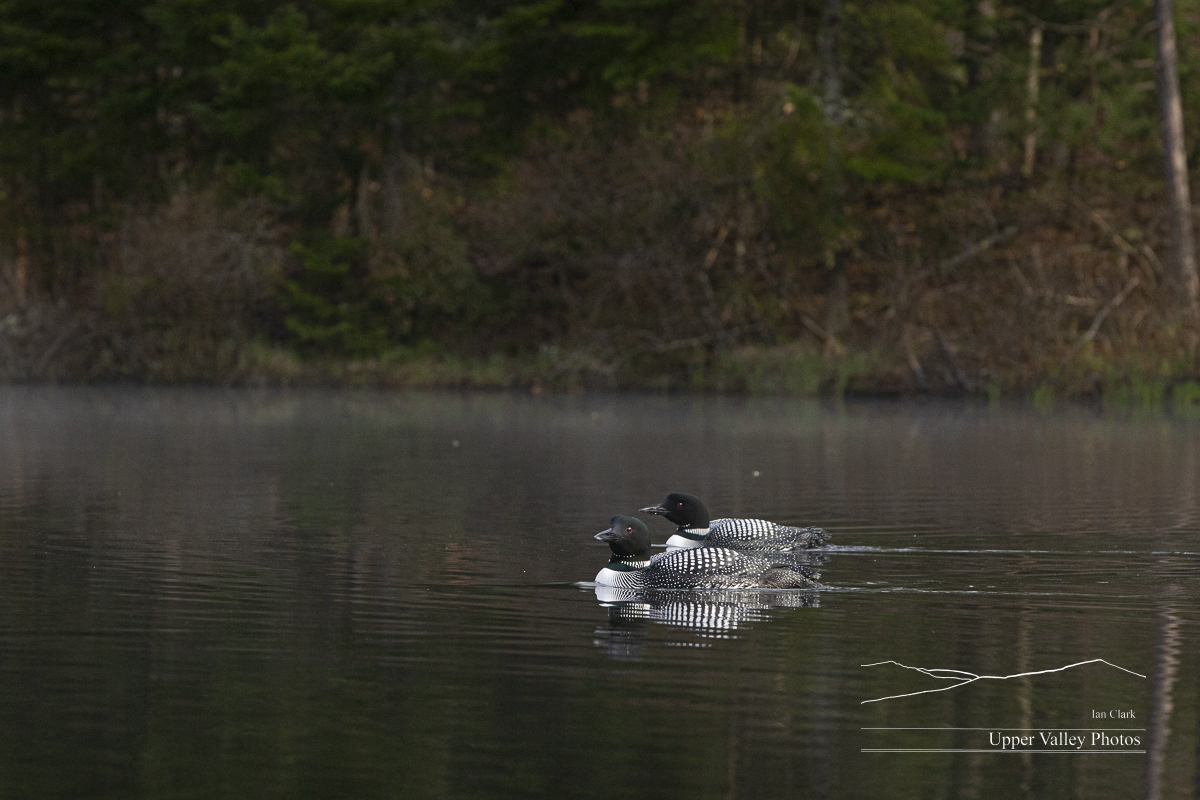


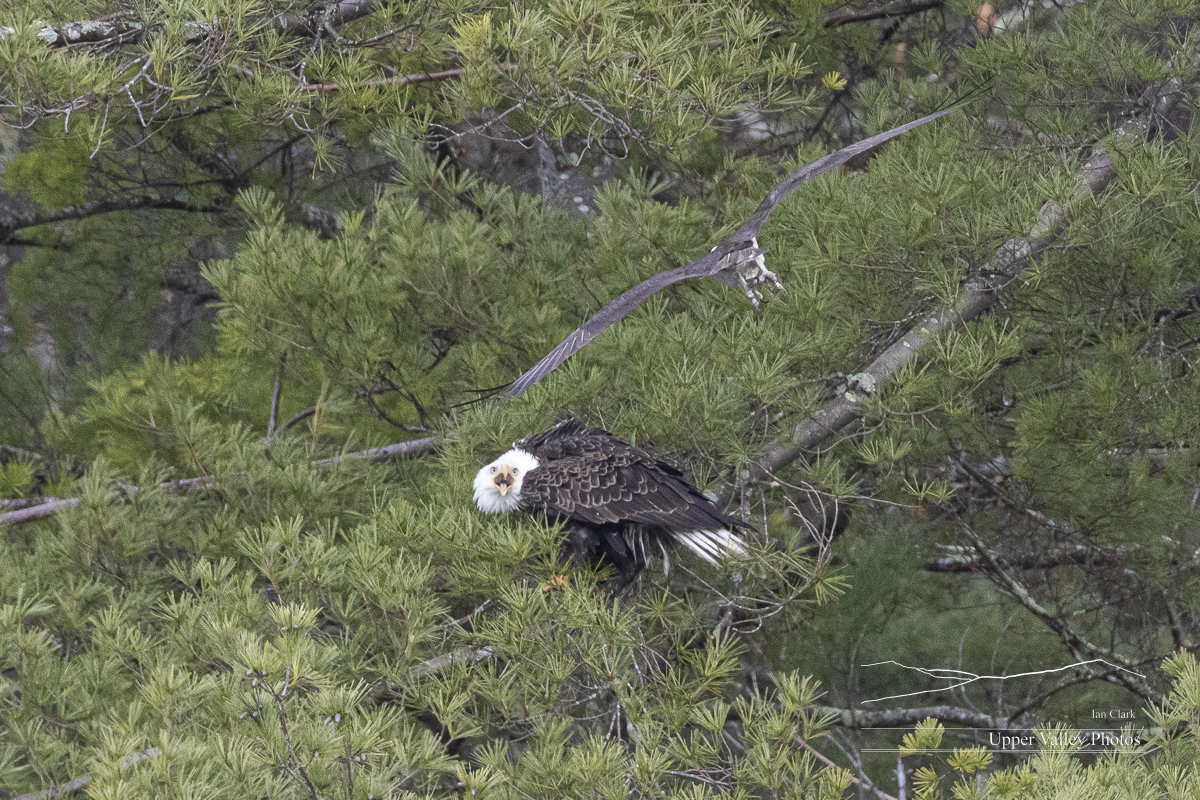
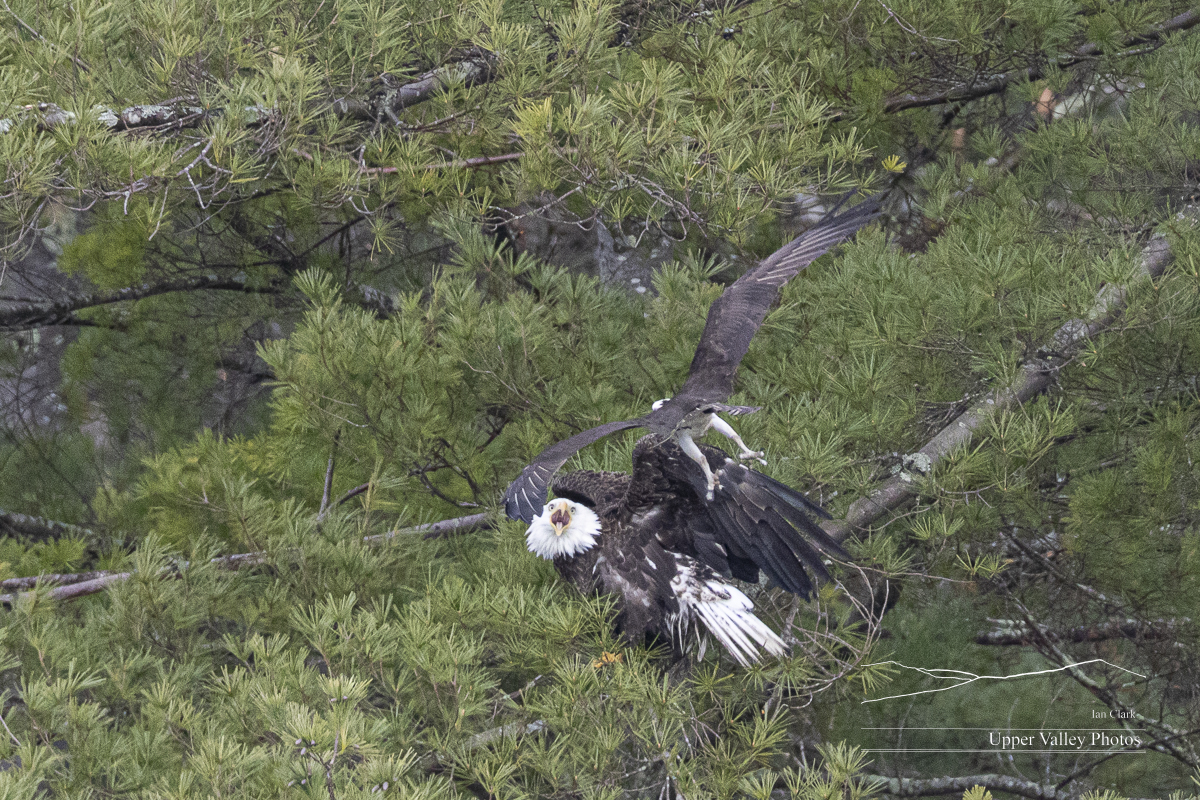
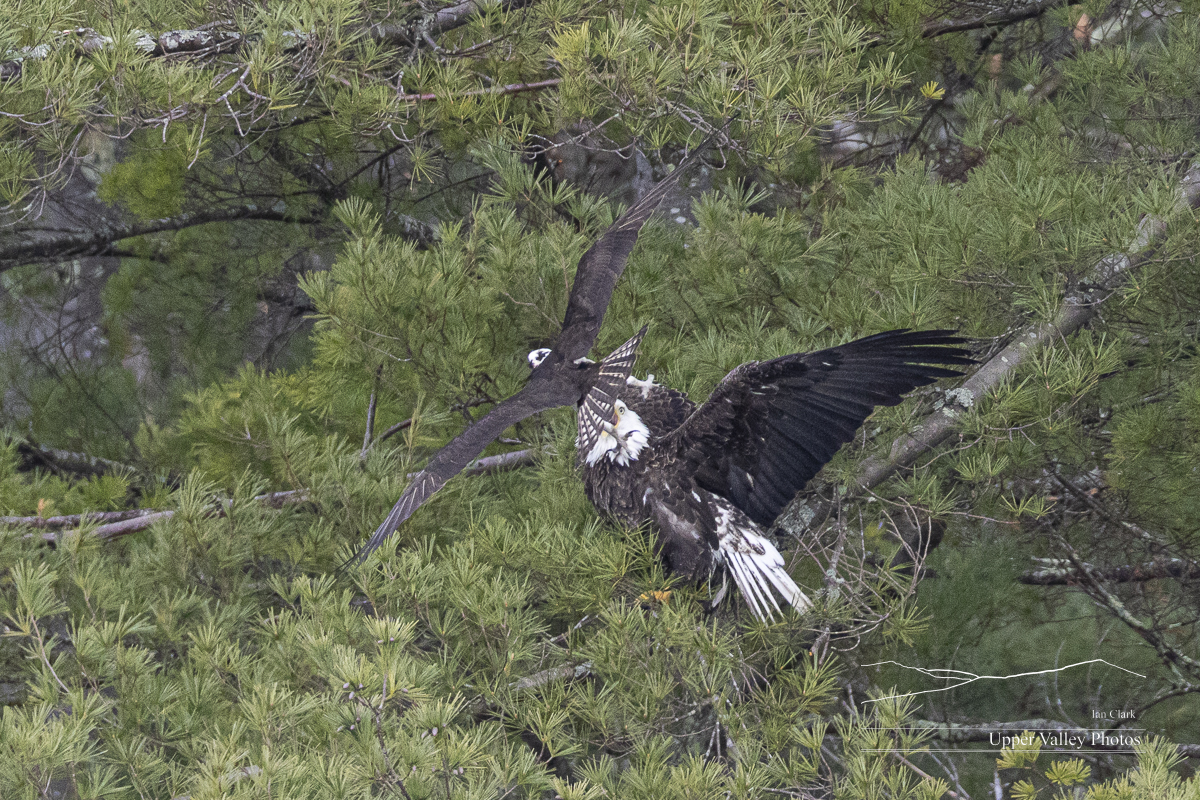
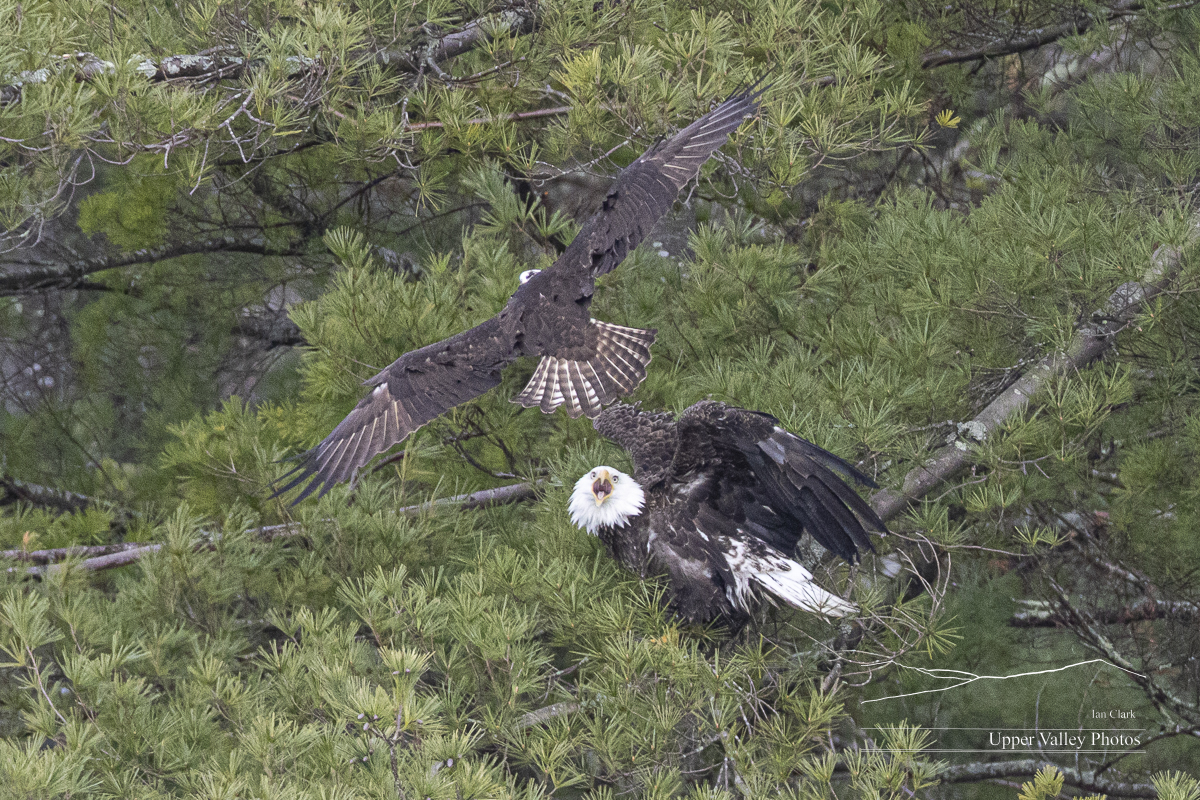
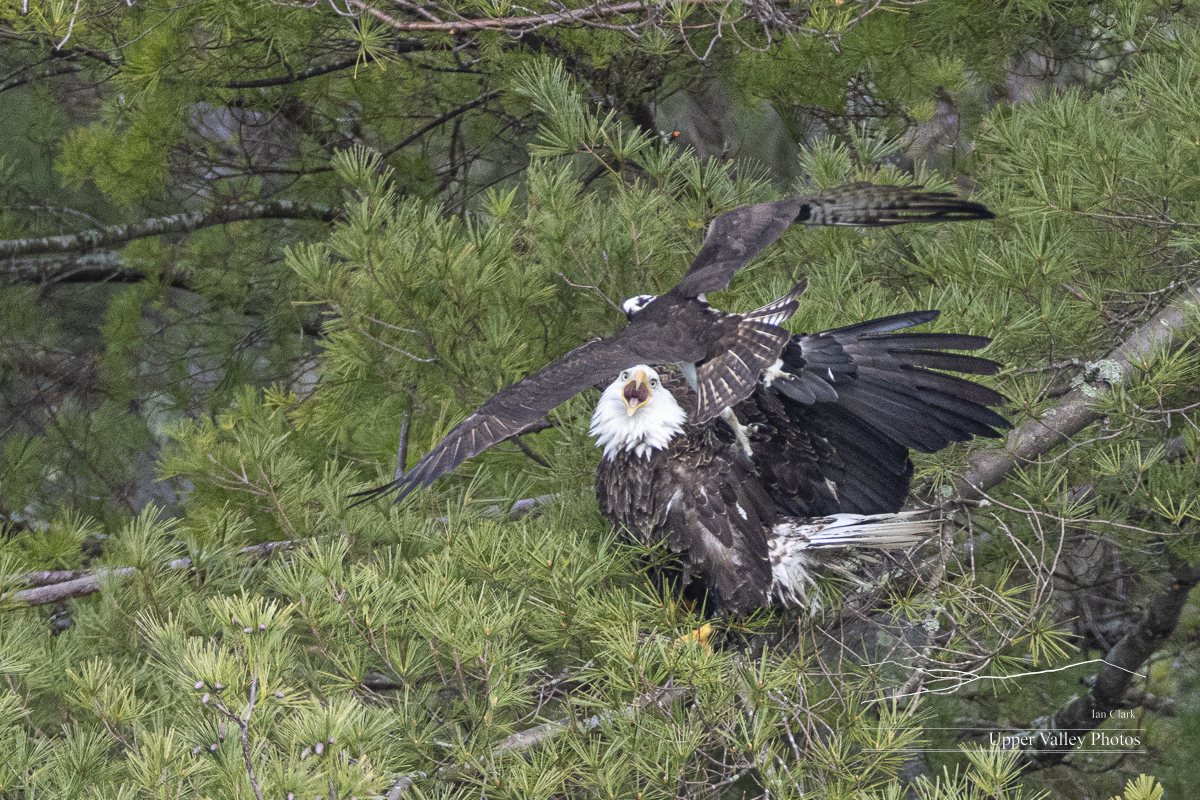
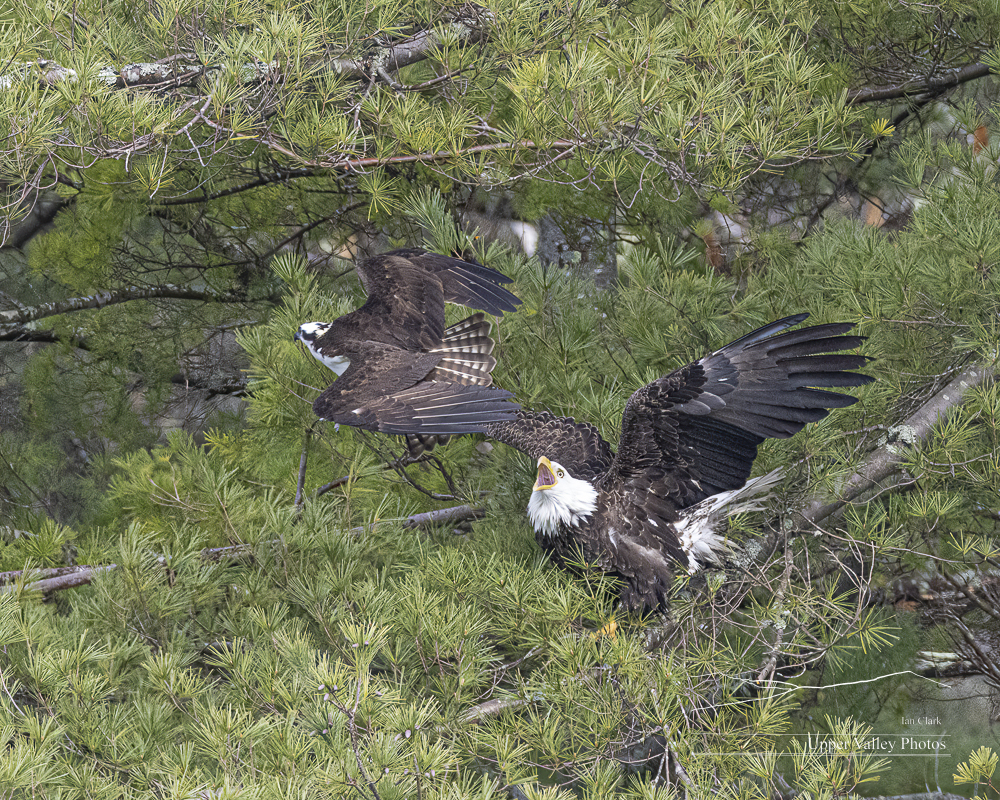
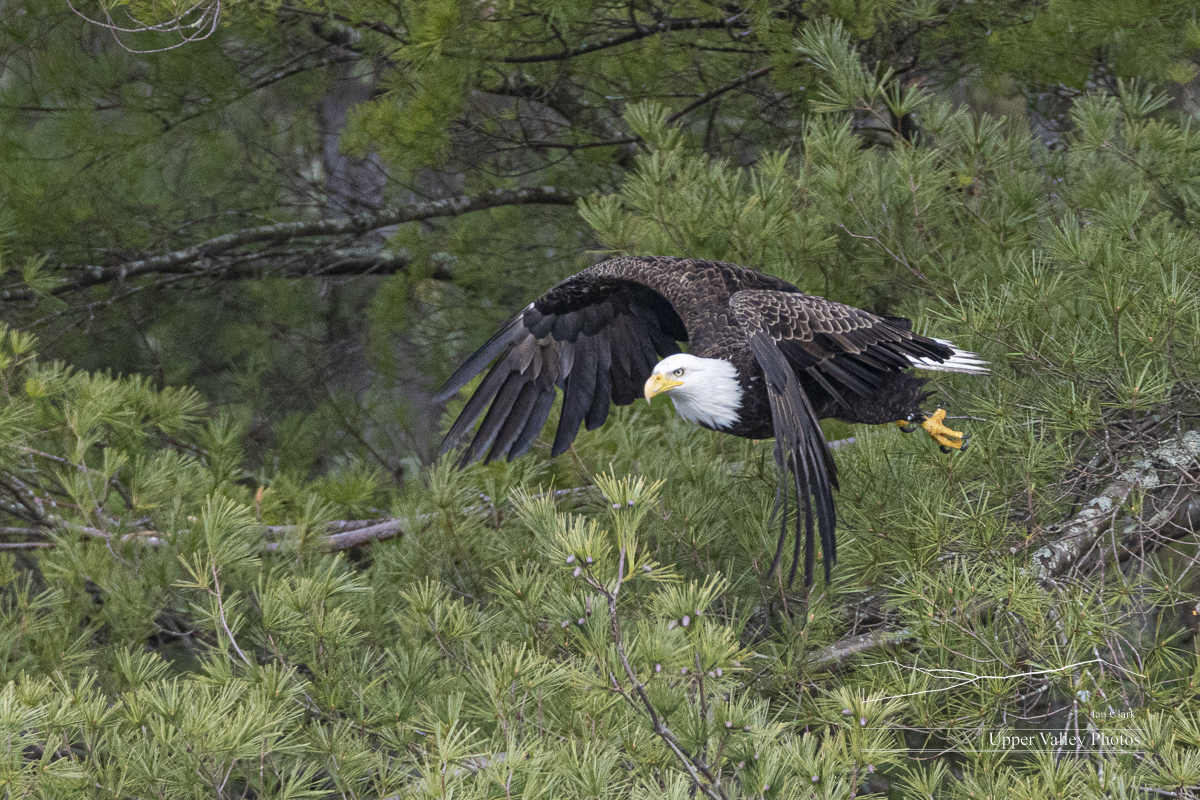
The loons would be rooting for the osprey. Osprey’s diet is almost exclusively fish, they leave the loons alone, while eagles are a very real threat to loon families.
My luck with the weather ran out. A few raindrops remined me that the huskies needed their morning run. I had the boat packed up and was pulling out of the parking spot when the rain hit. The huskies enjoyed romping in the mud when they got their run.
Another Visit With The Loons
This morning provided better weather for visiting the loons than Friday. I headed out before dawn to see what they were up to. The chicks were ten weeks old this weekend. They’re mostly foraging for themselves now, they can make prolonged dives. But they’re still happy to have their parents rustle up a meal for them.
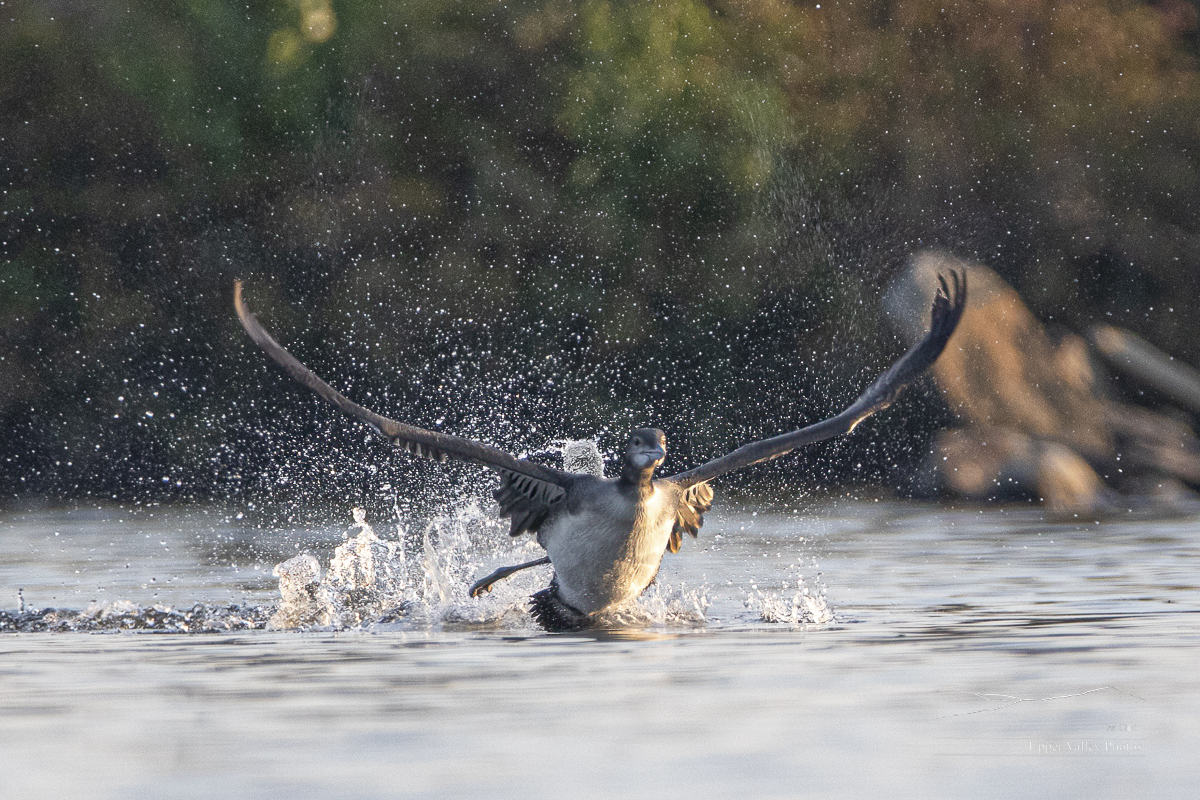

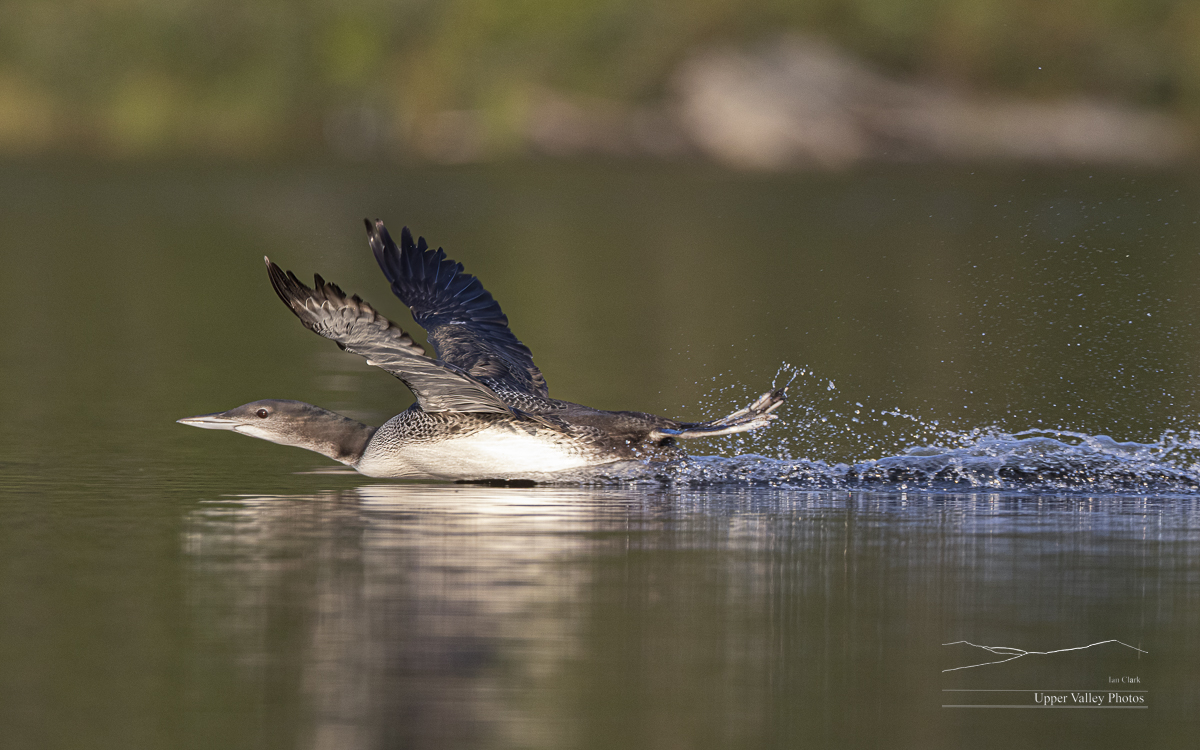
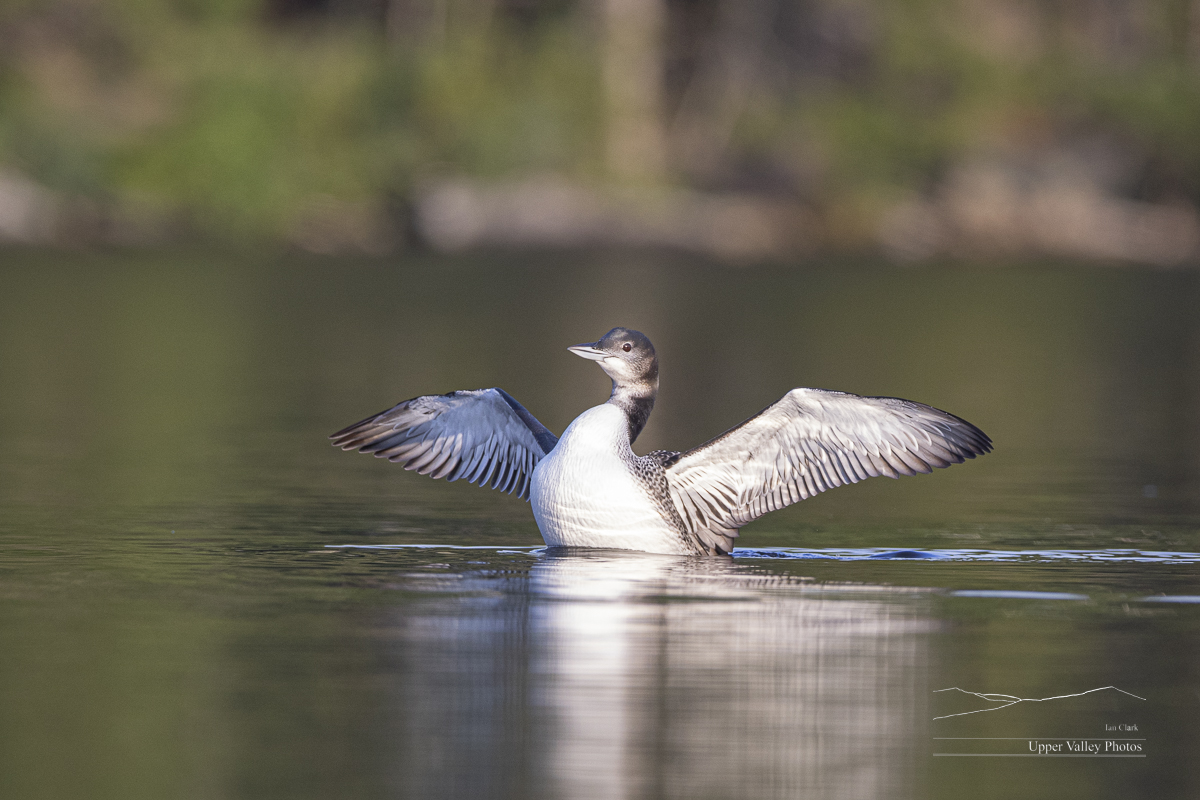
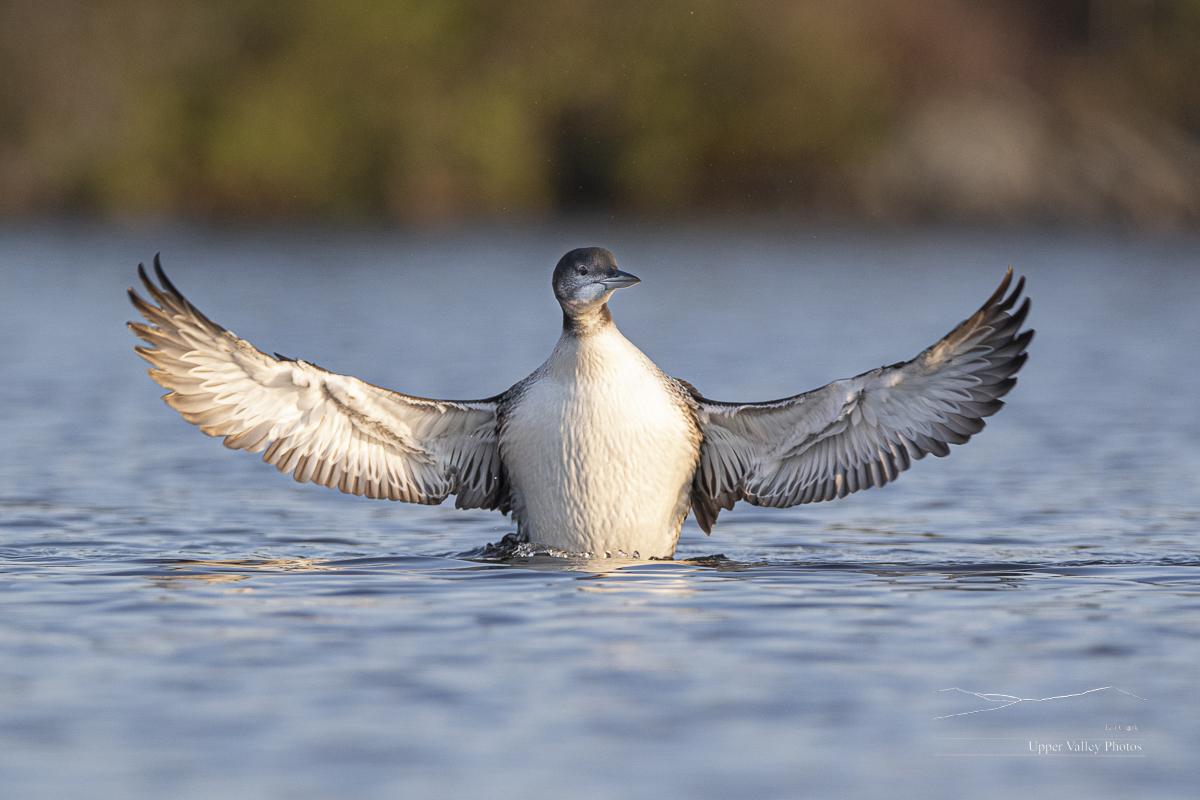
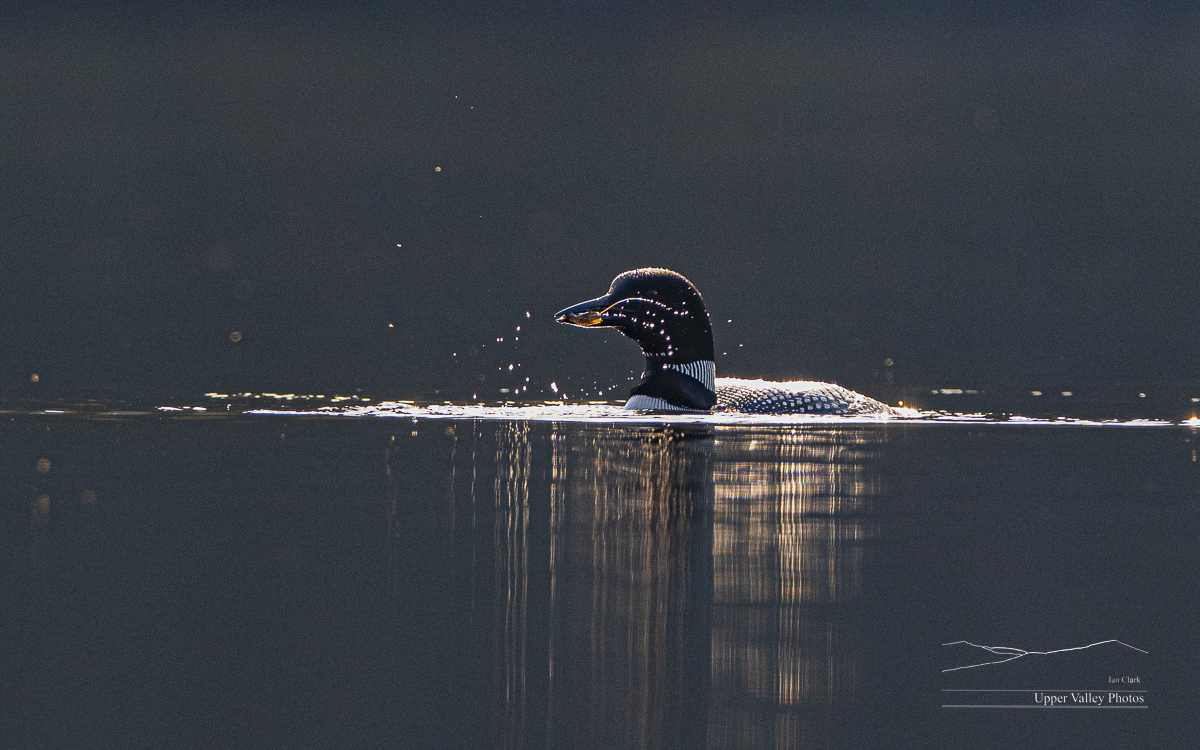

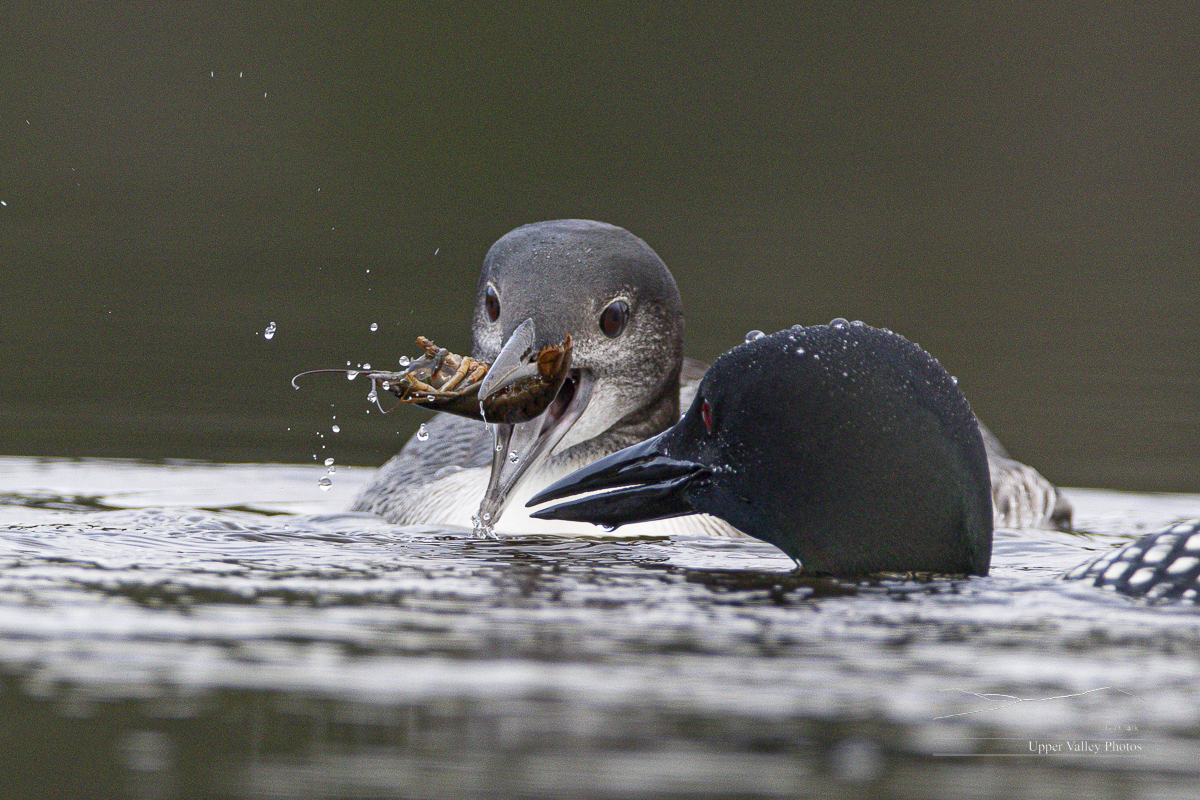
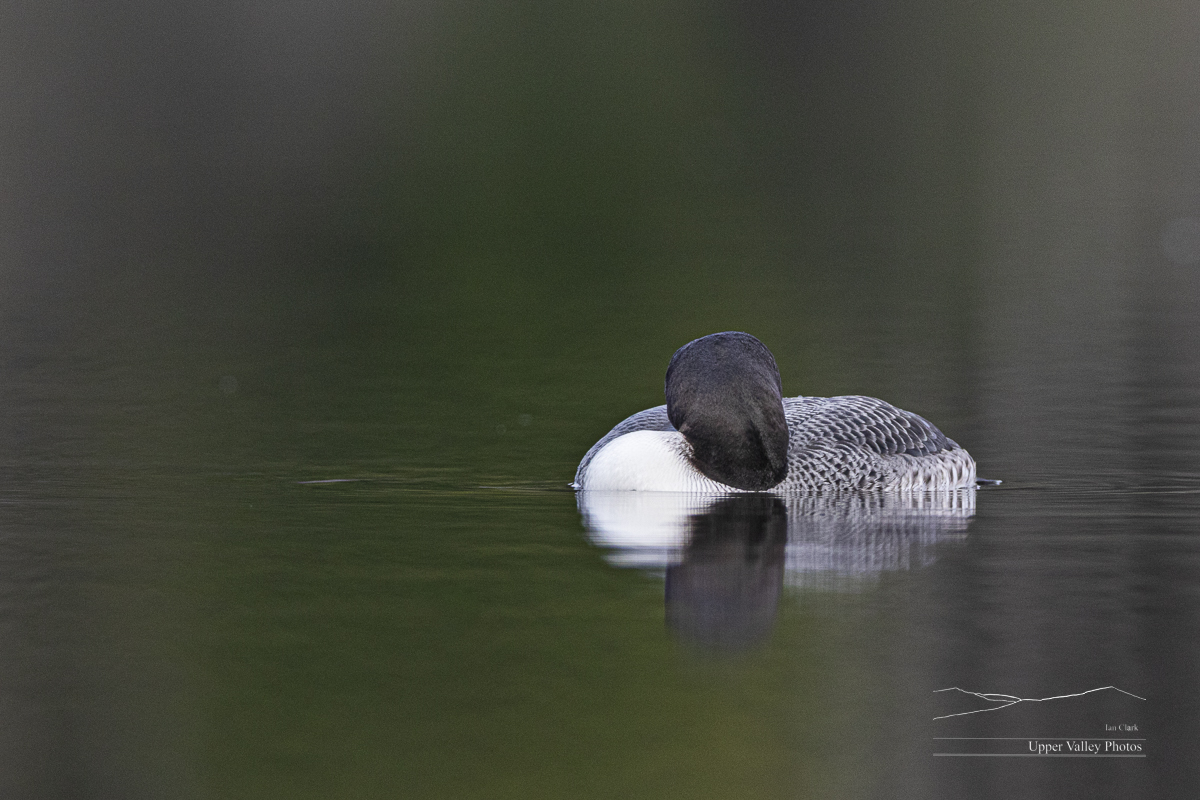

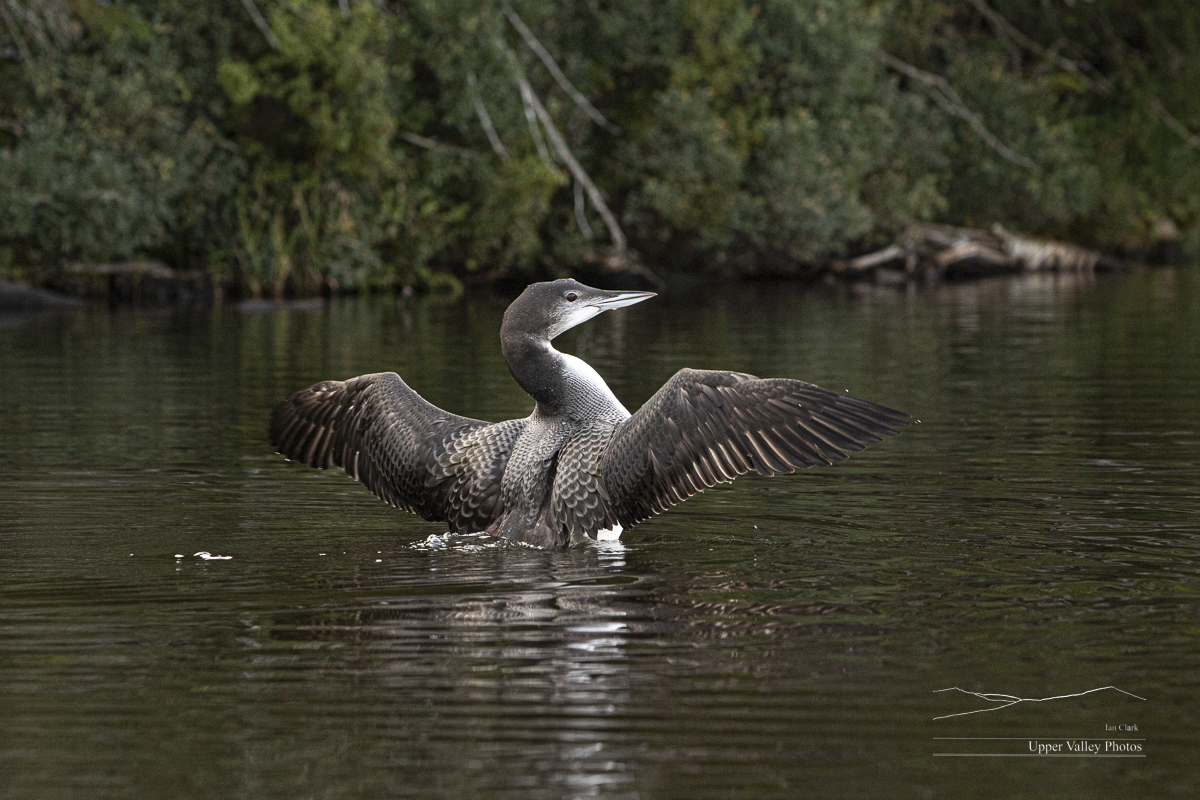
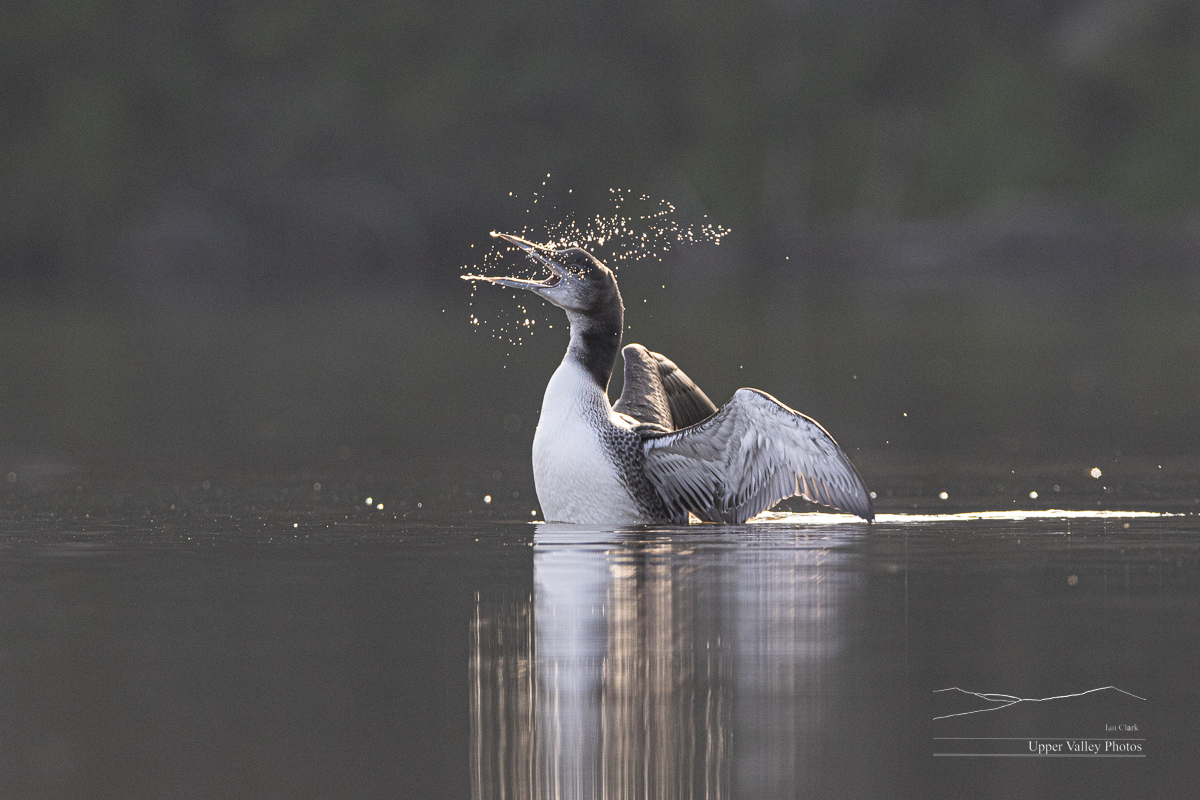
Know an organization in need of programs? I’ve got several PowerPoint shows, one on the surviving steam locomotives in the US, visiting the puffins on Machias Seal Island, one on getting started with wildlife photography and one on loons. For educators, I’ve got a program about career opportunities in photography. Email for more info.
